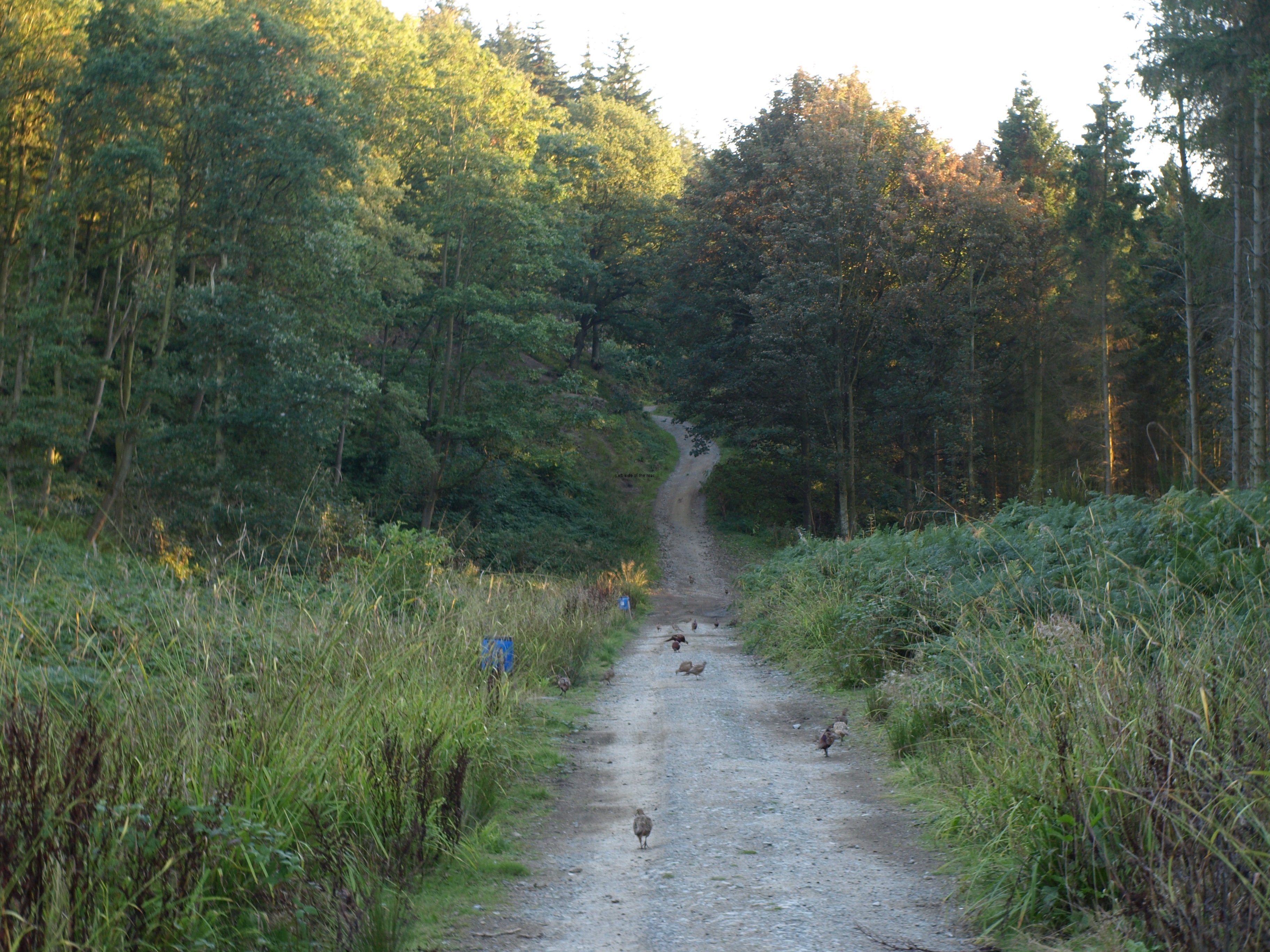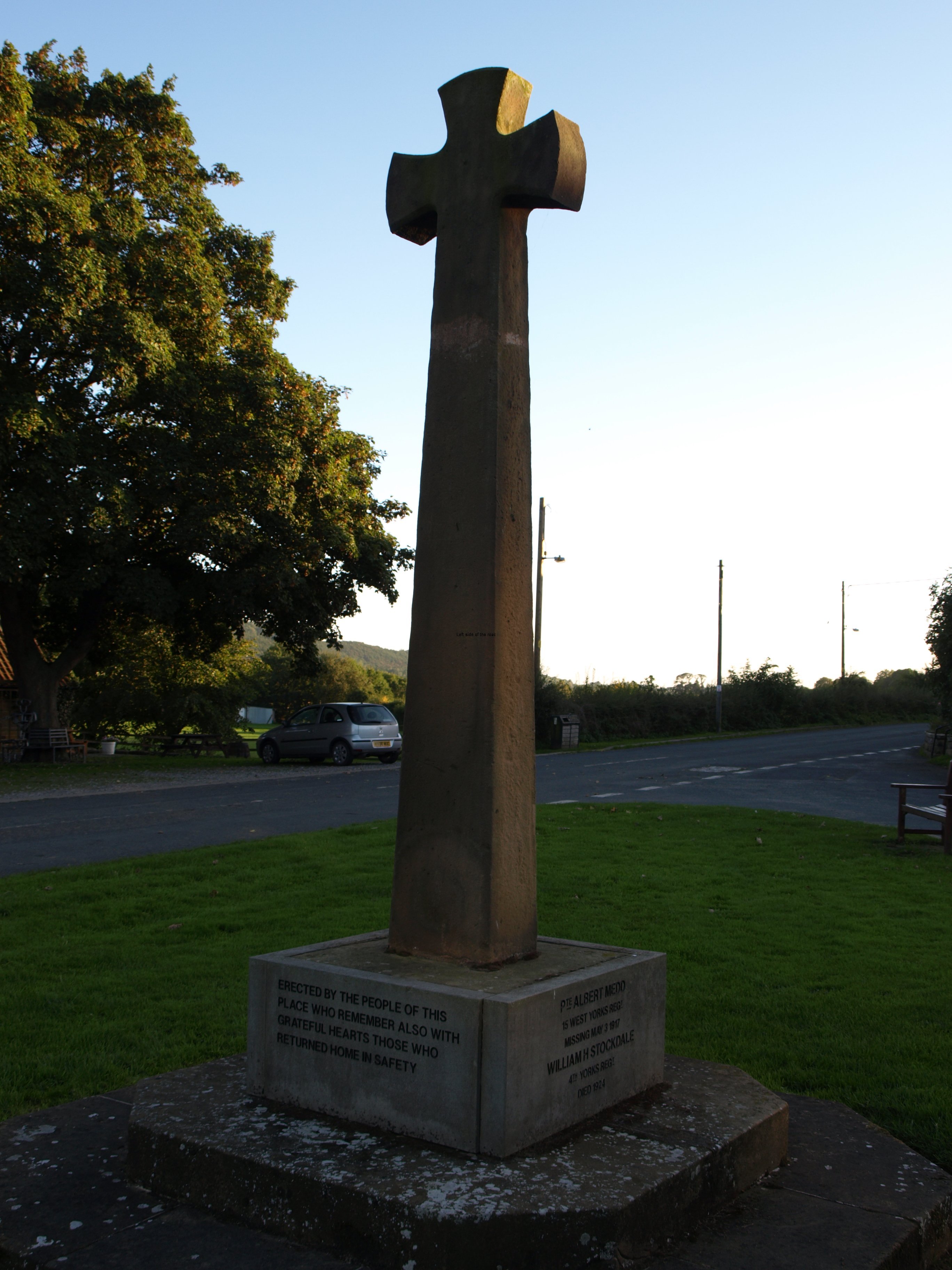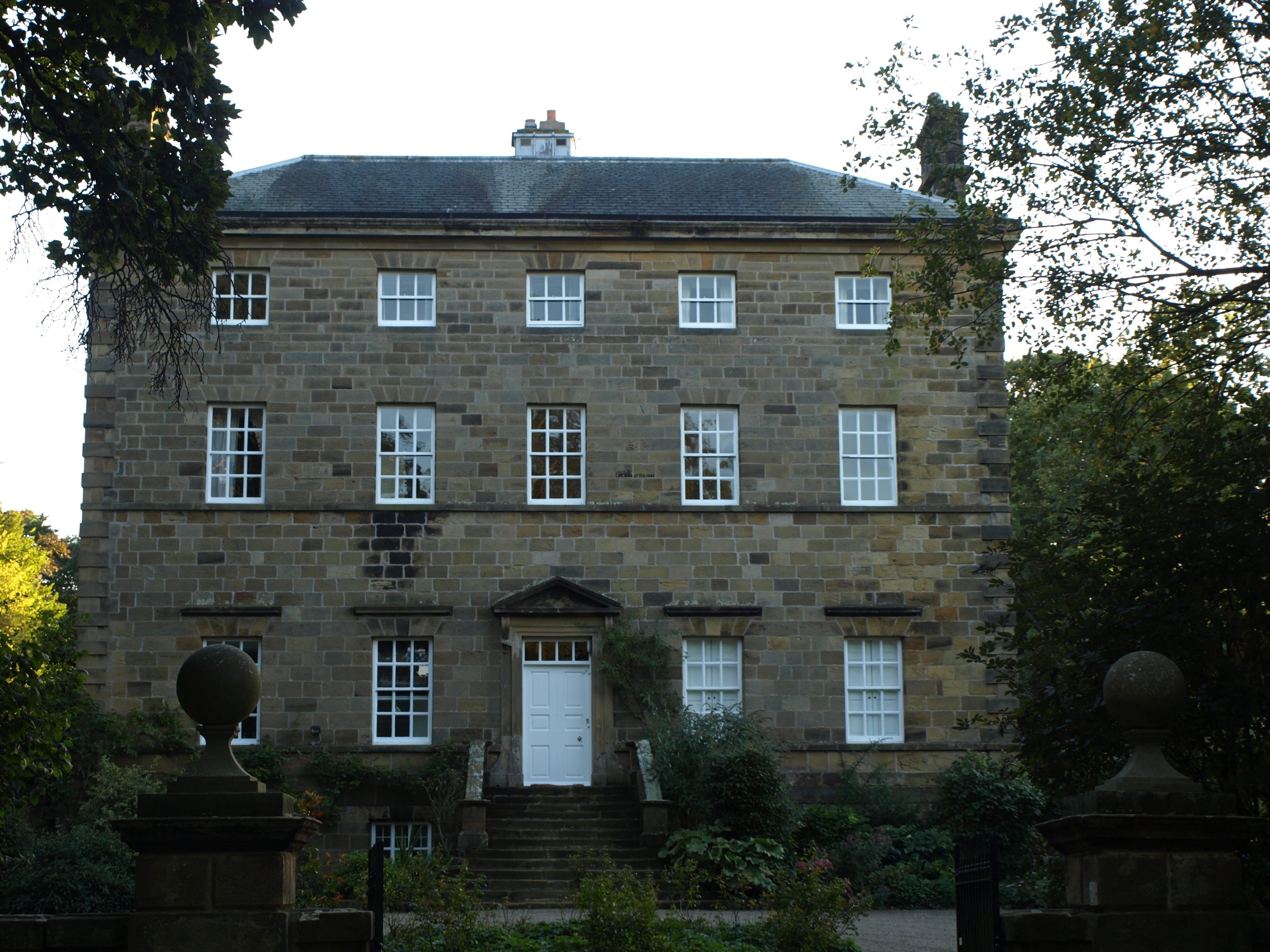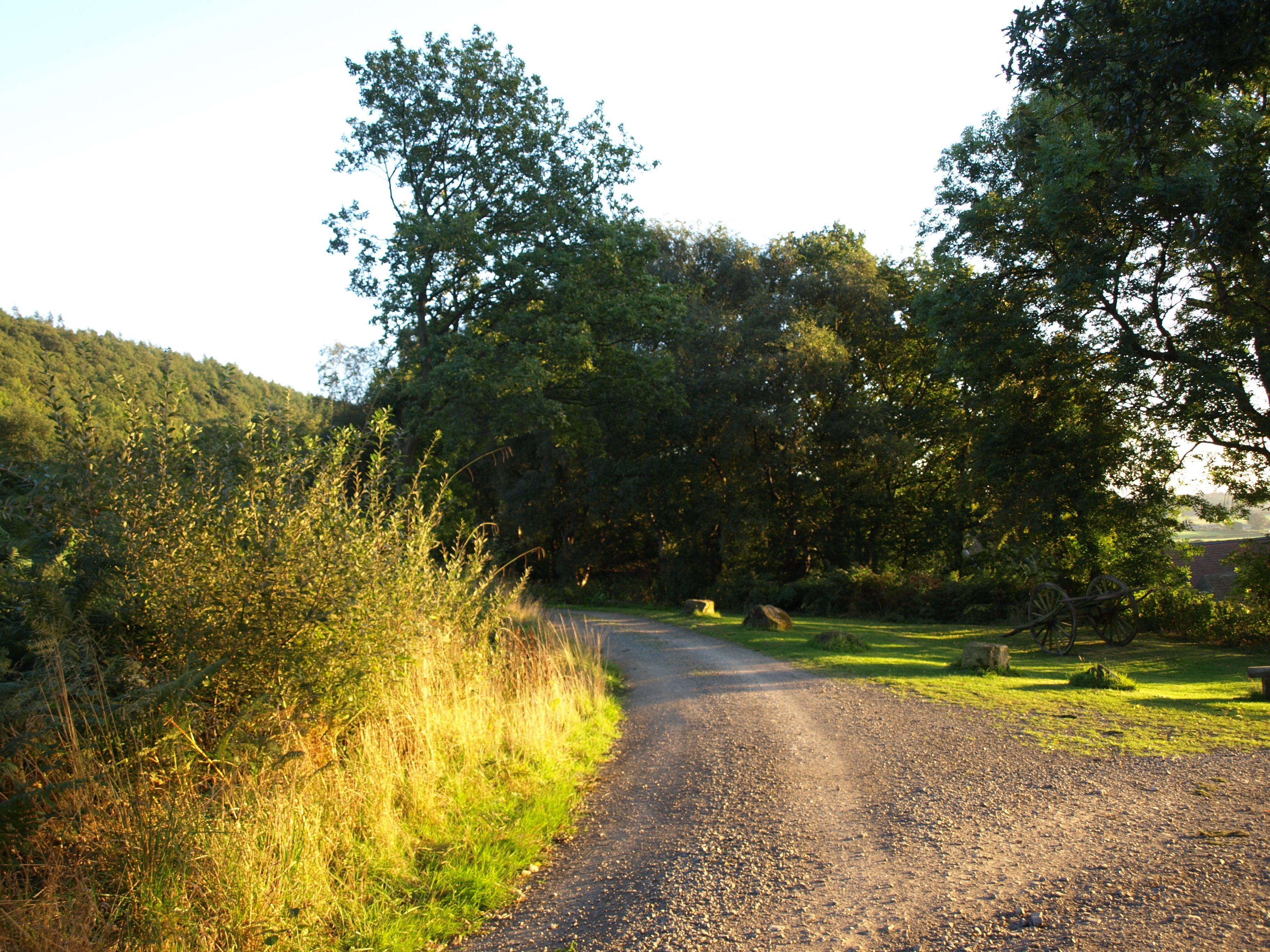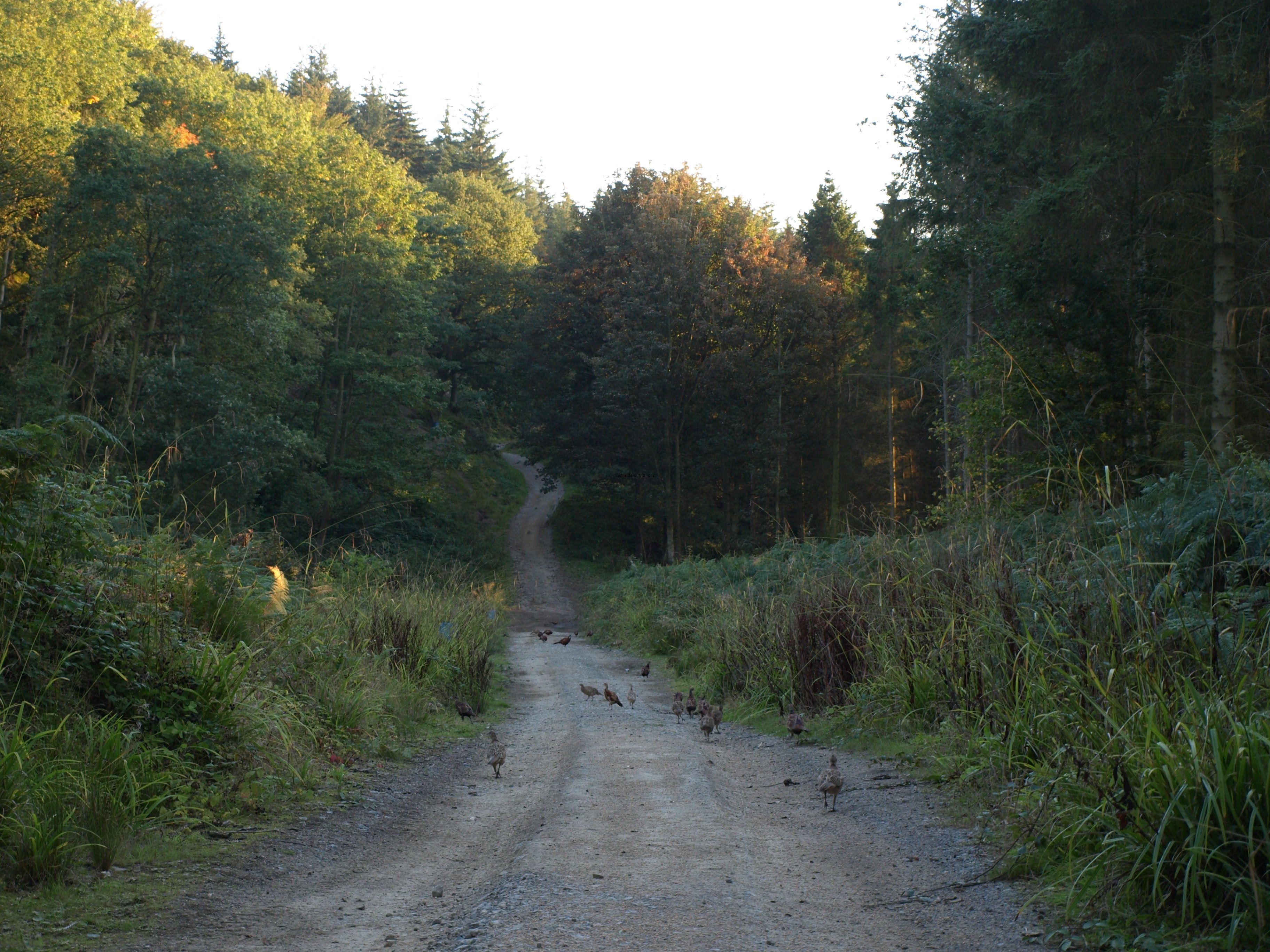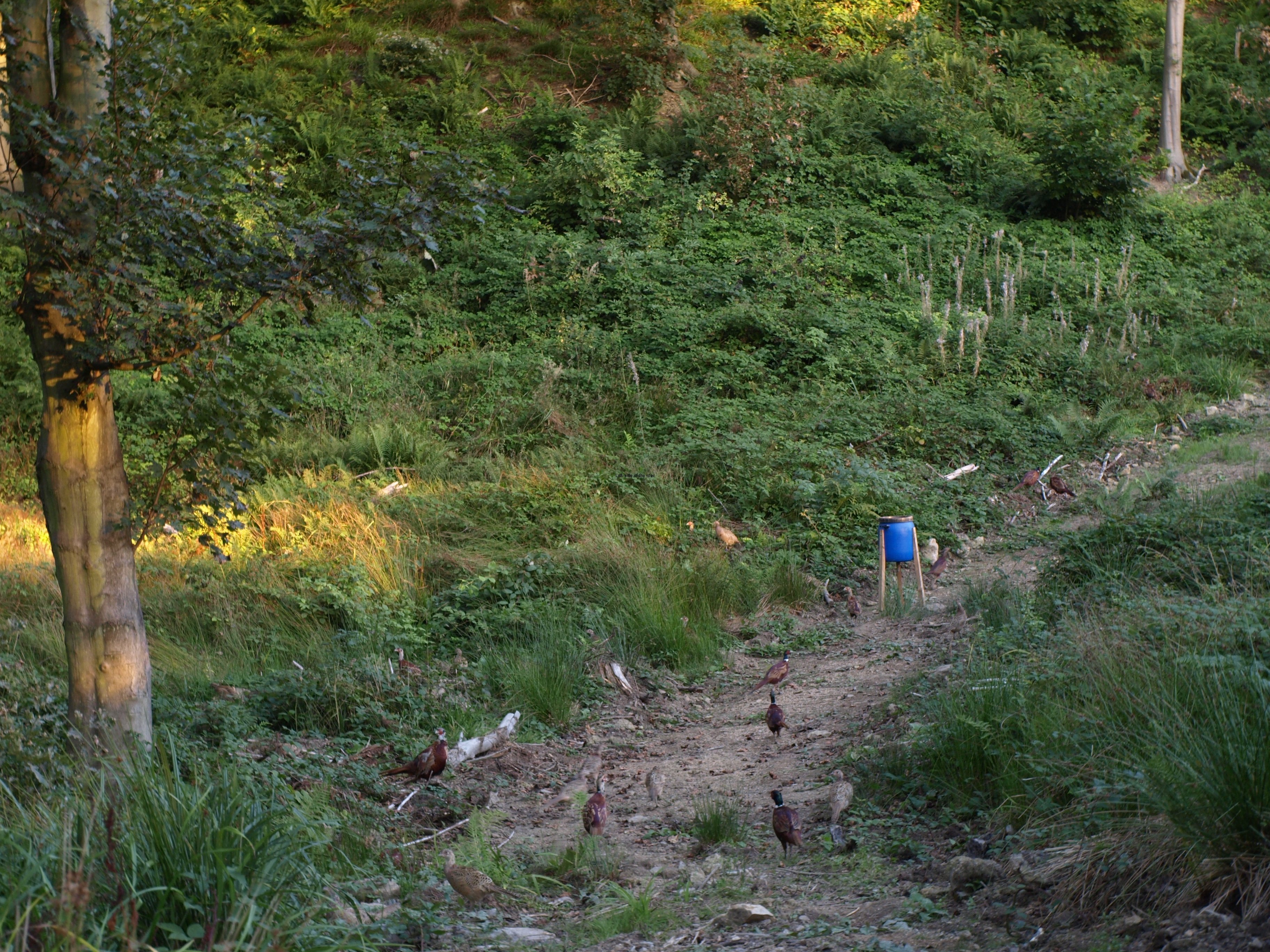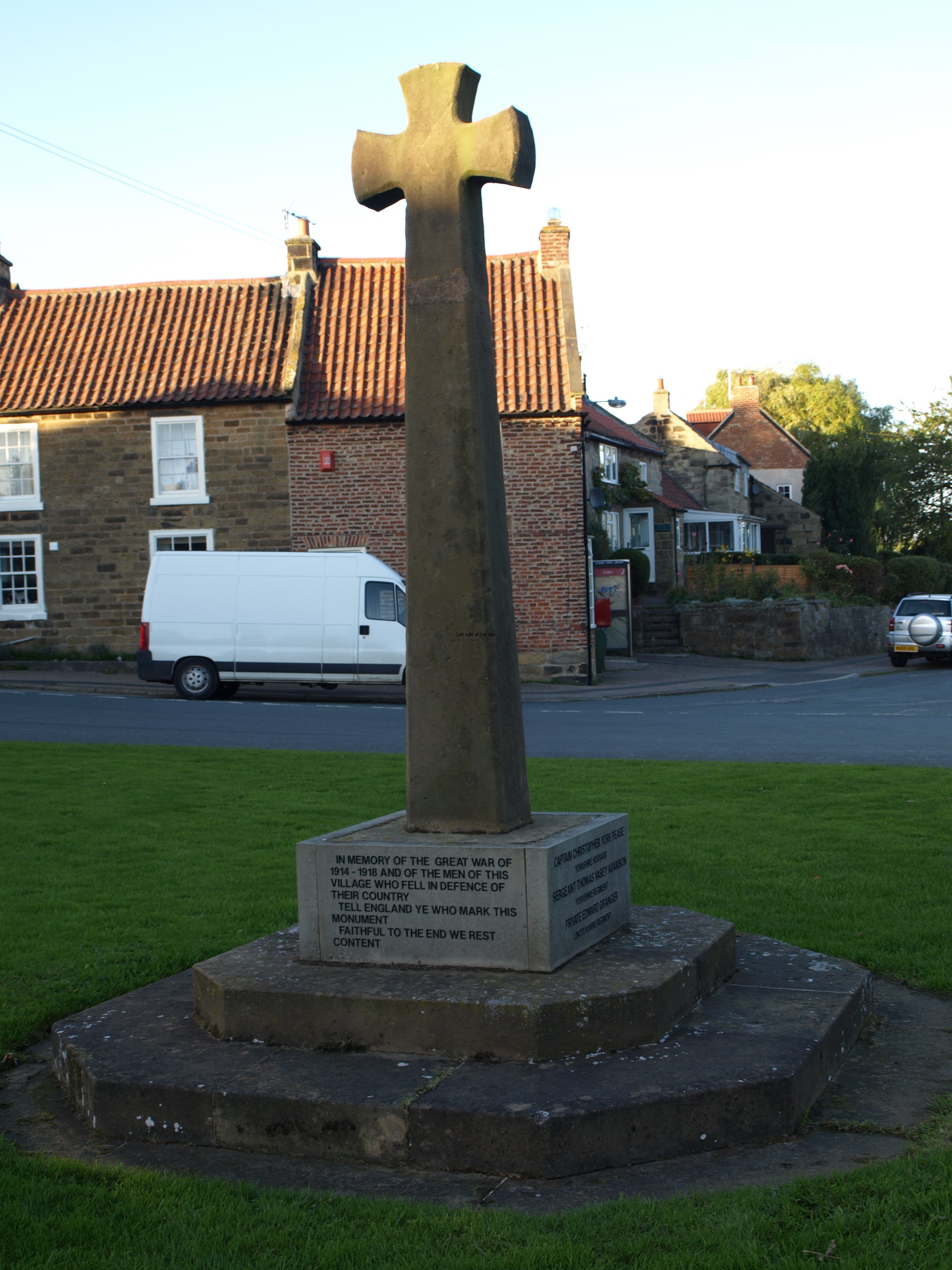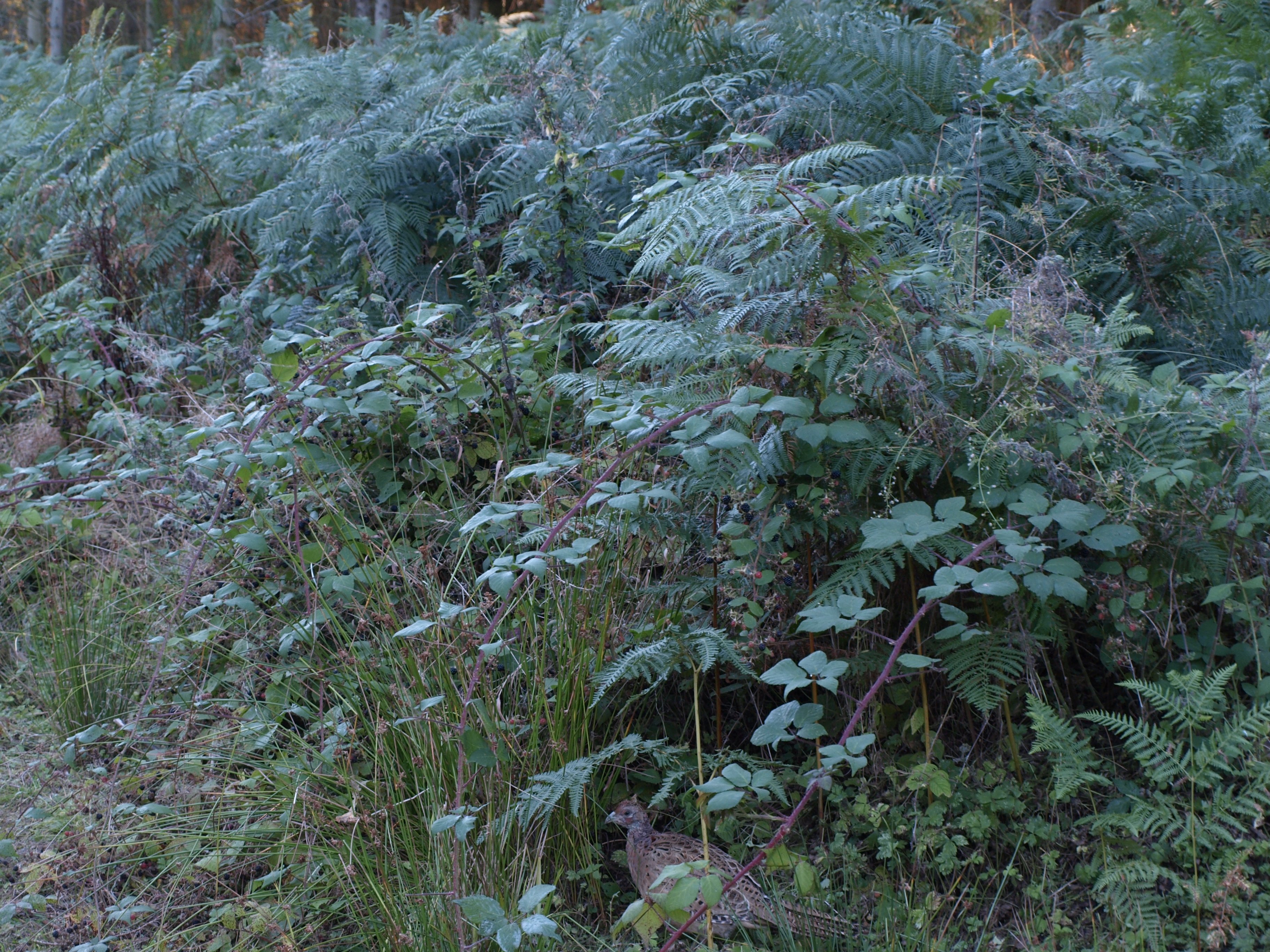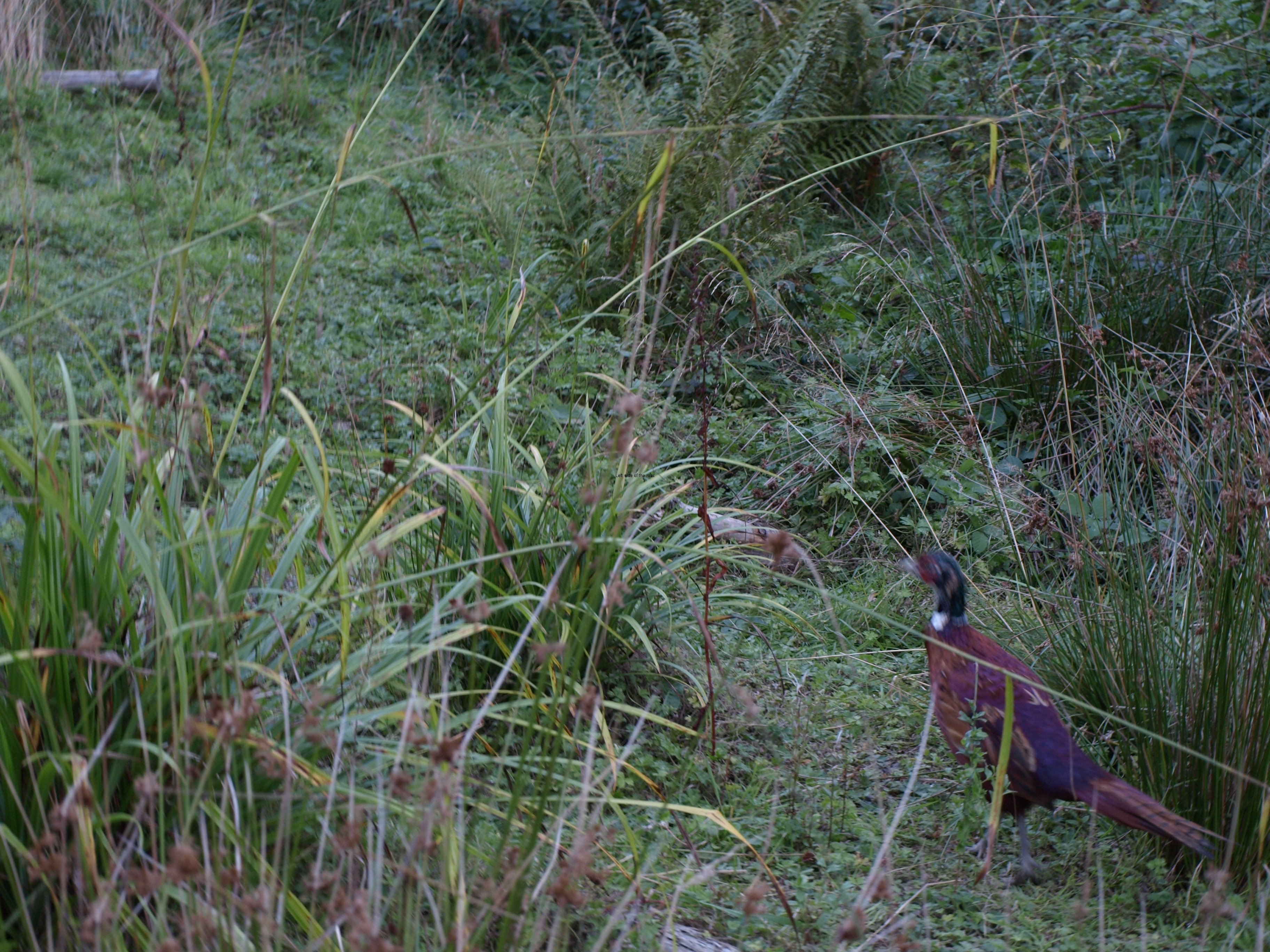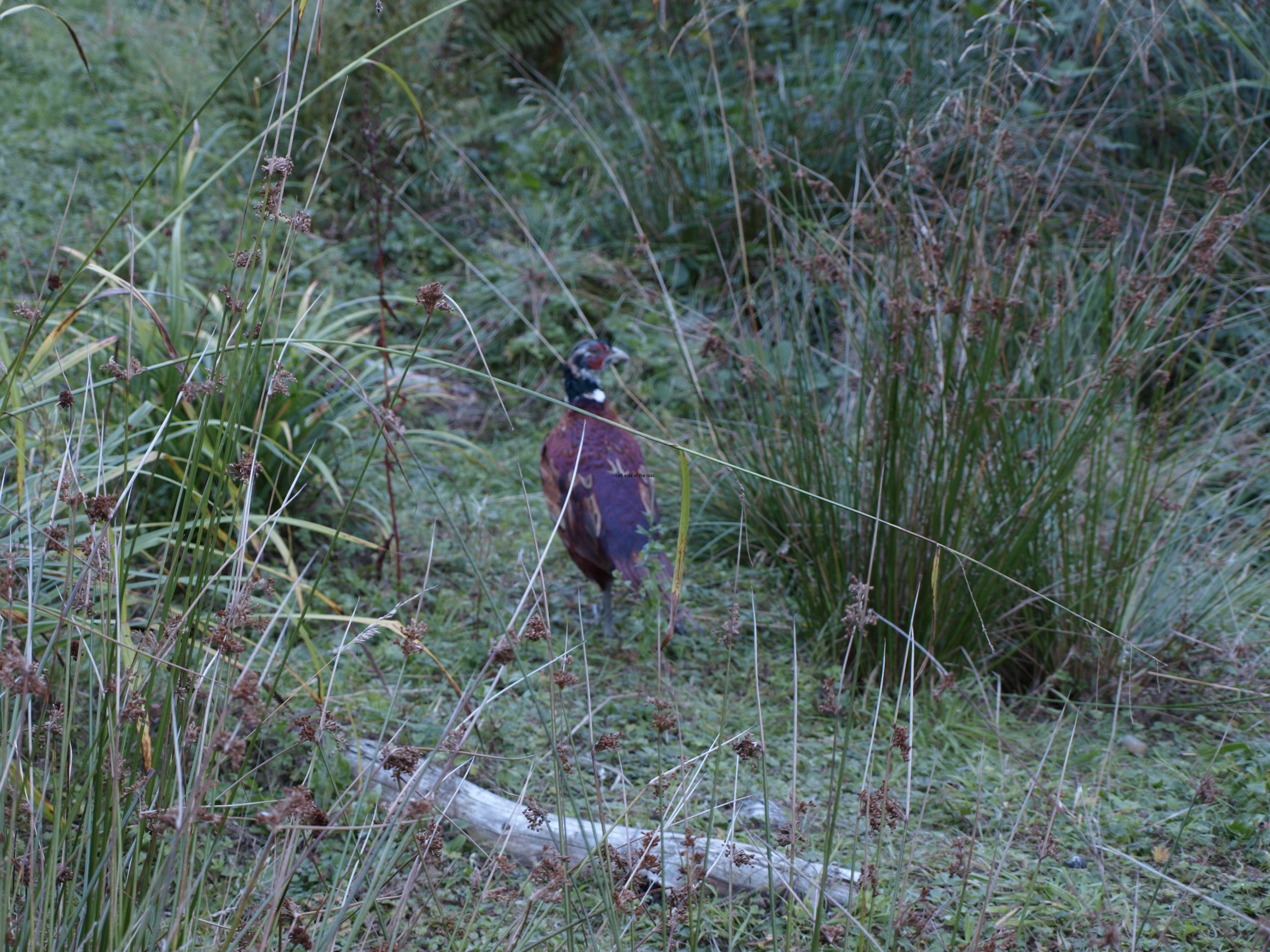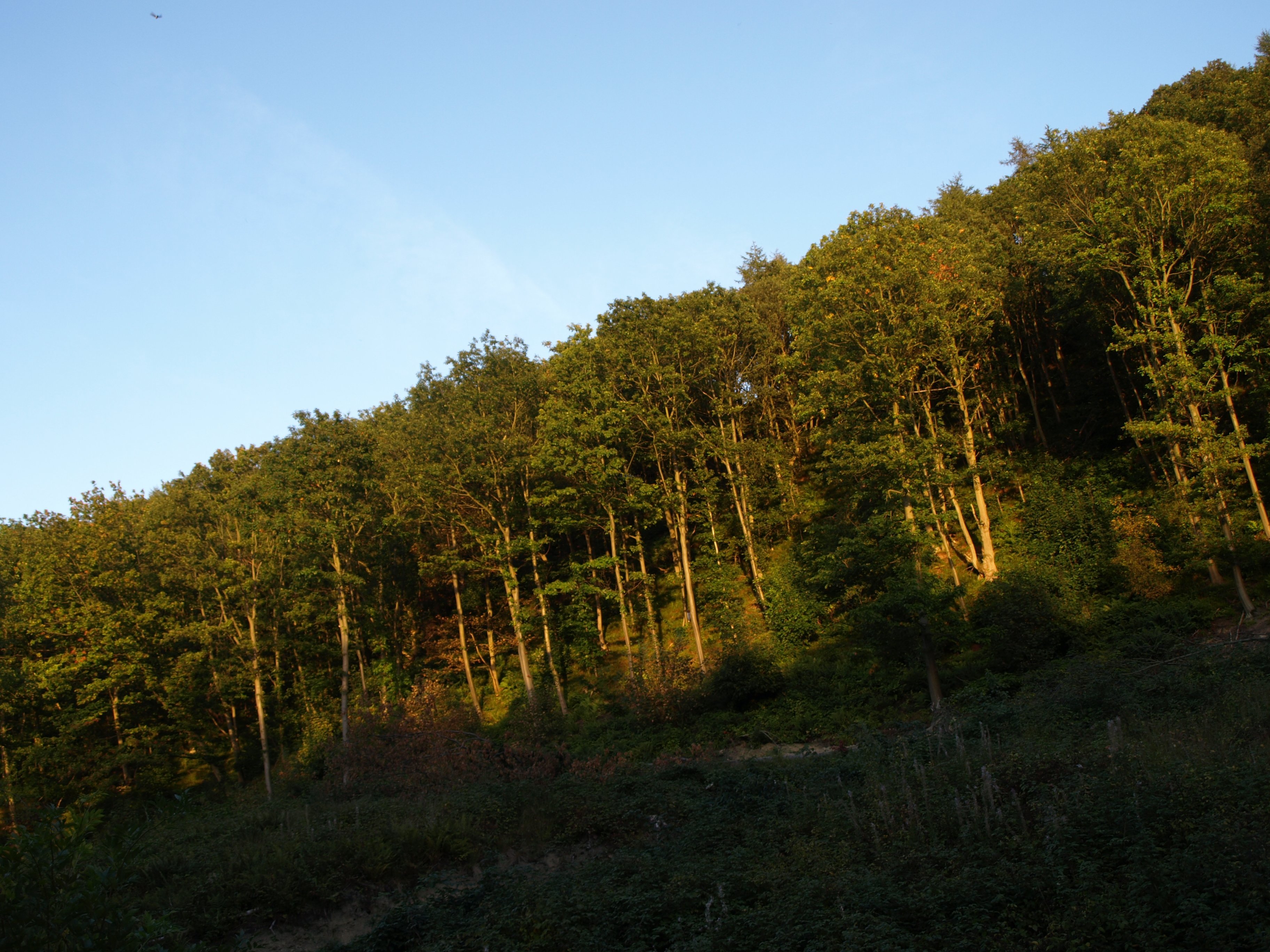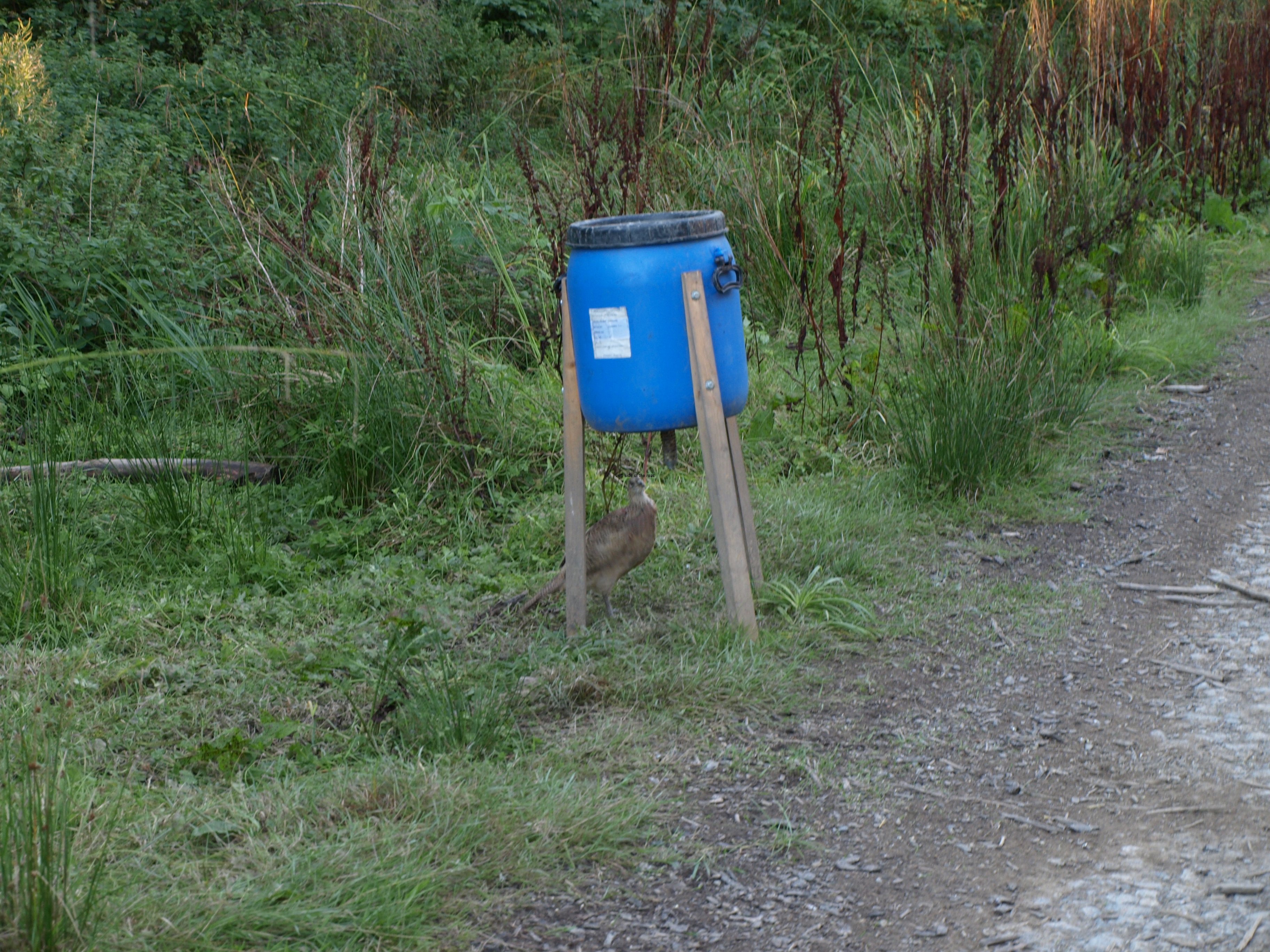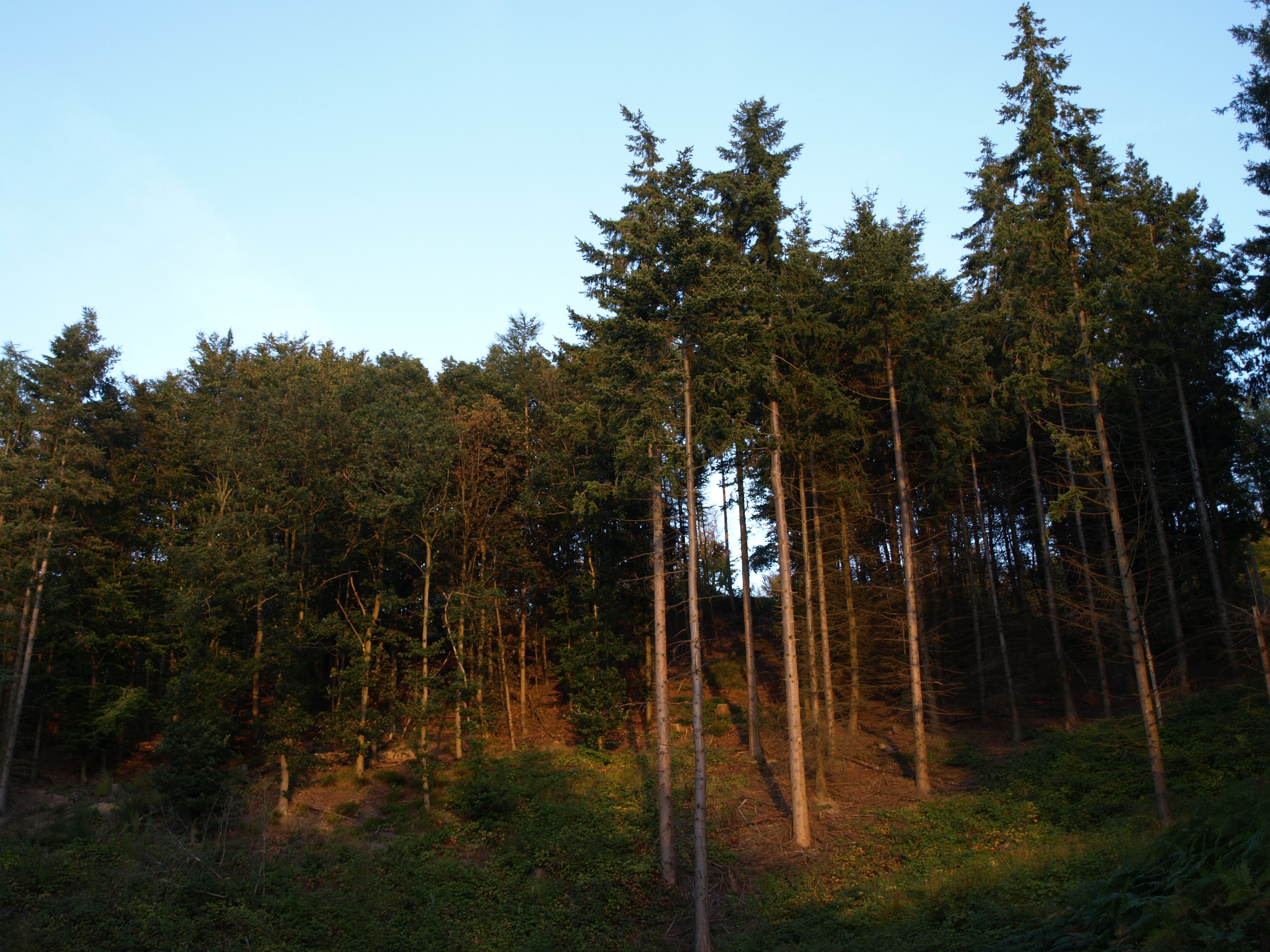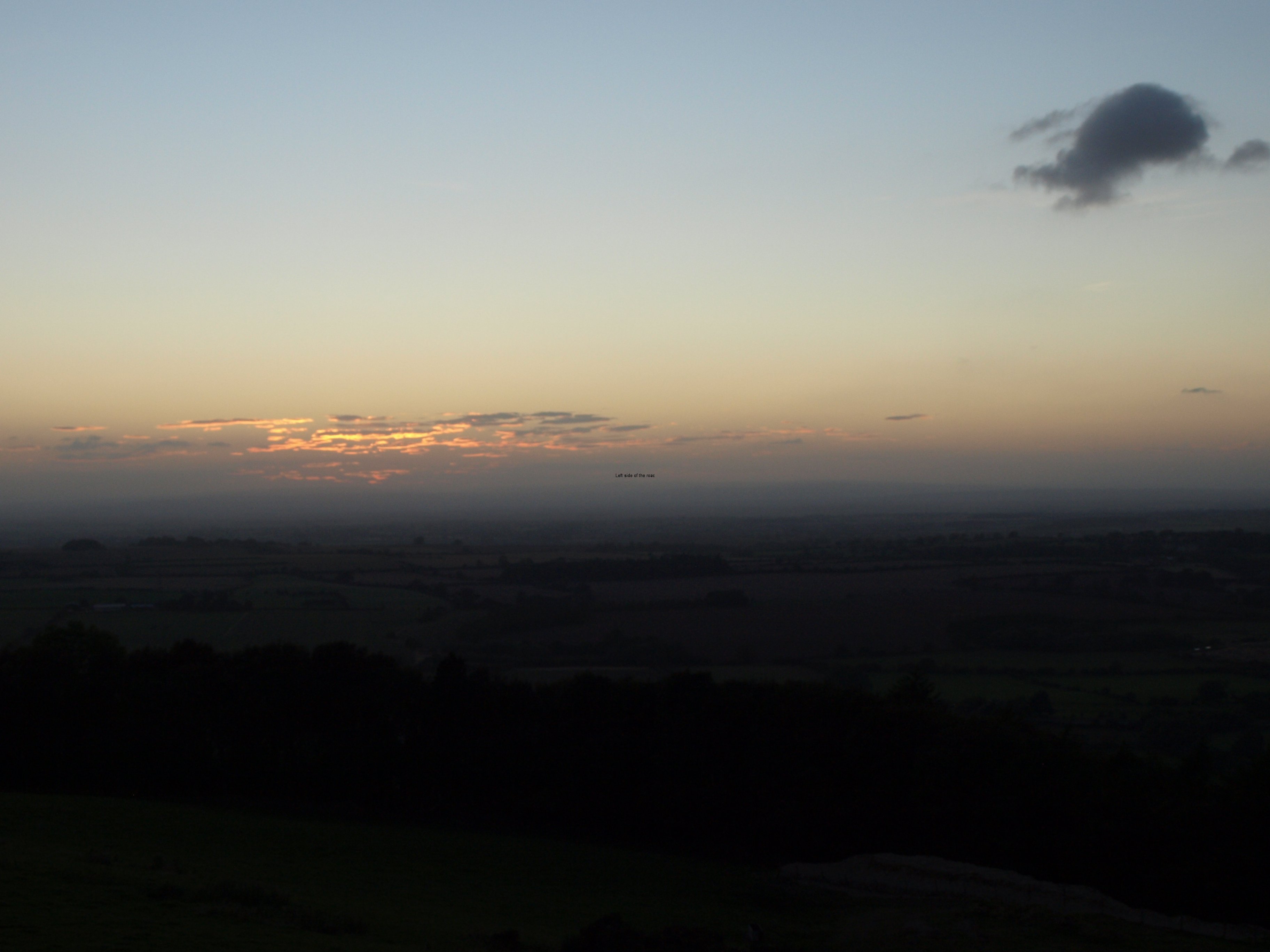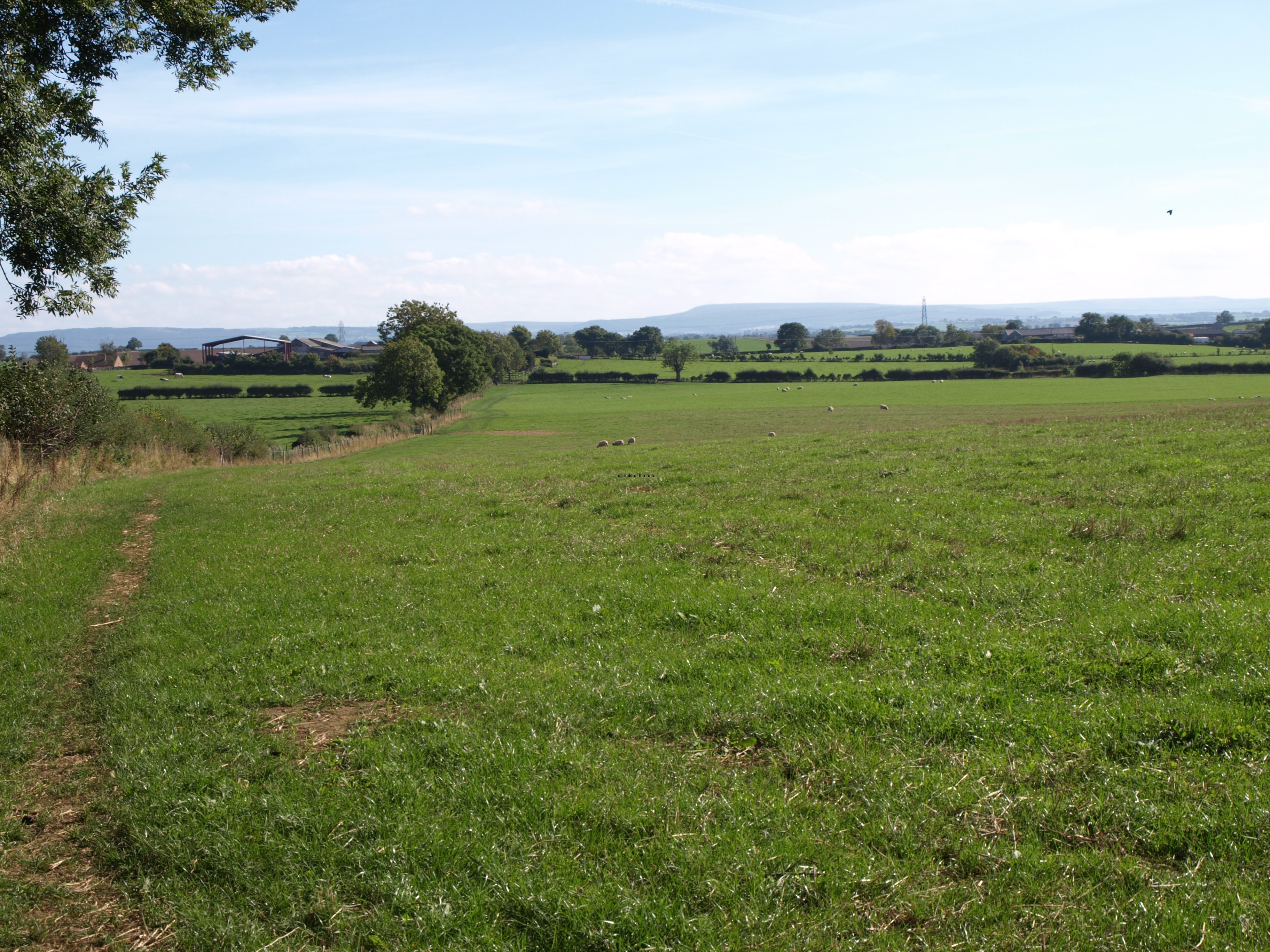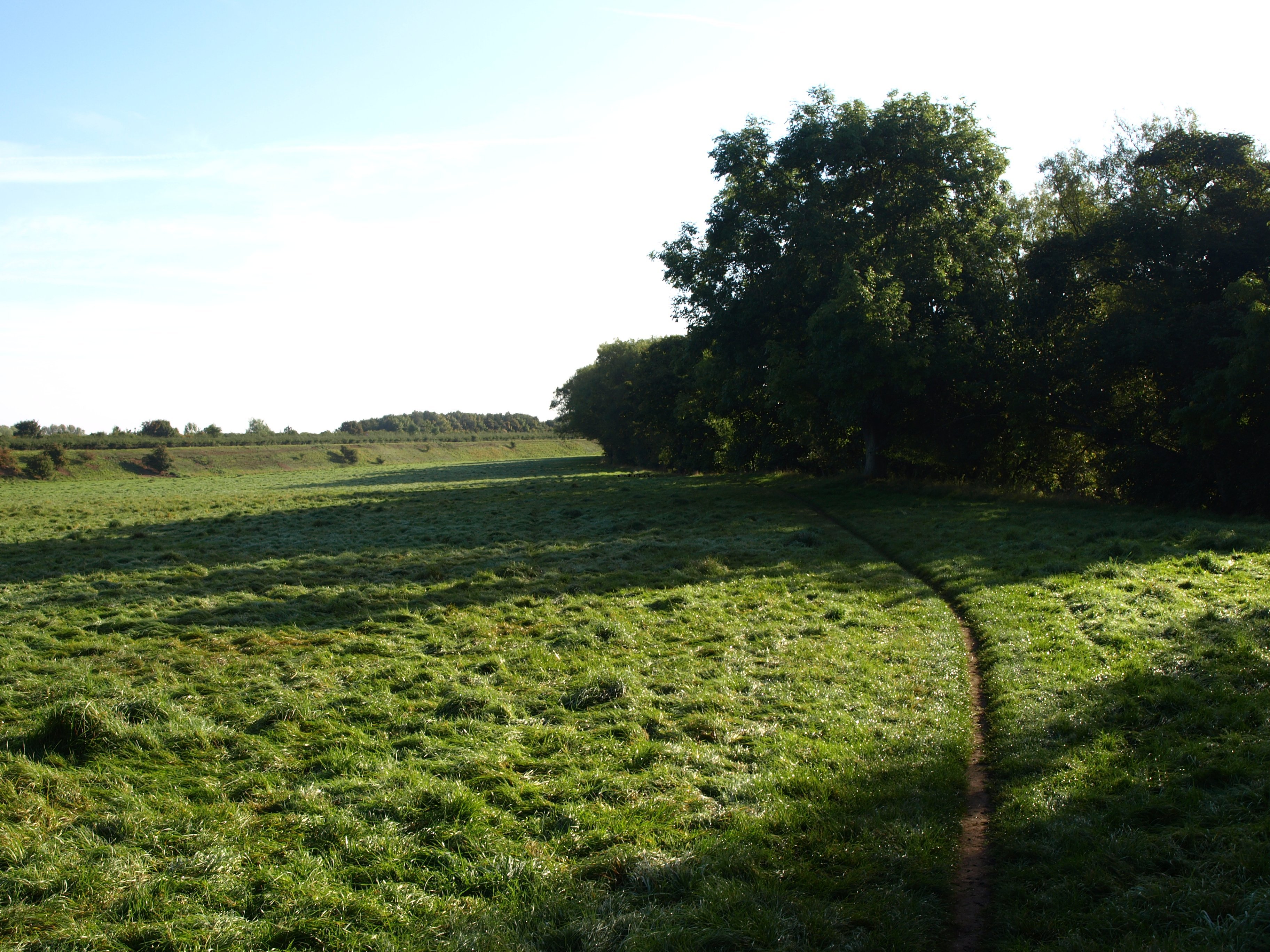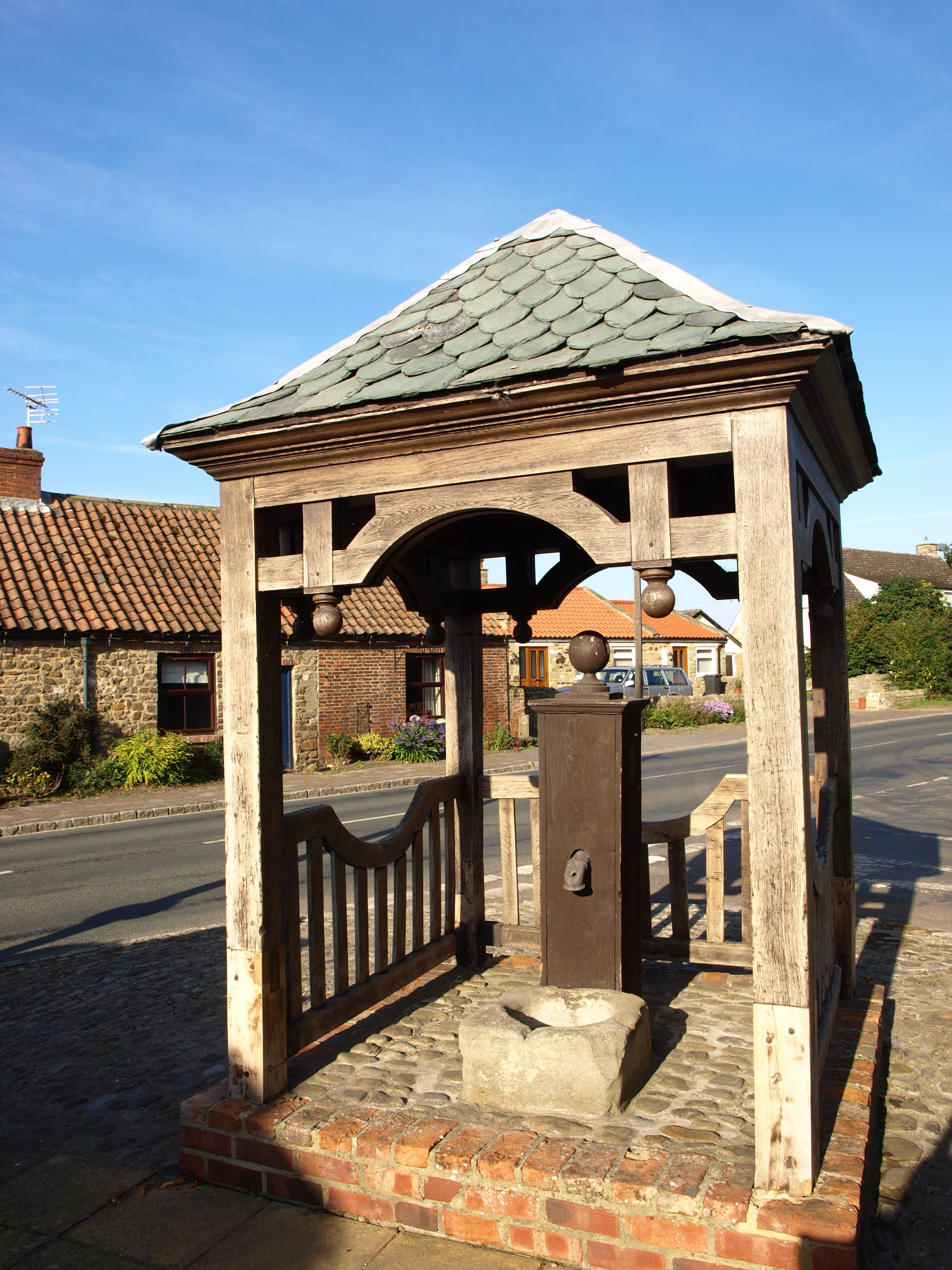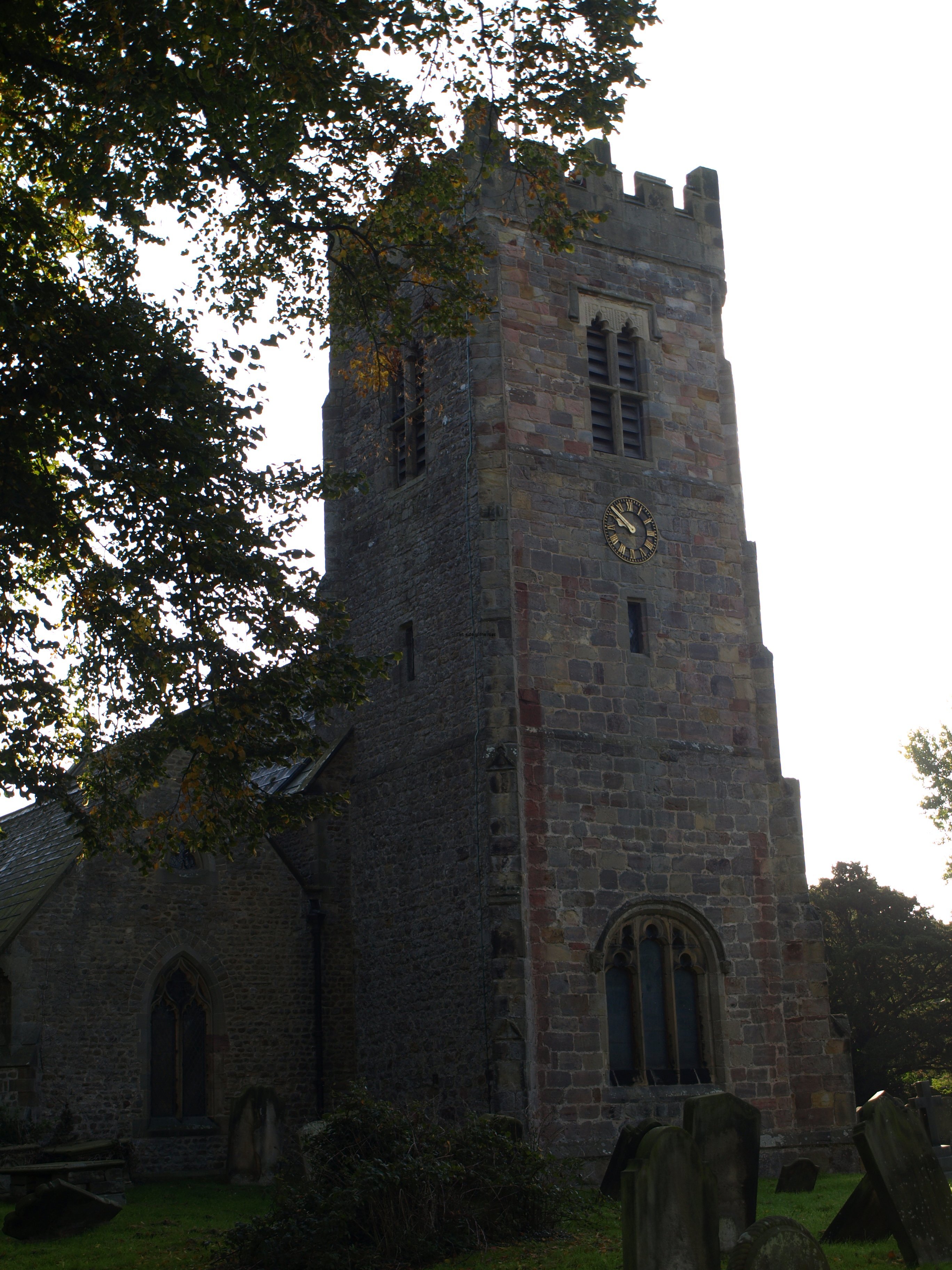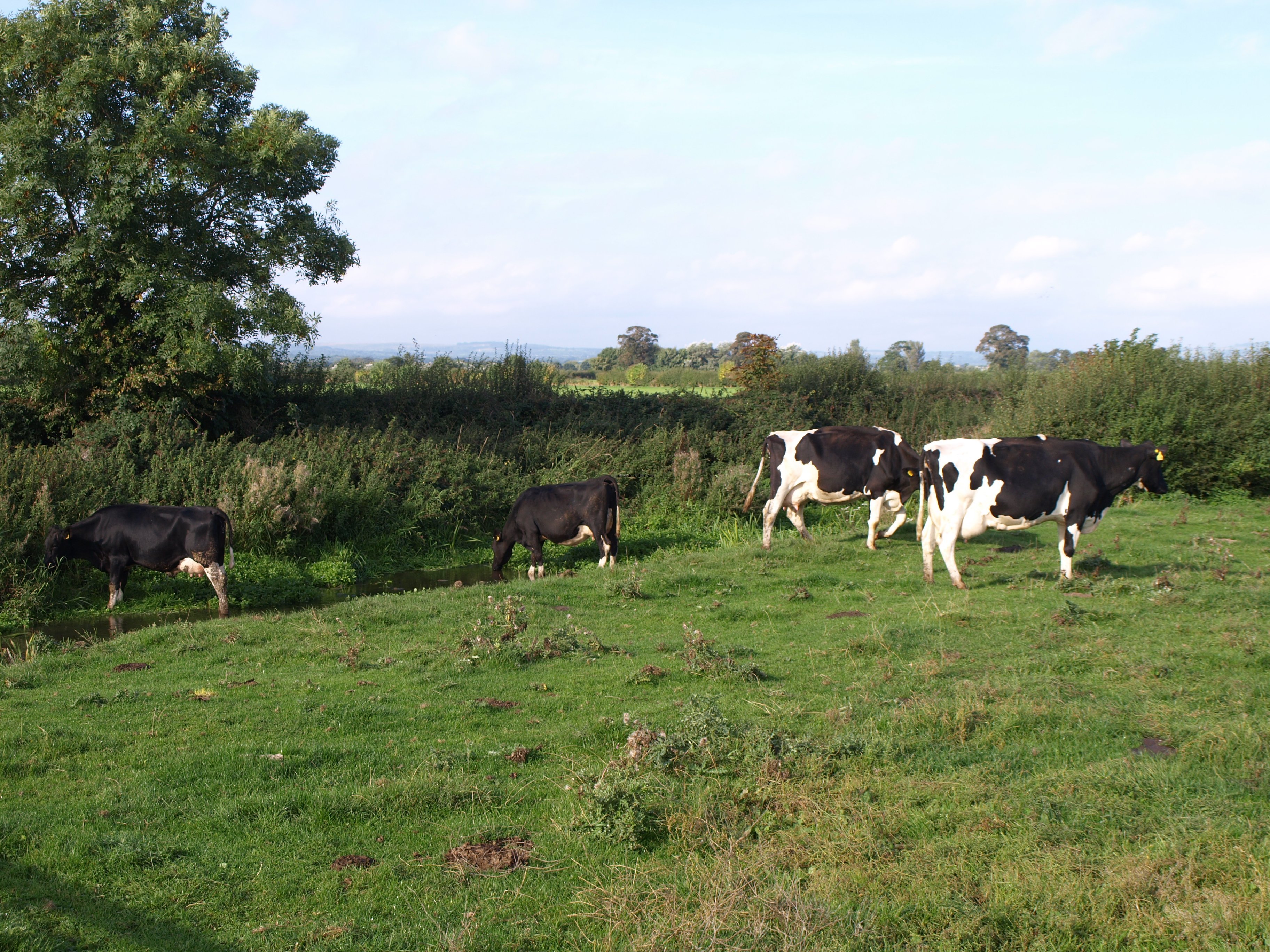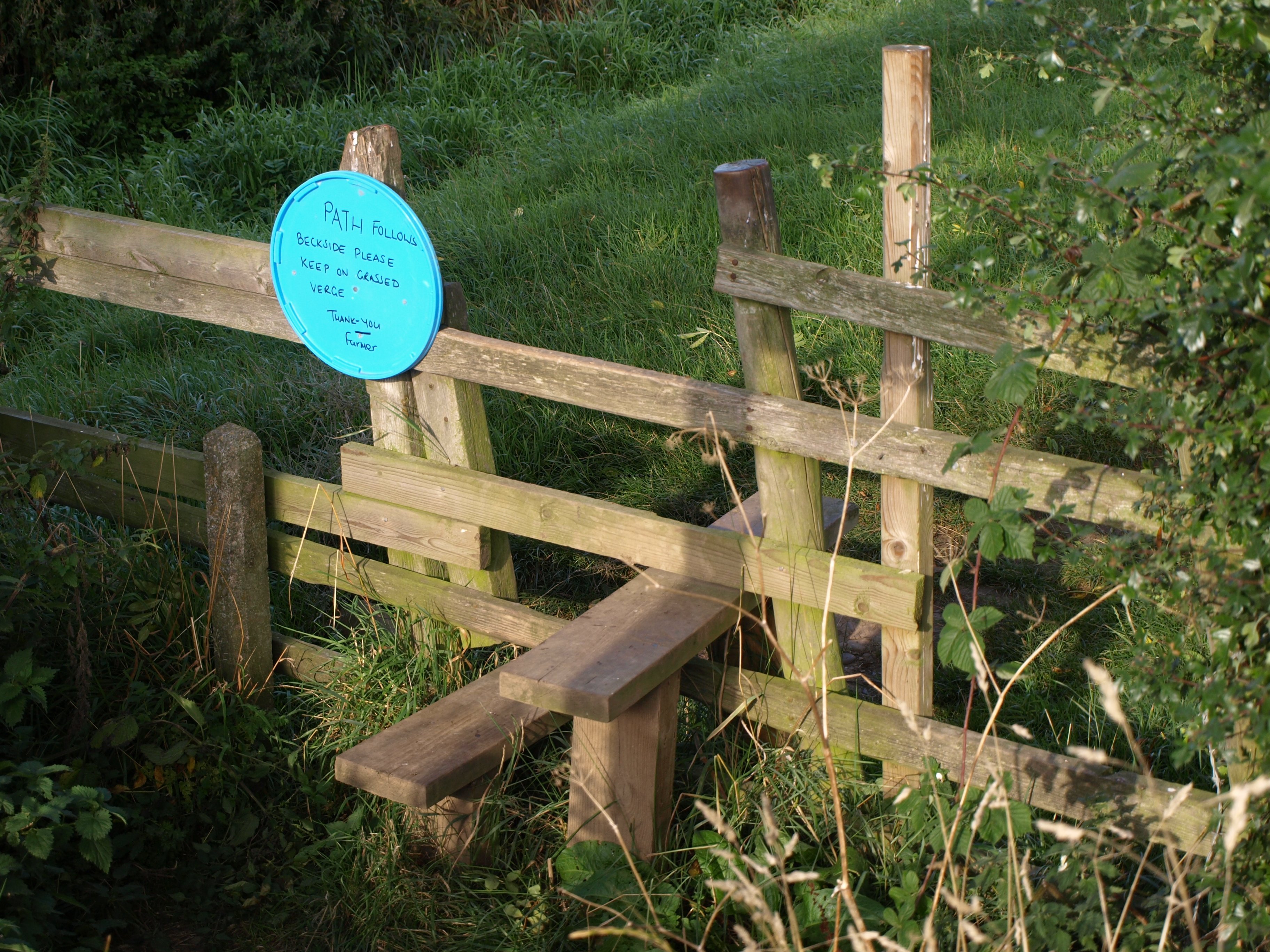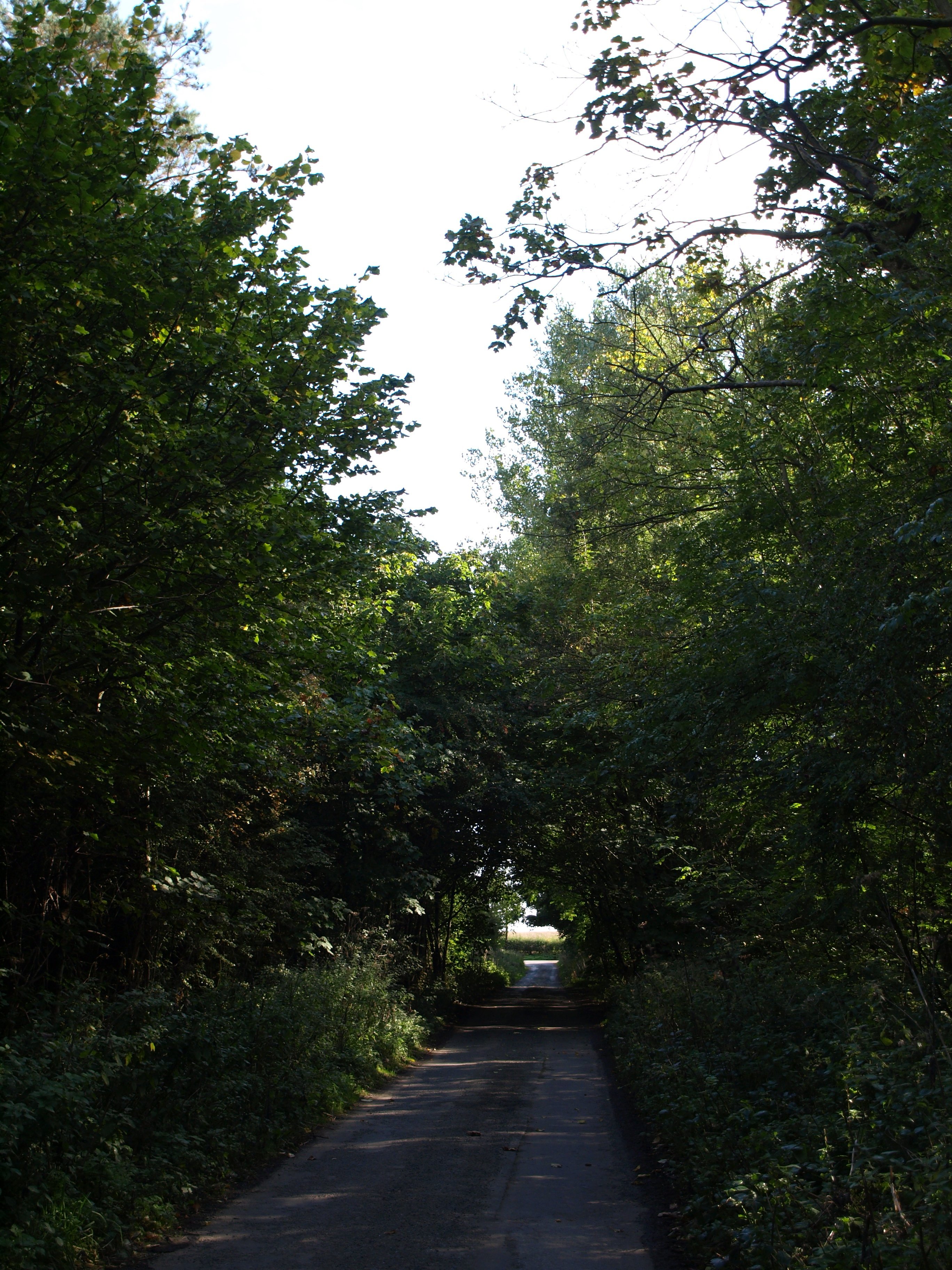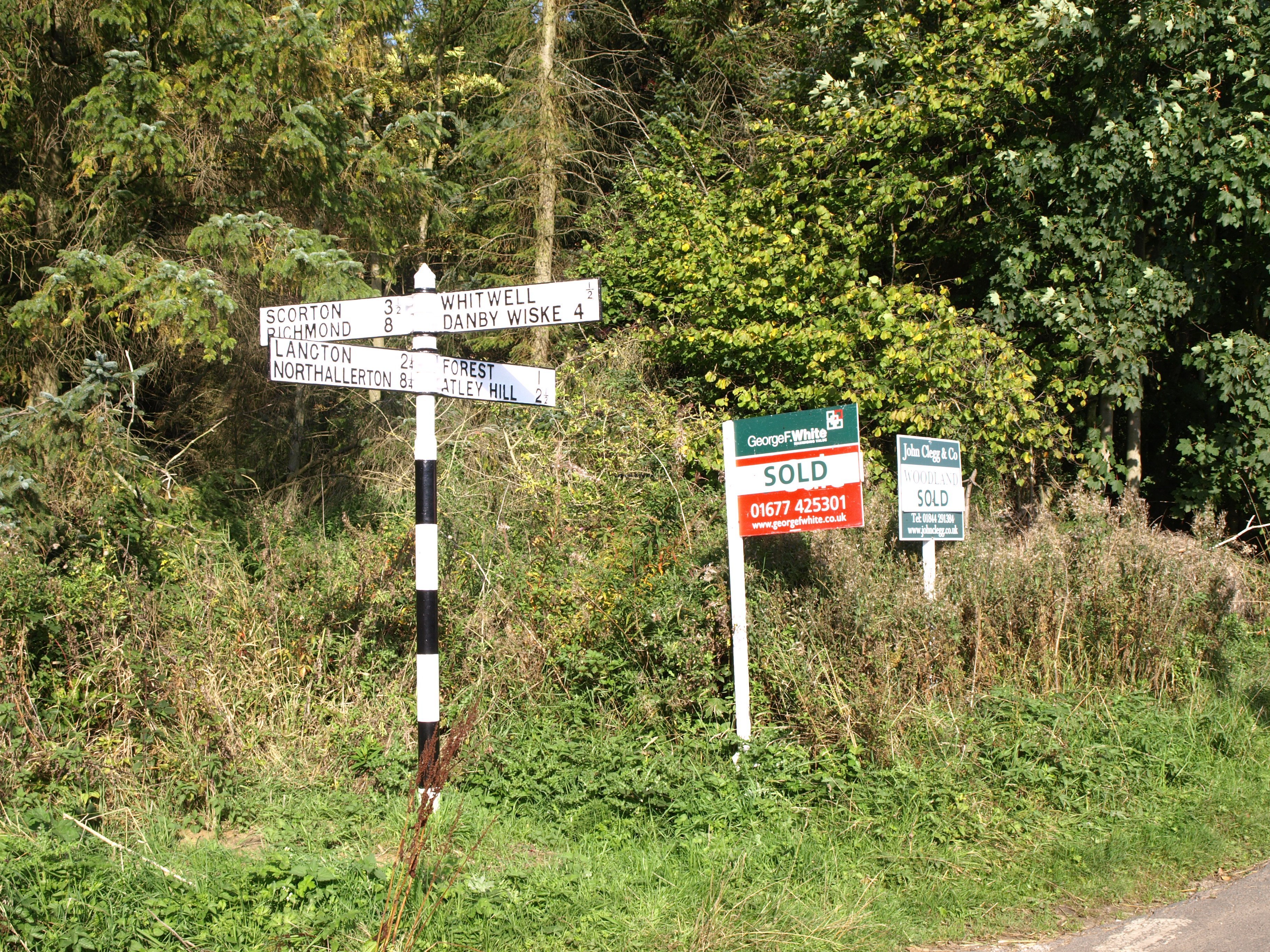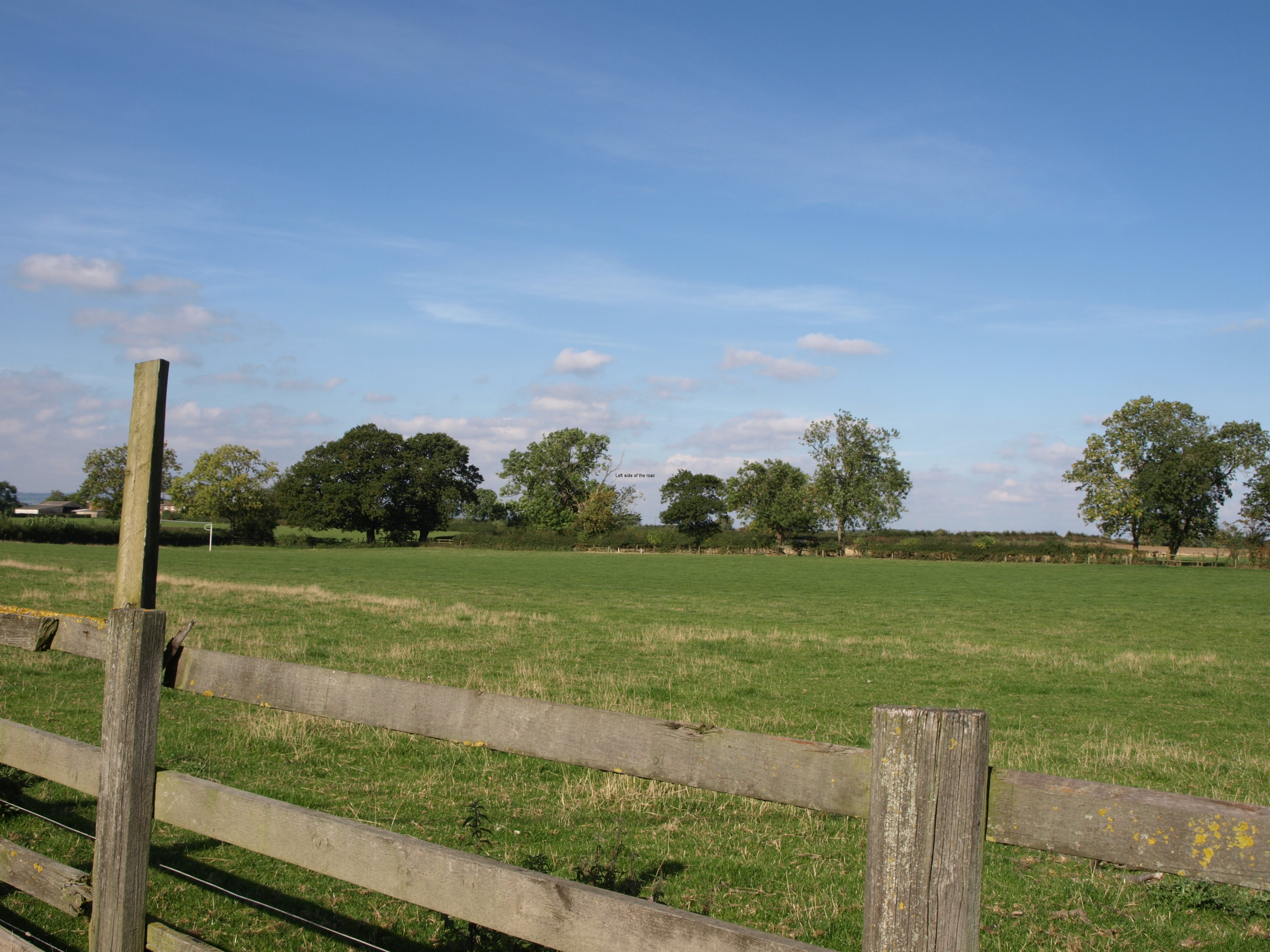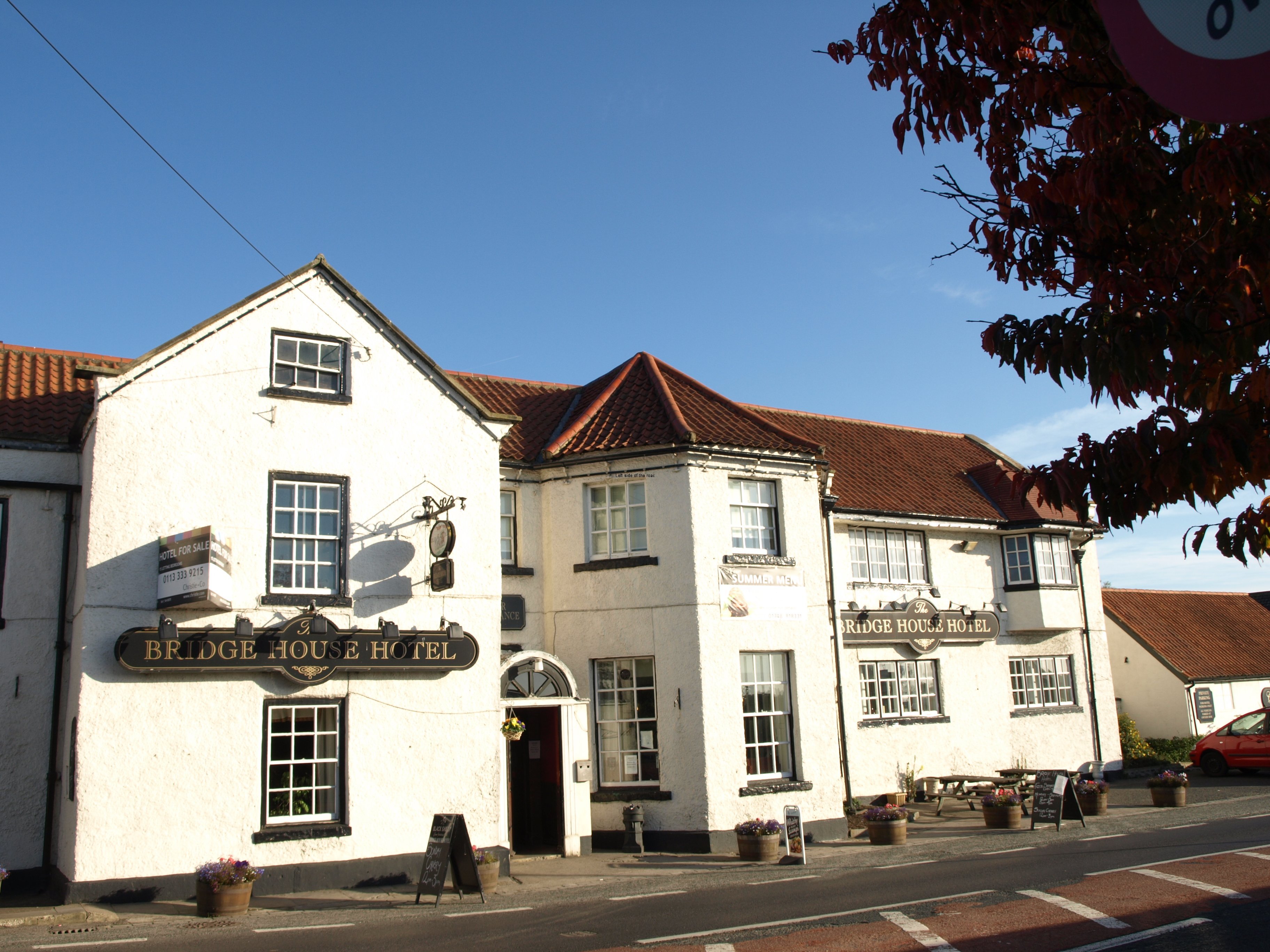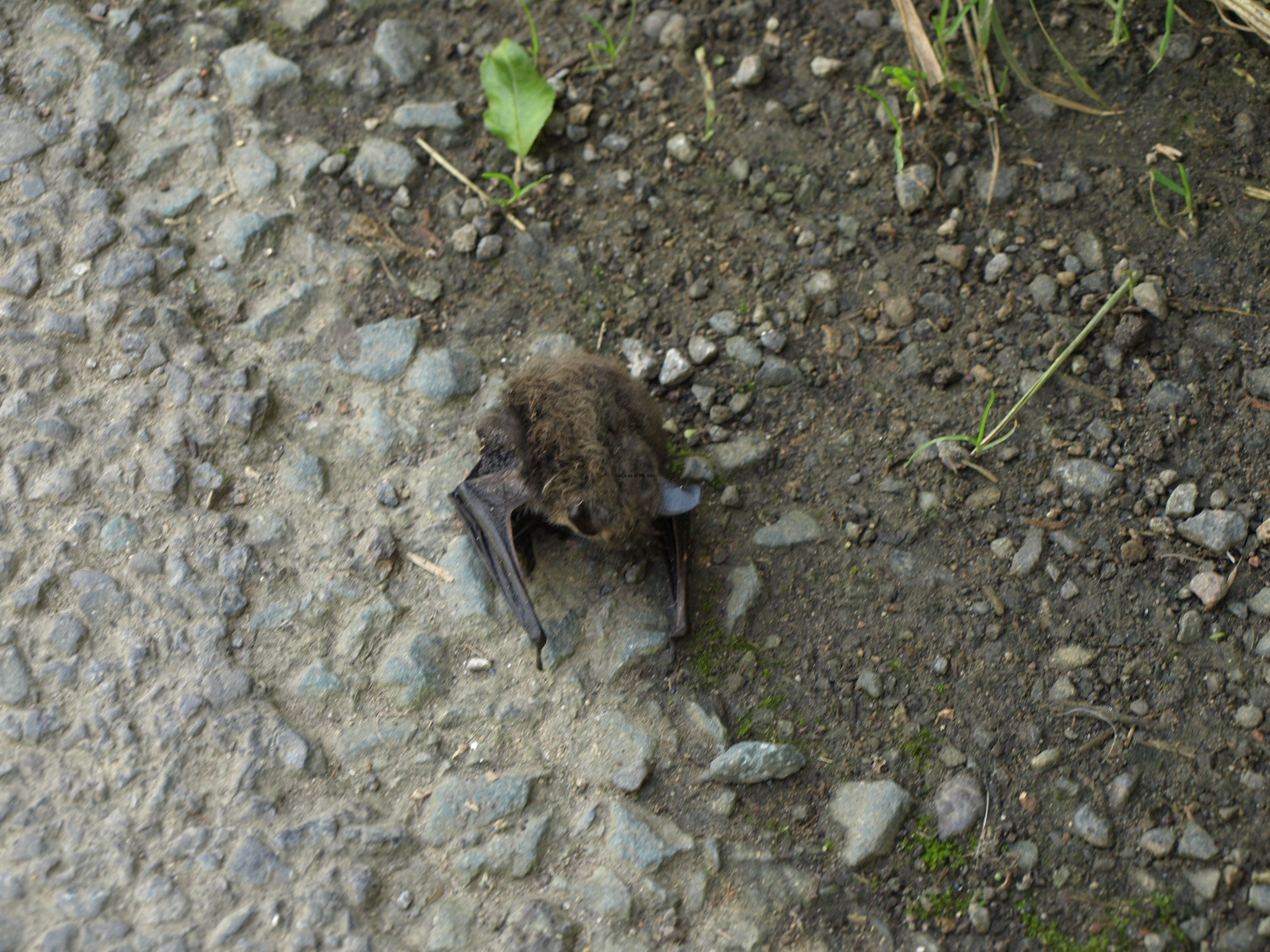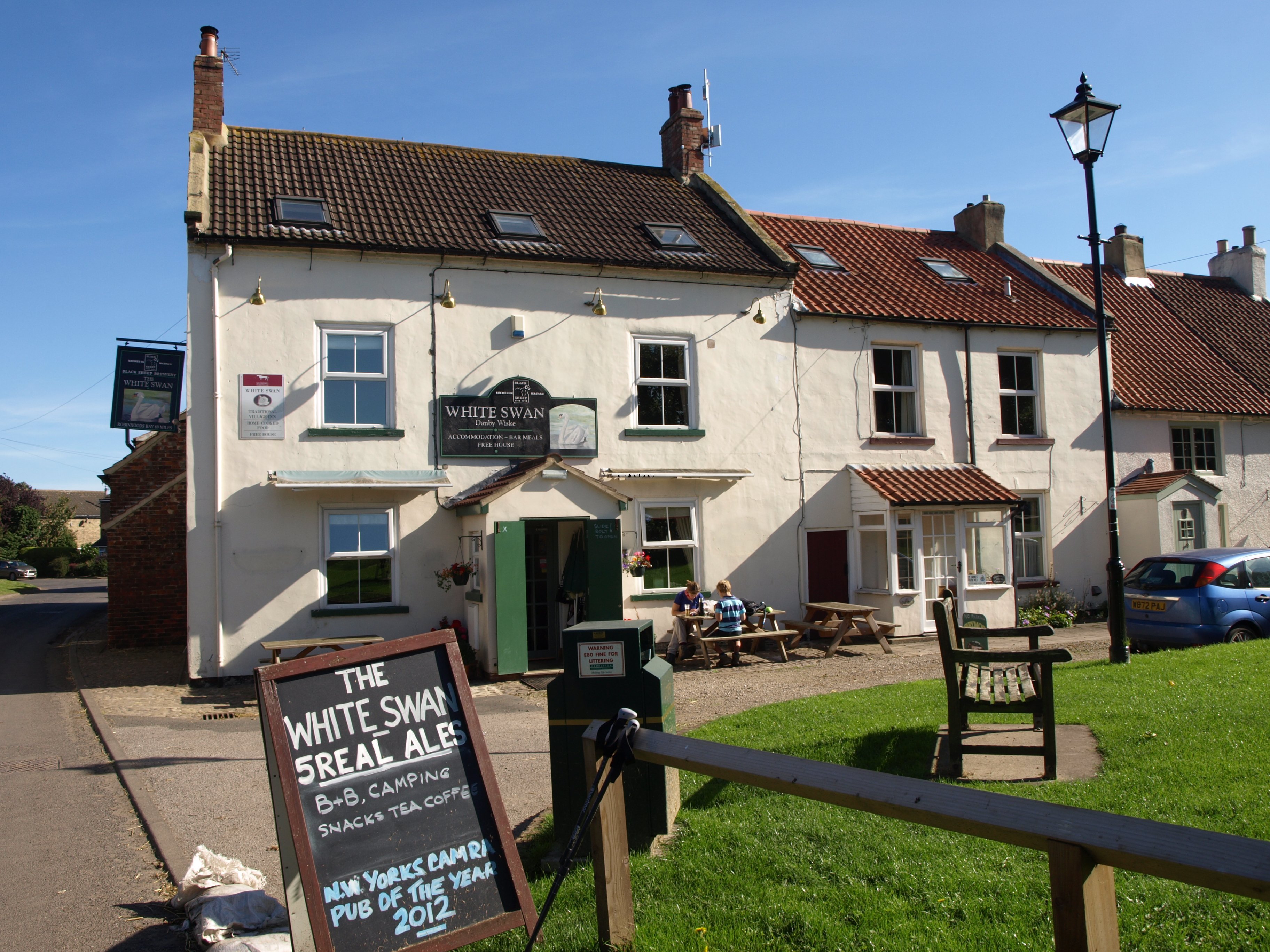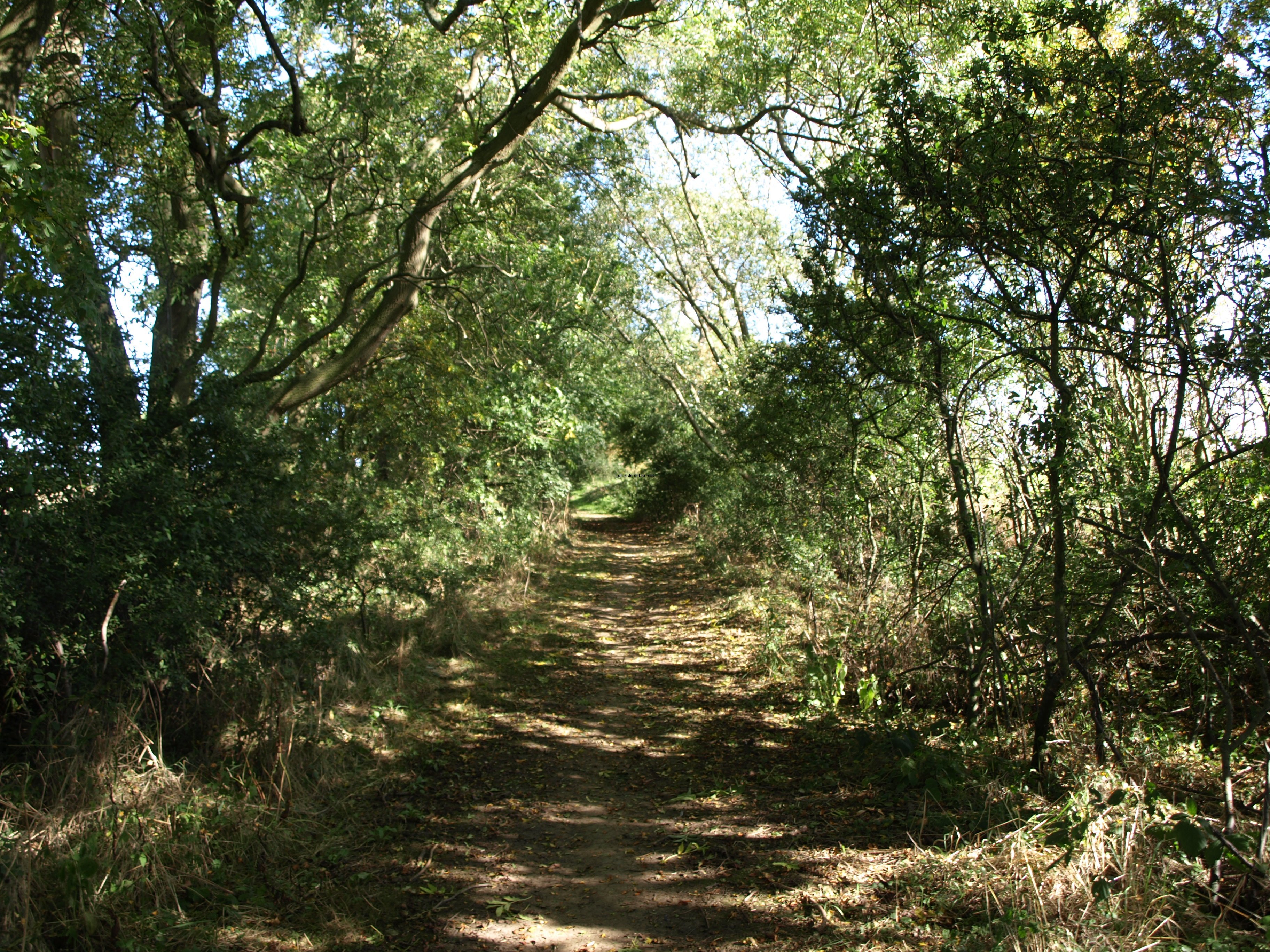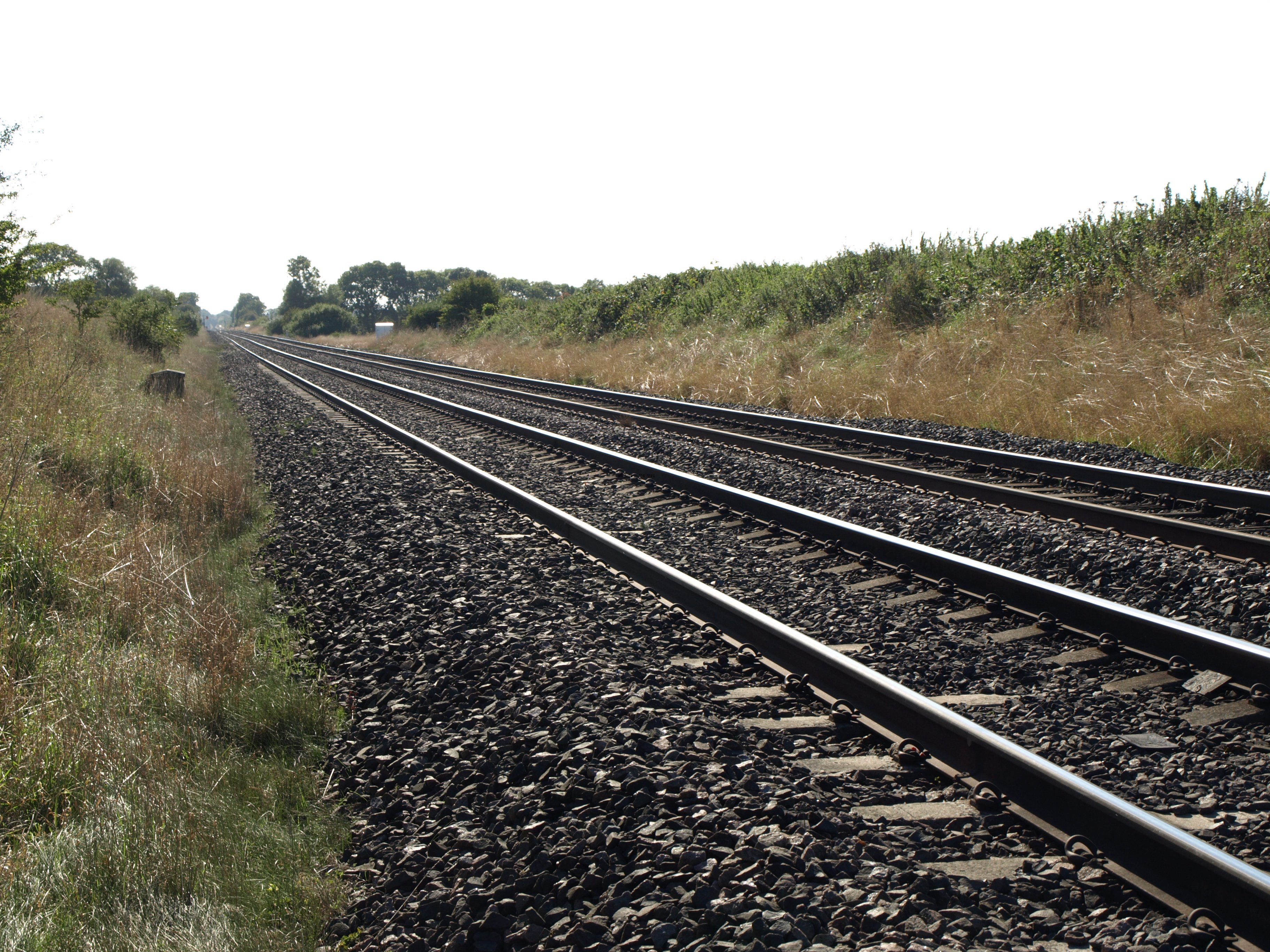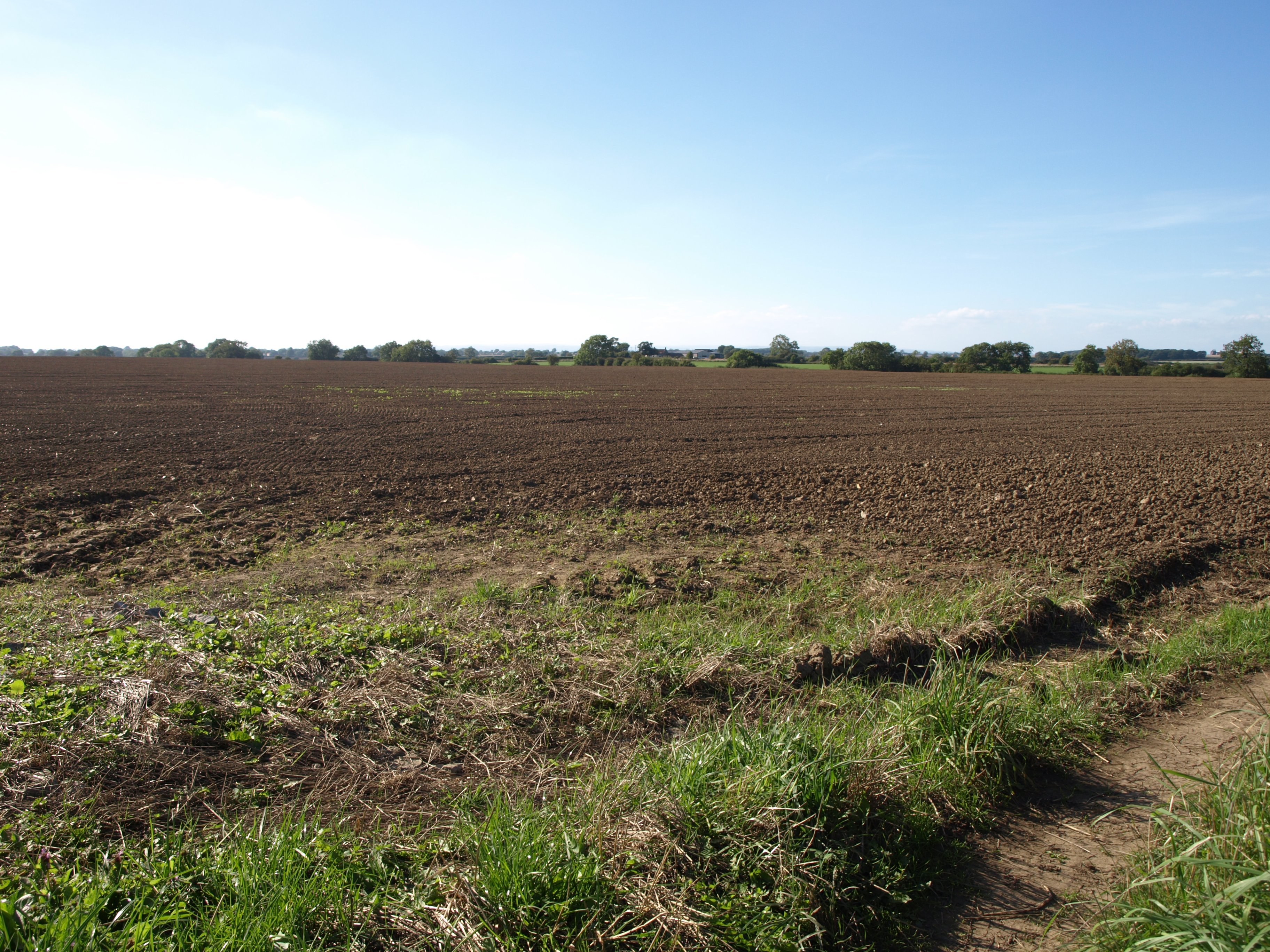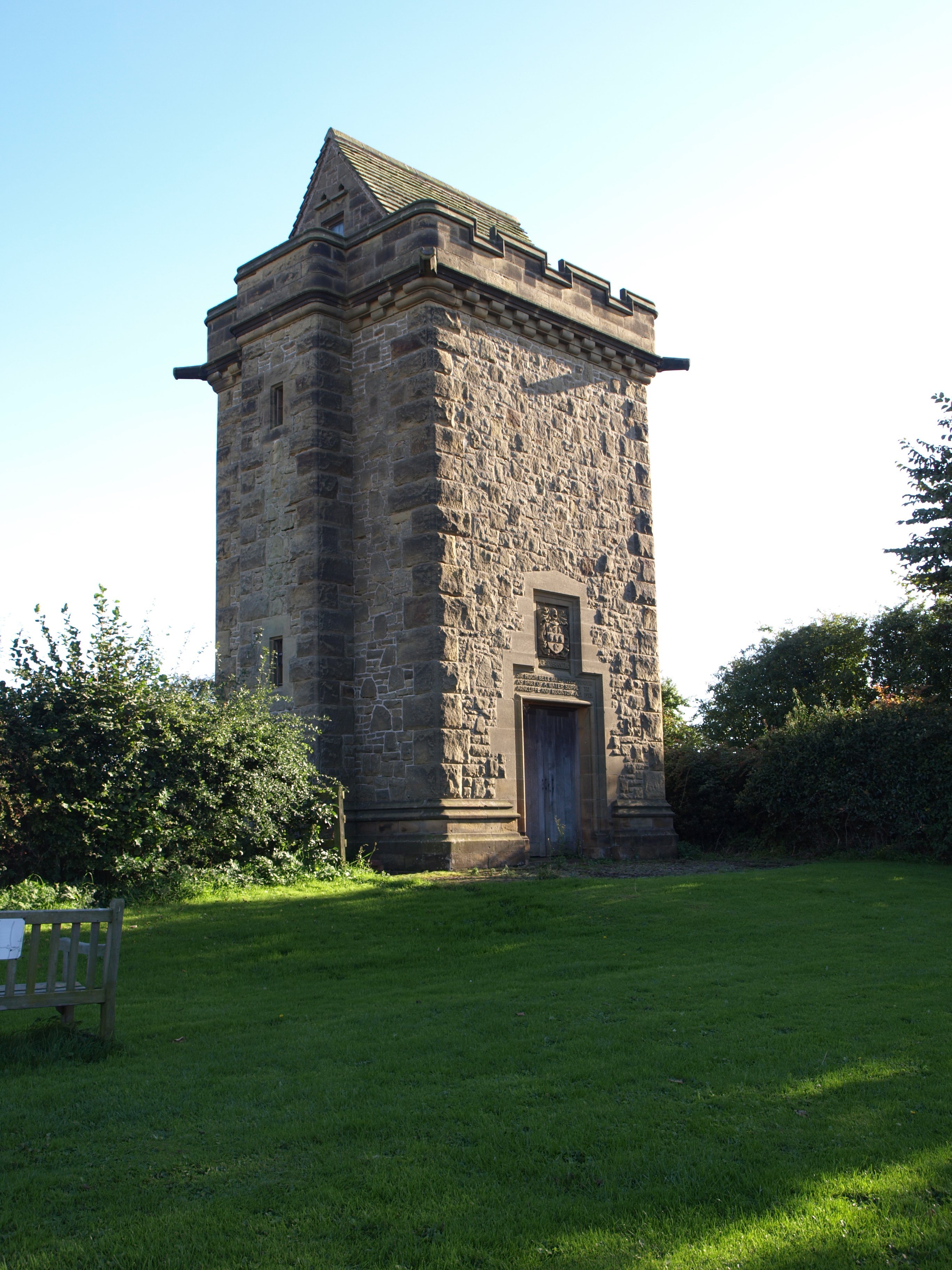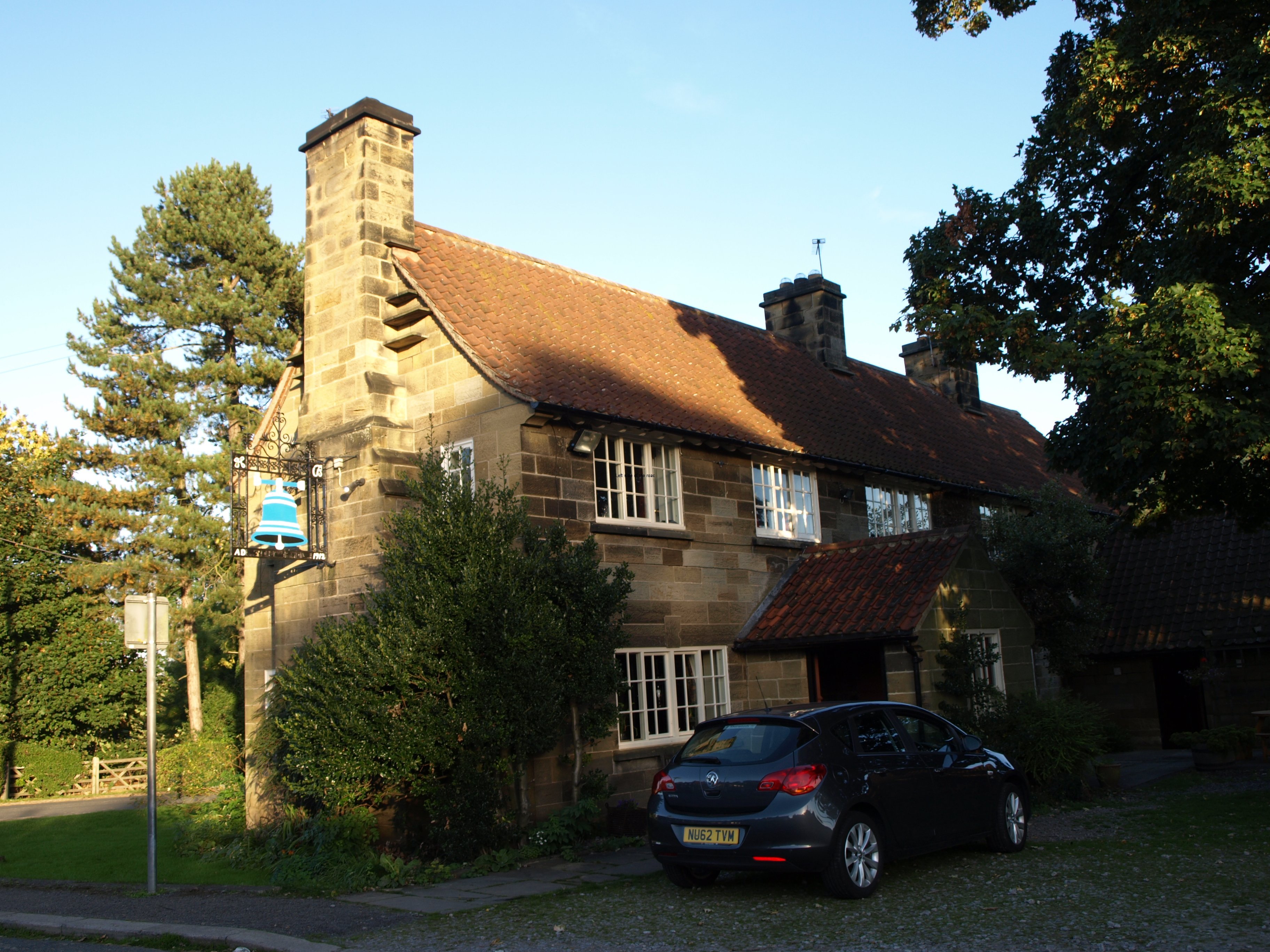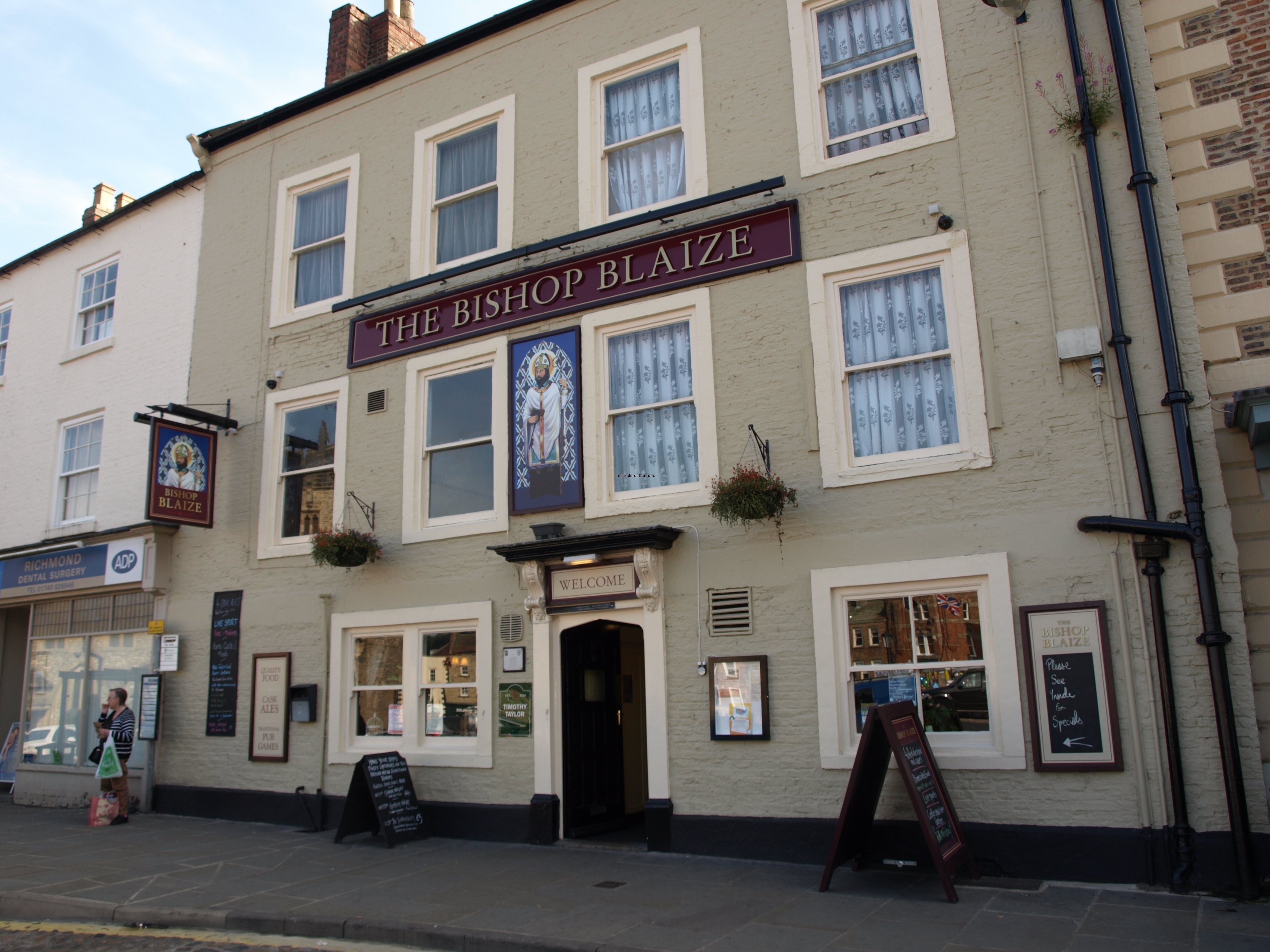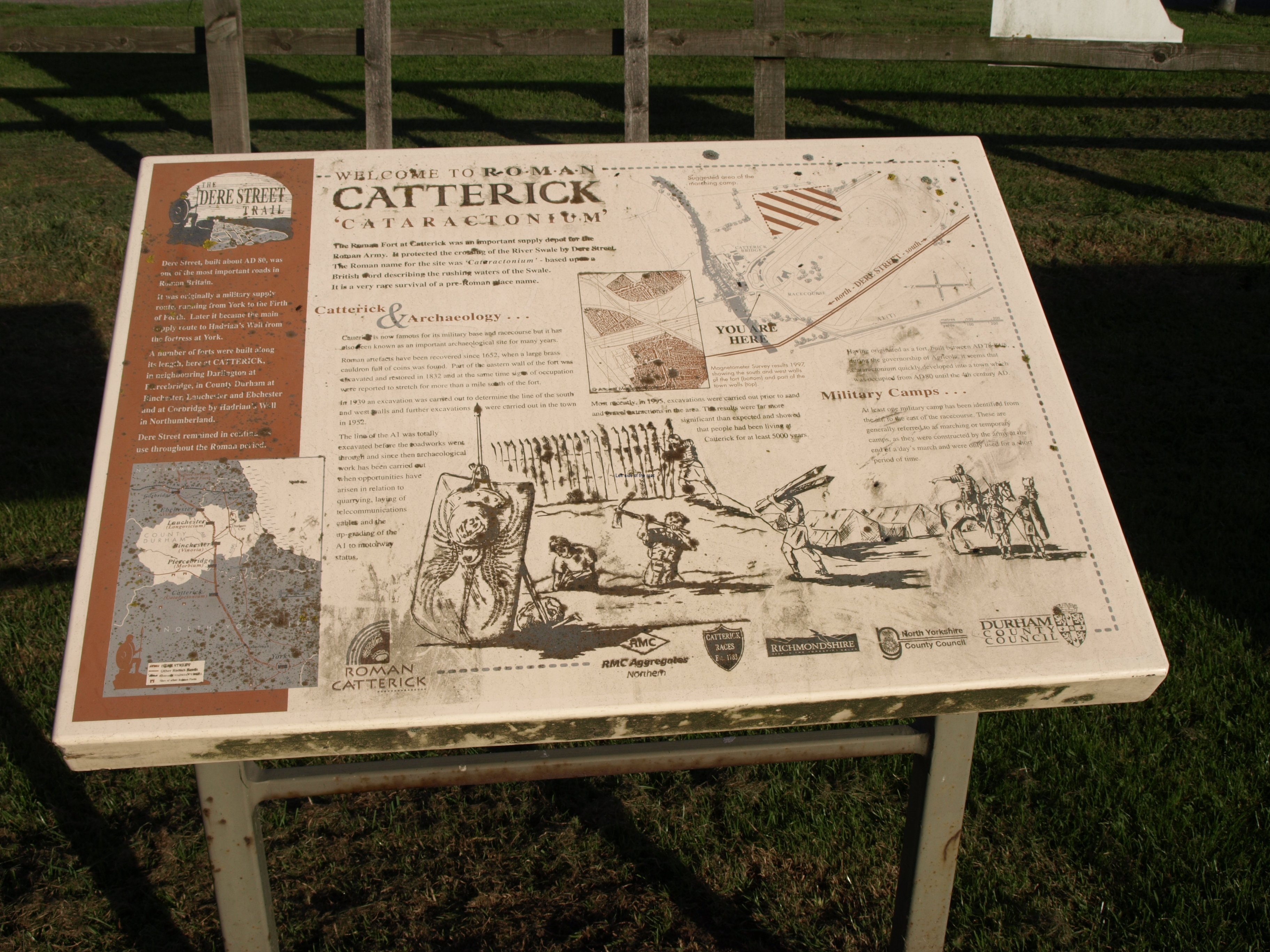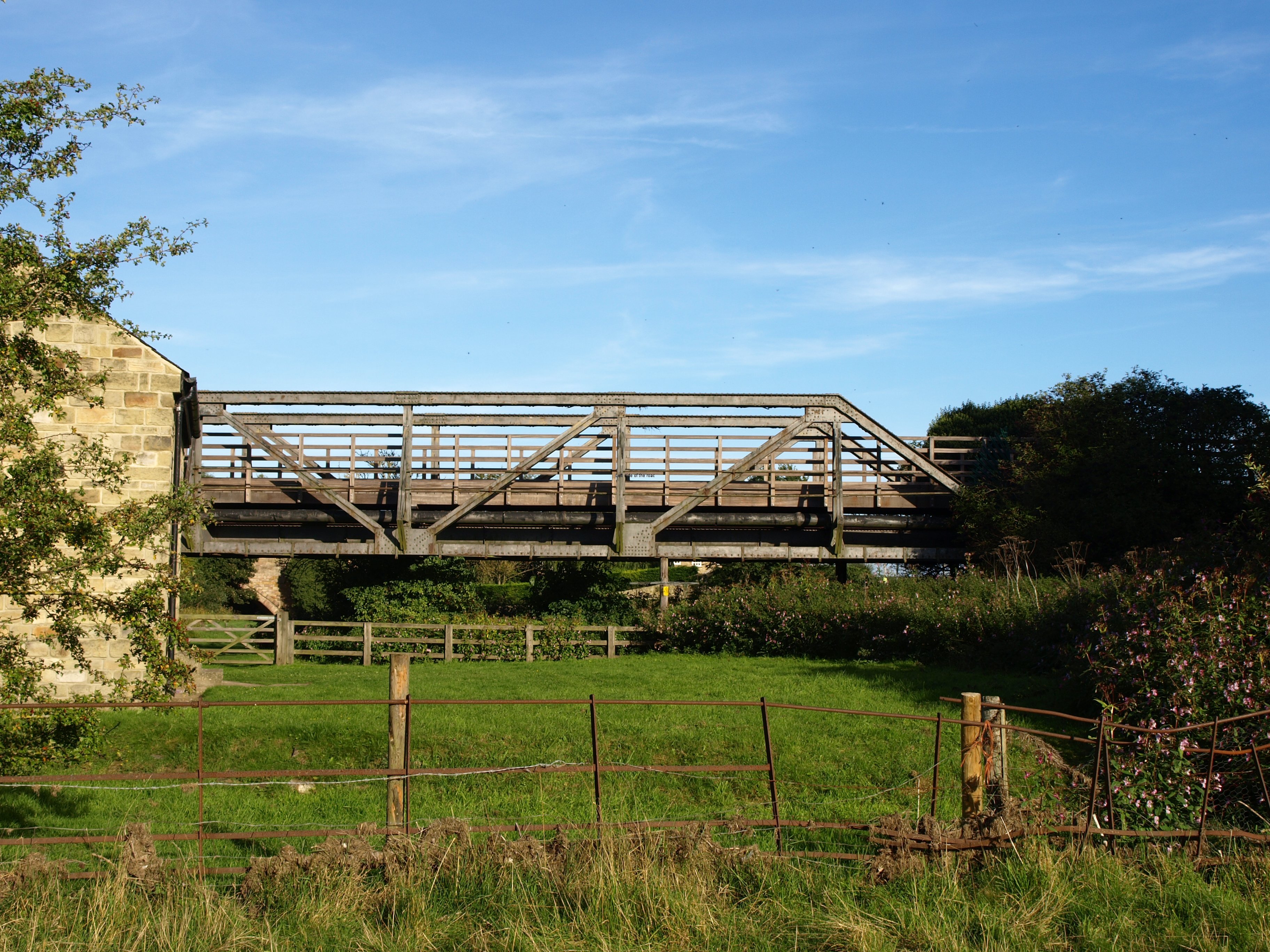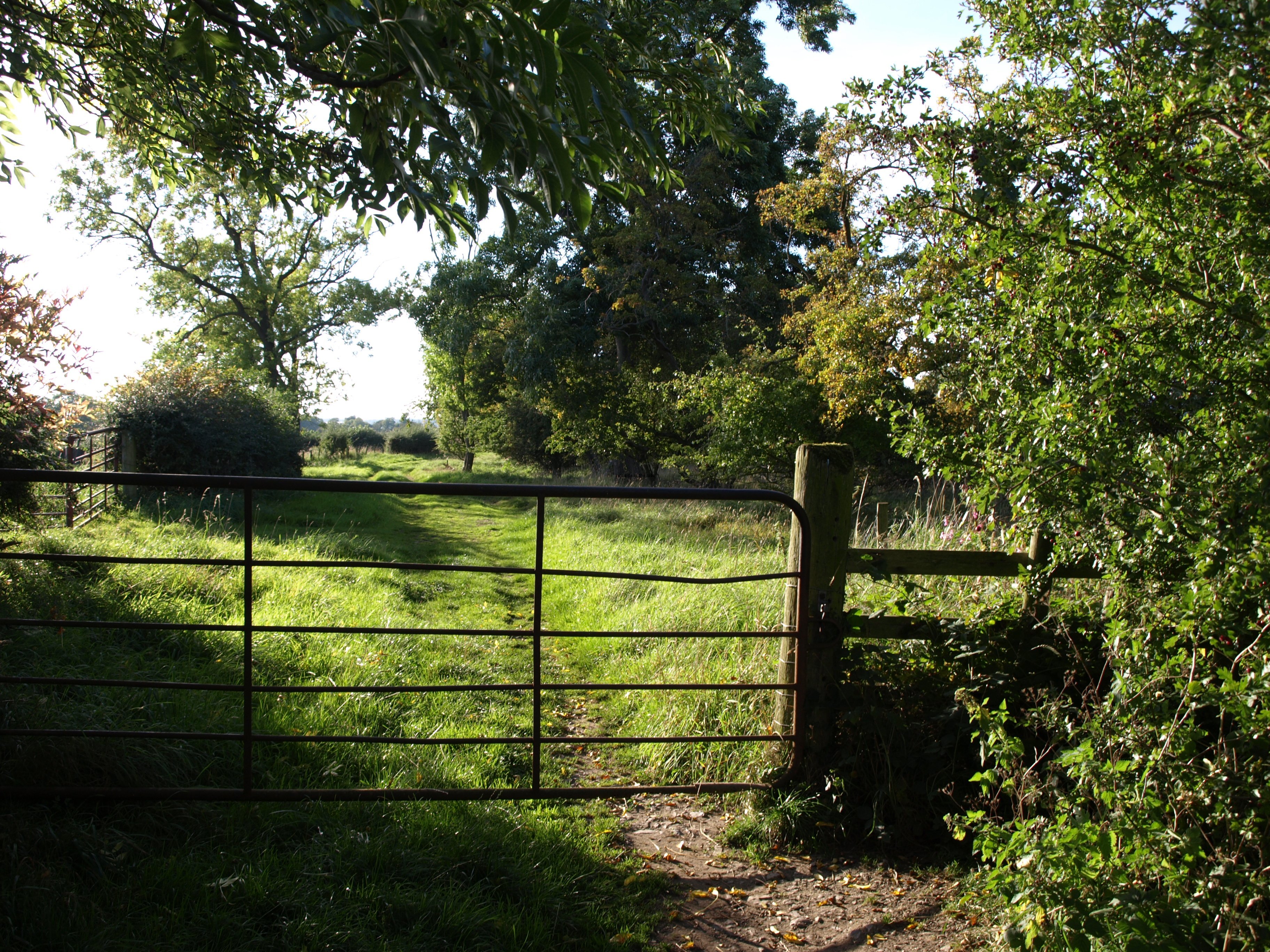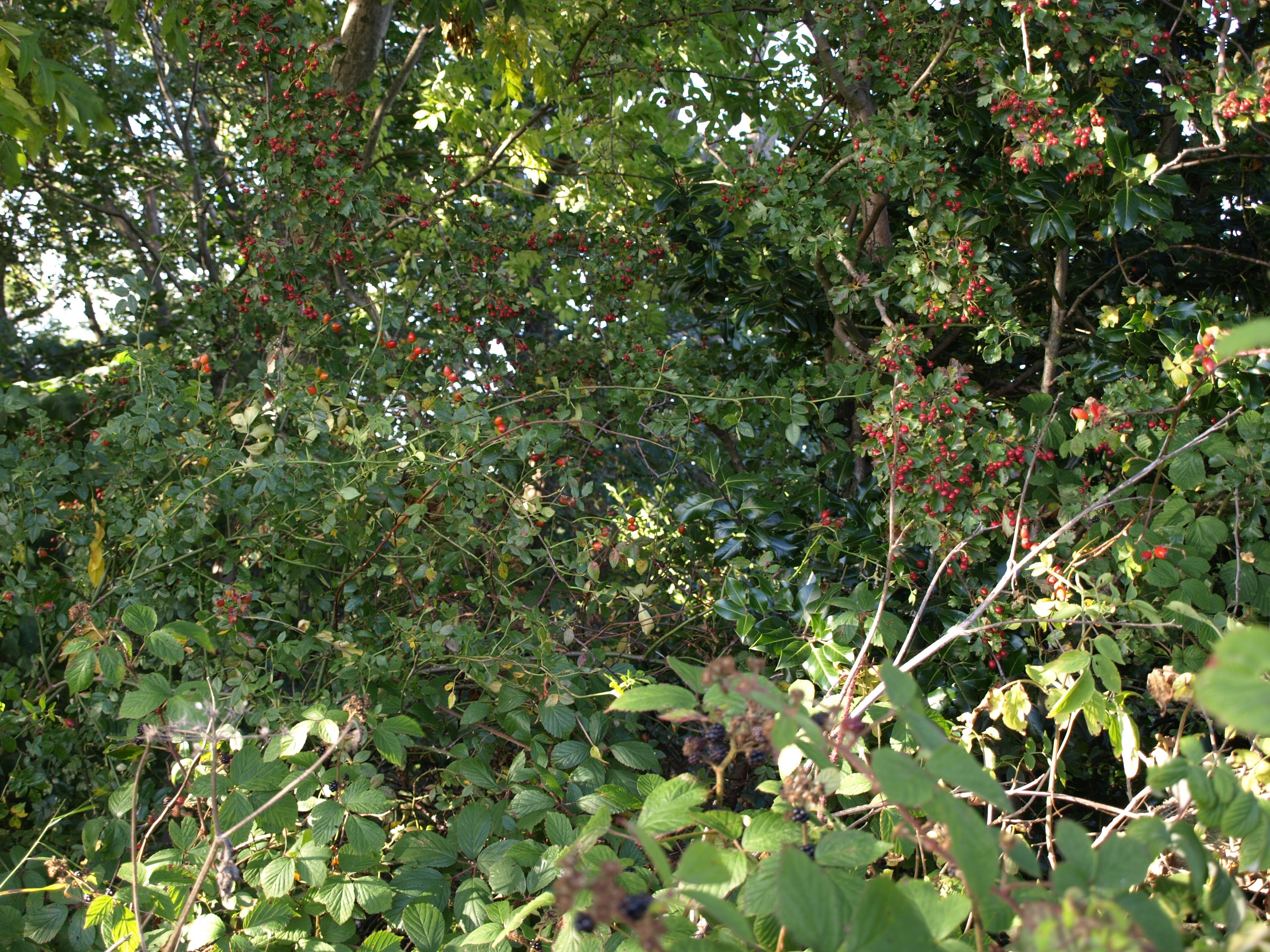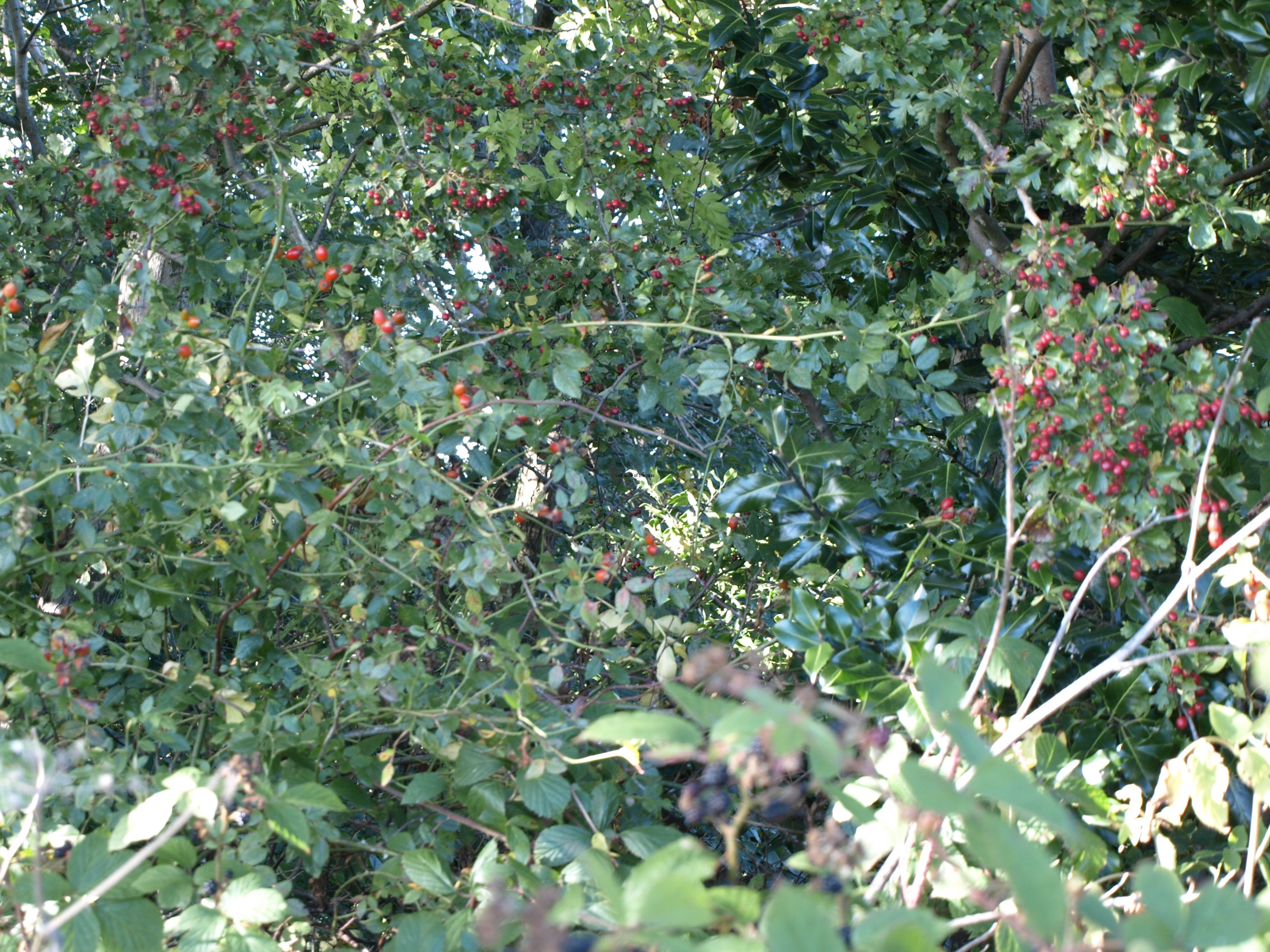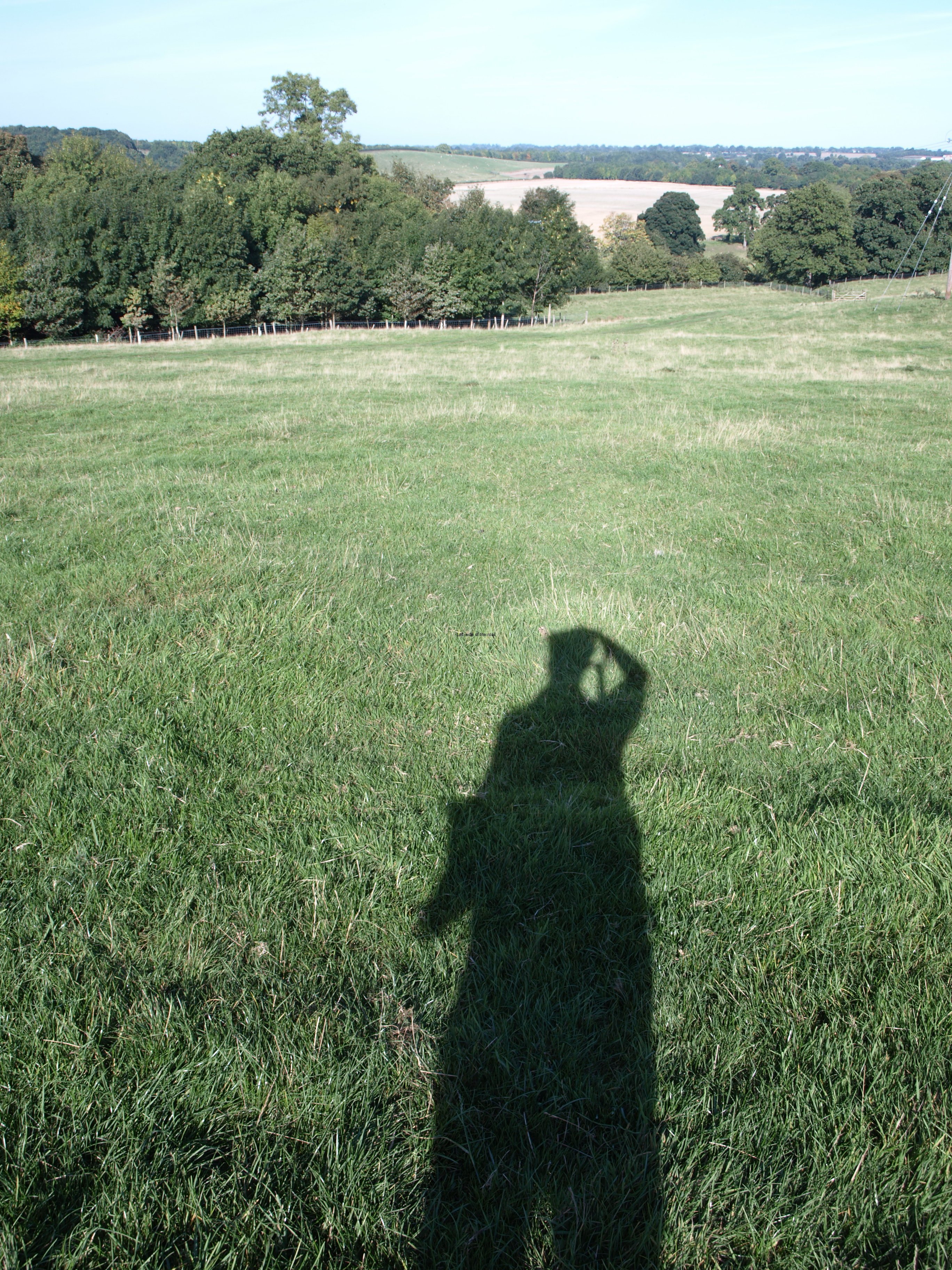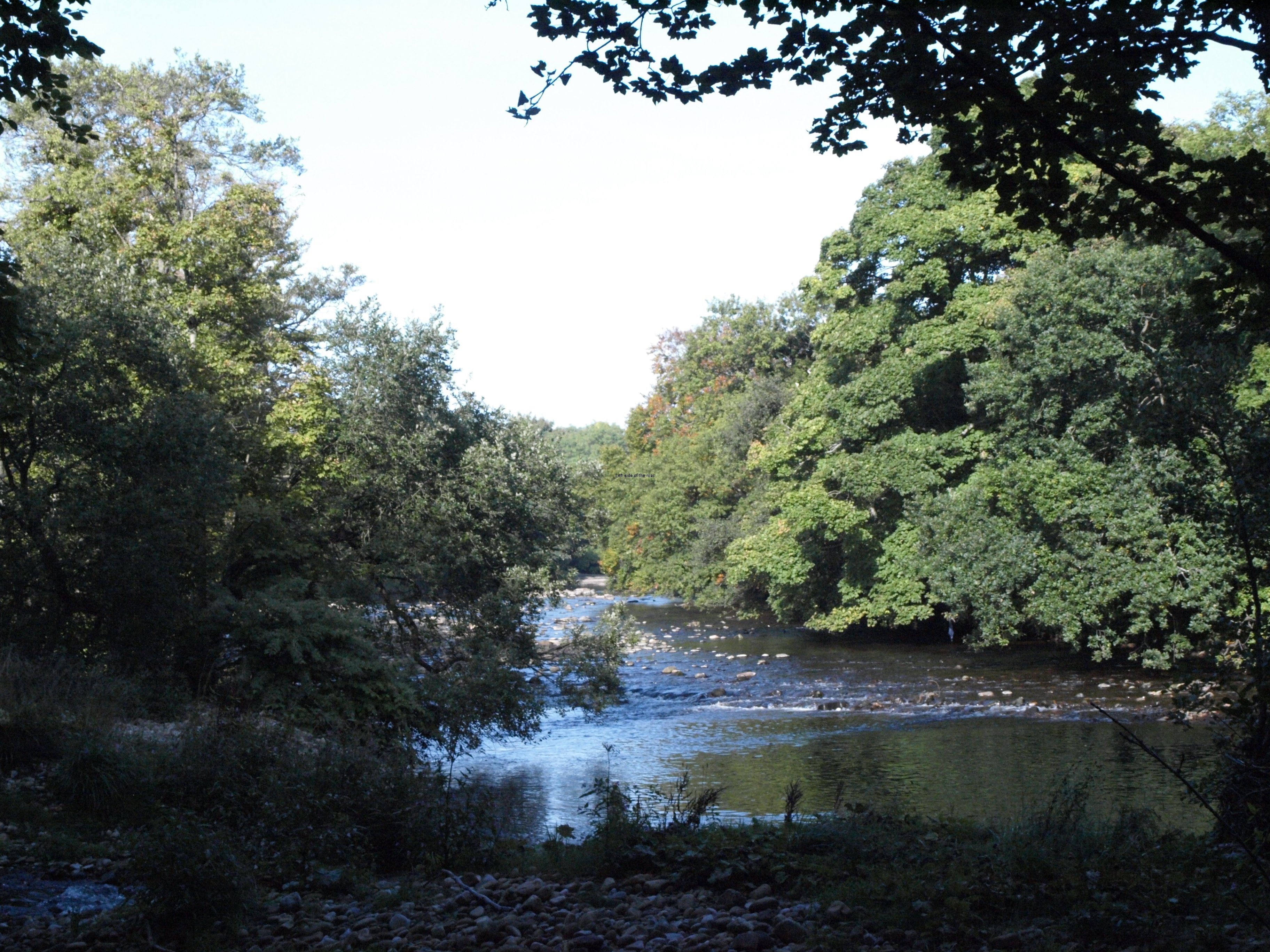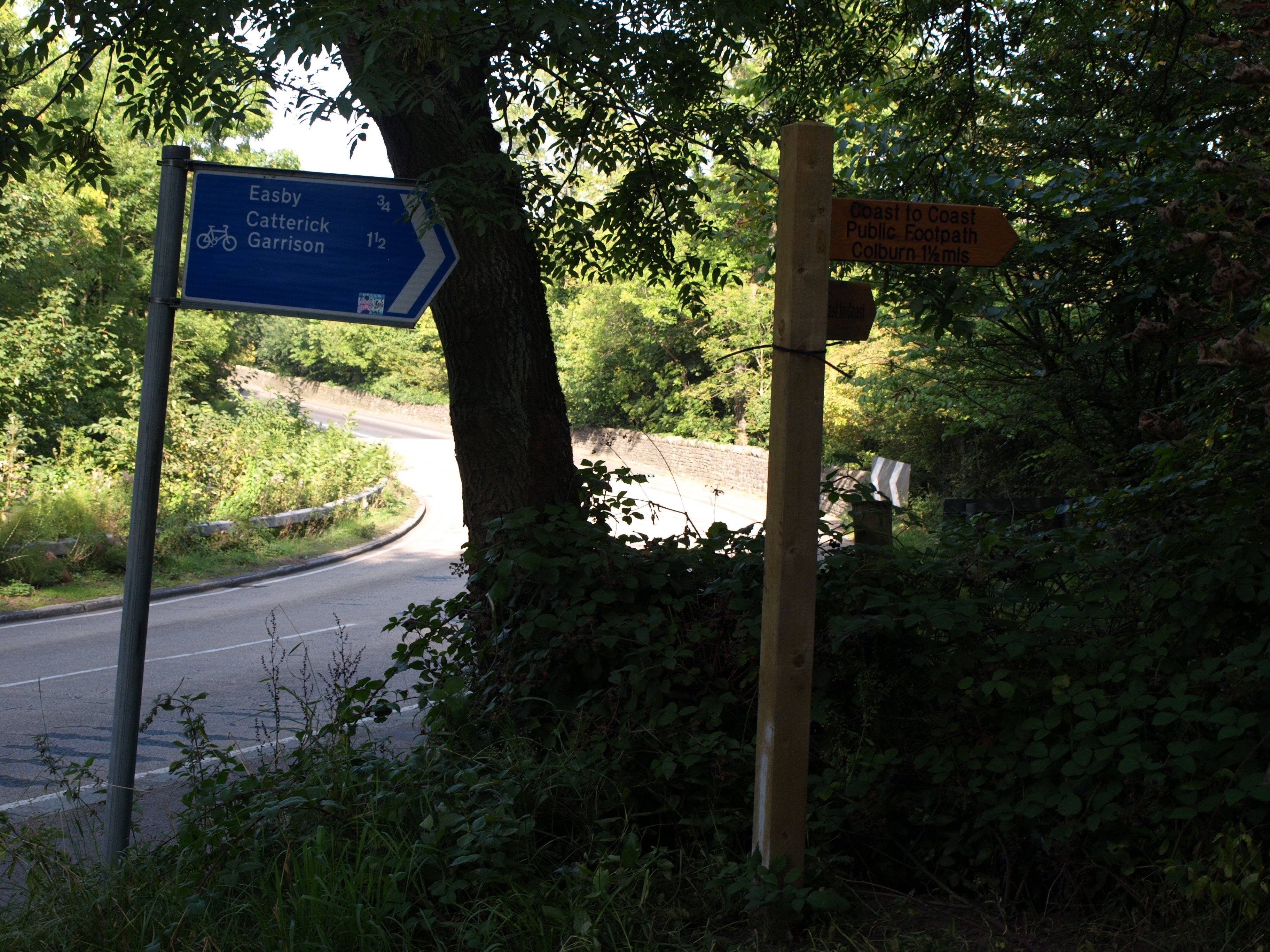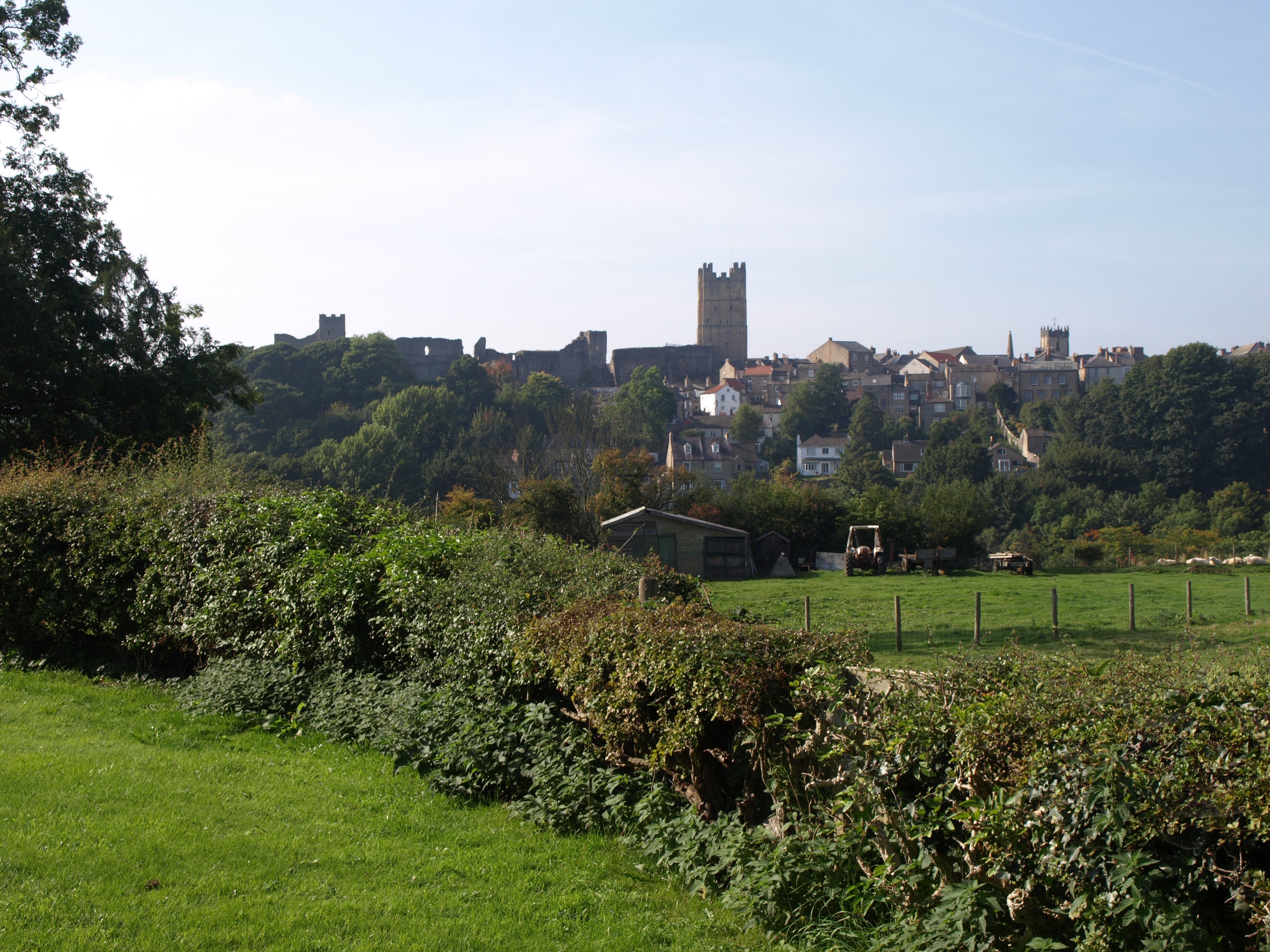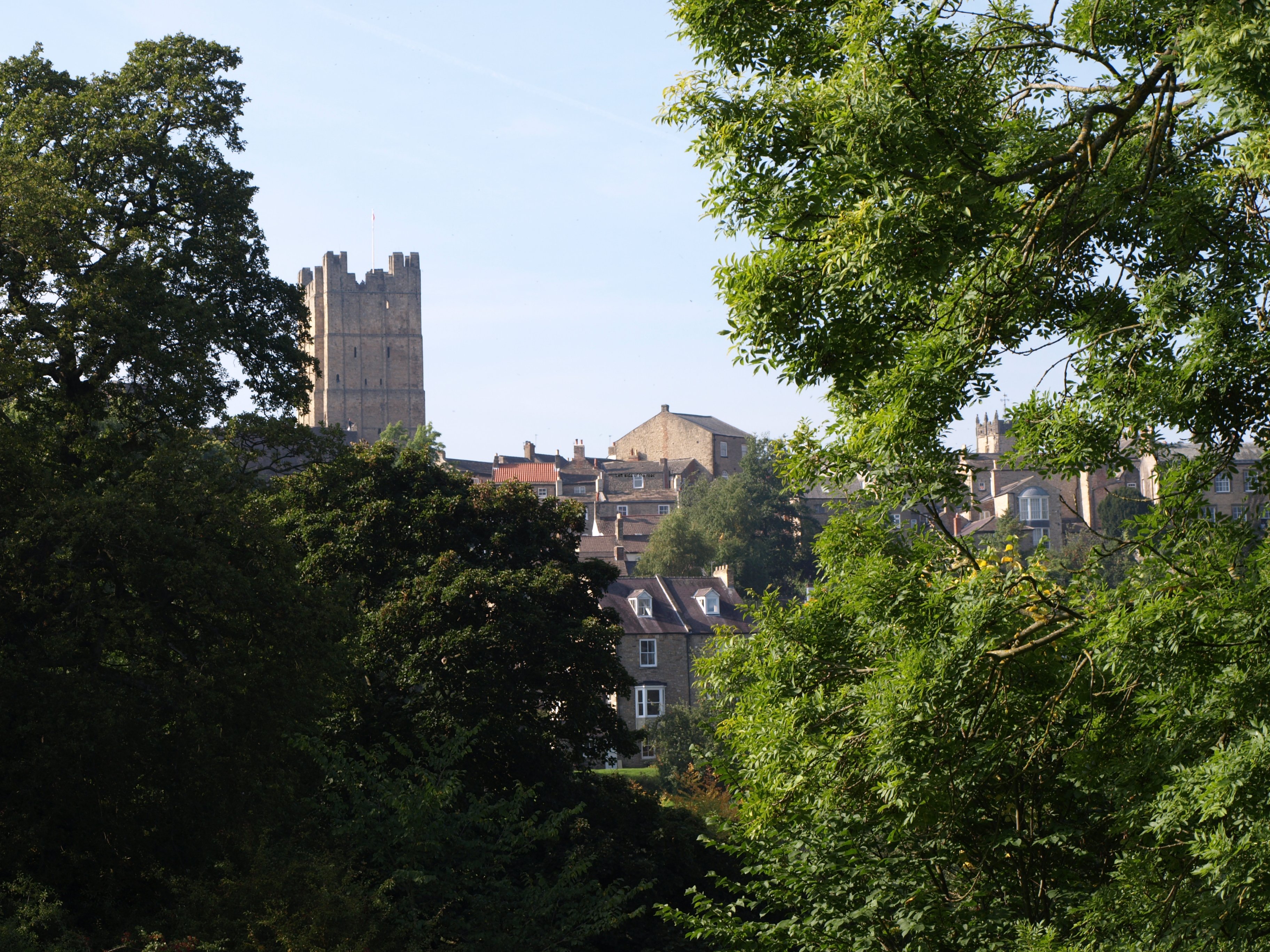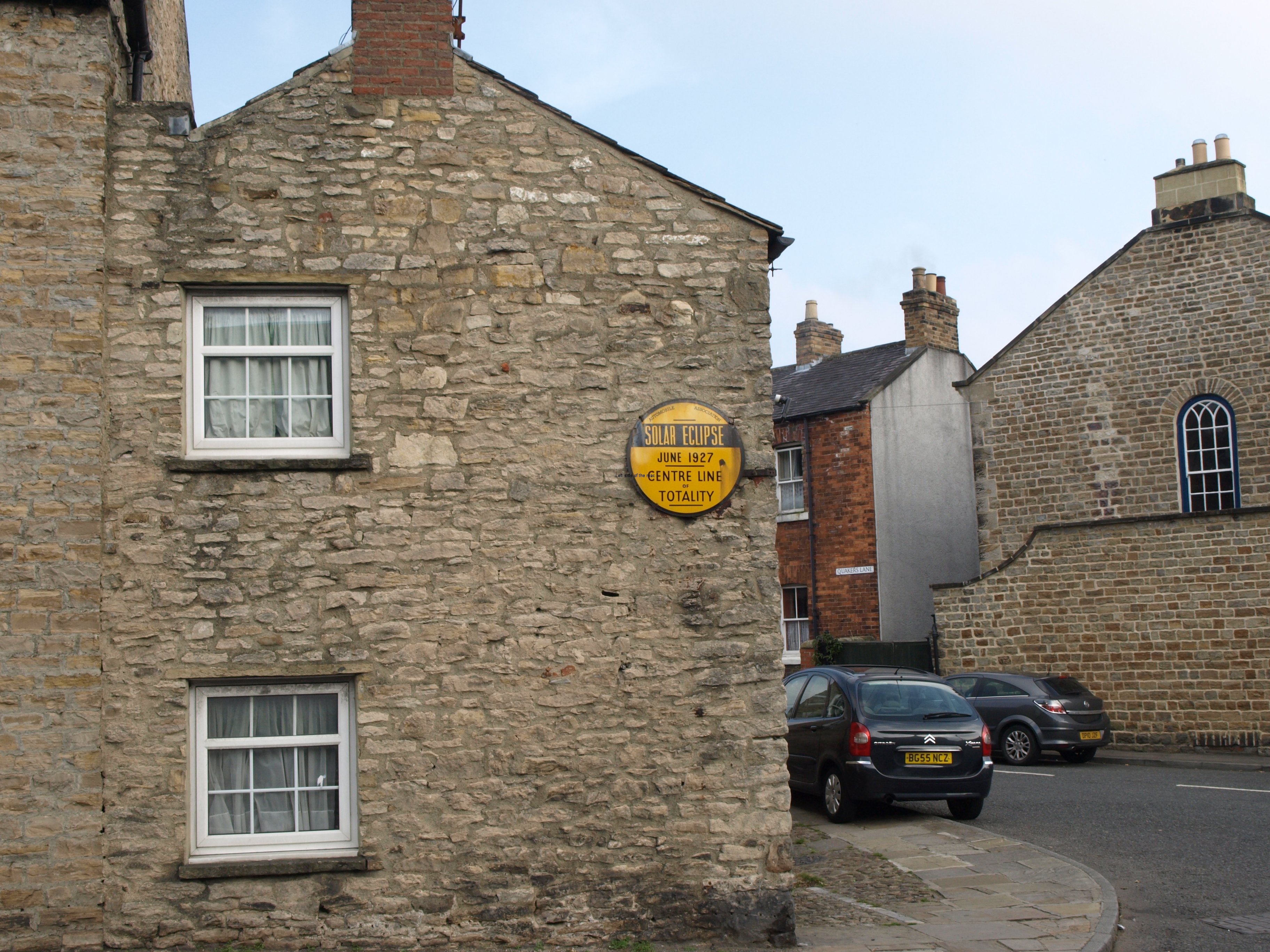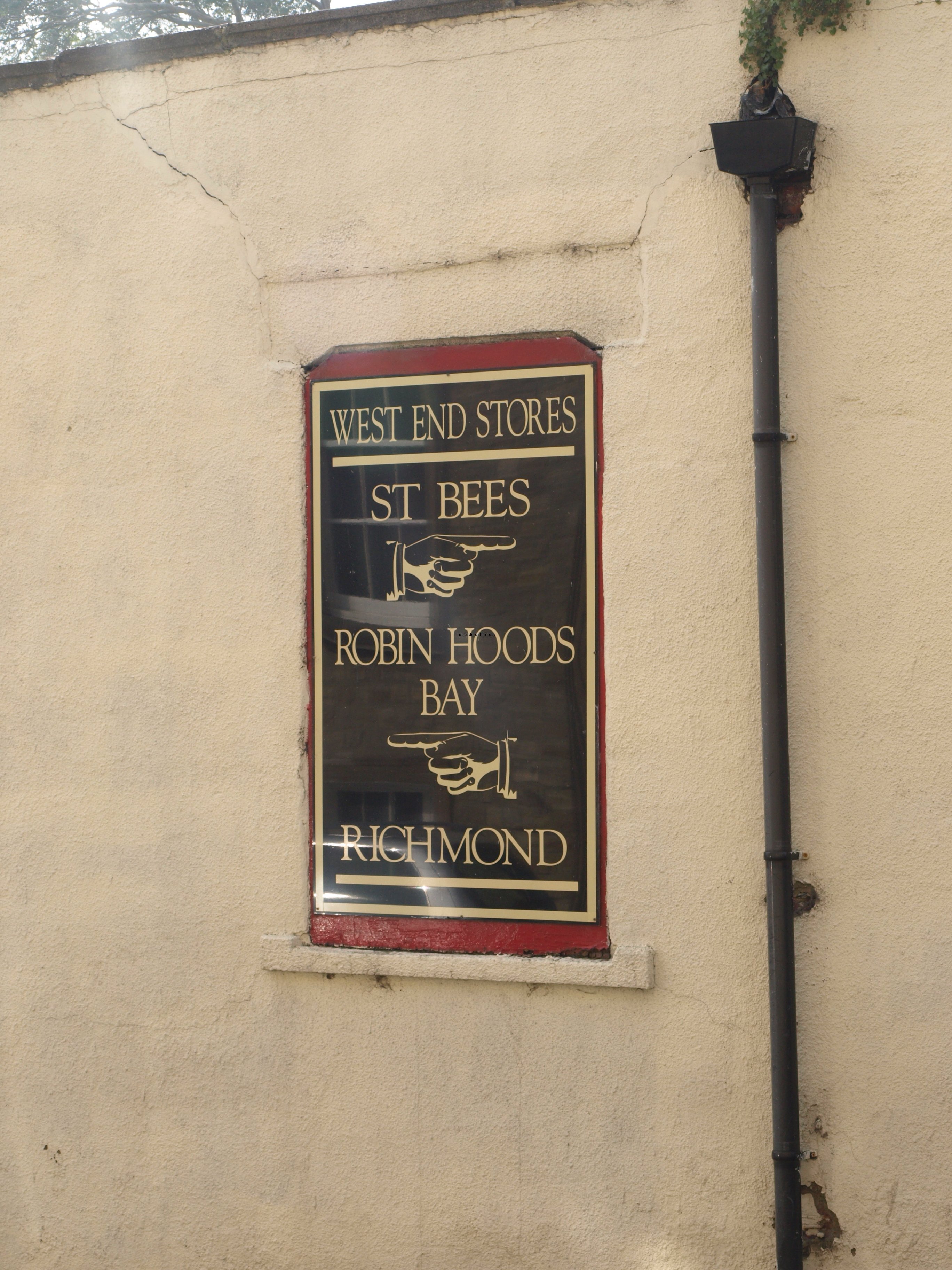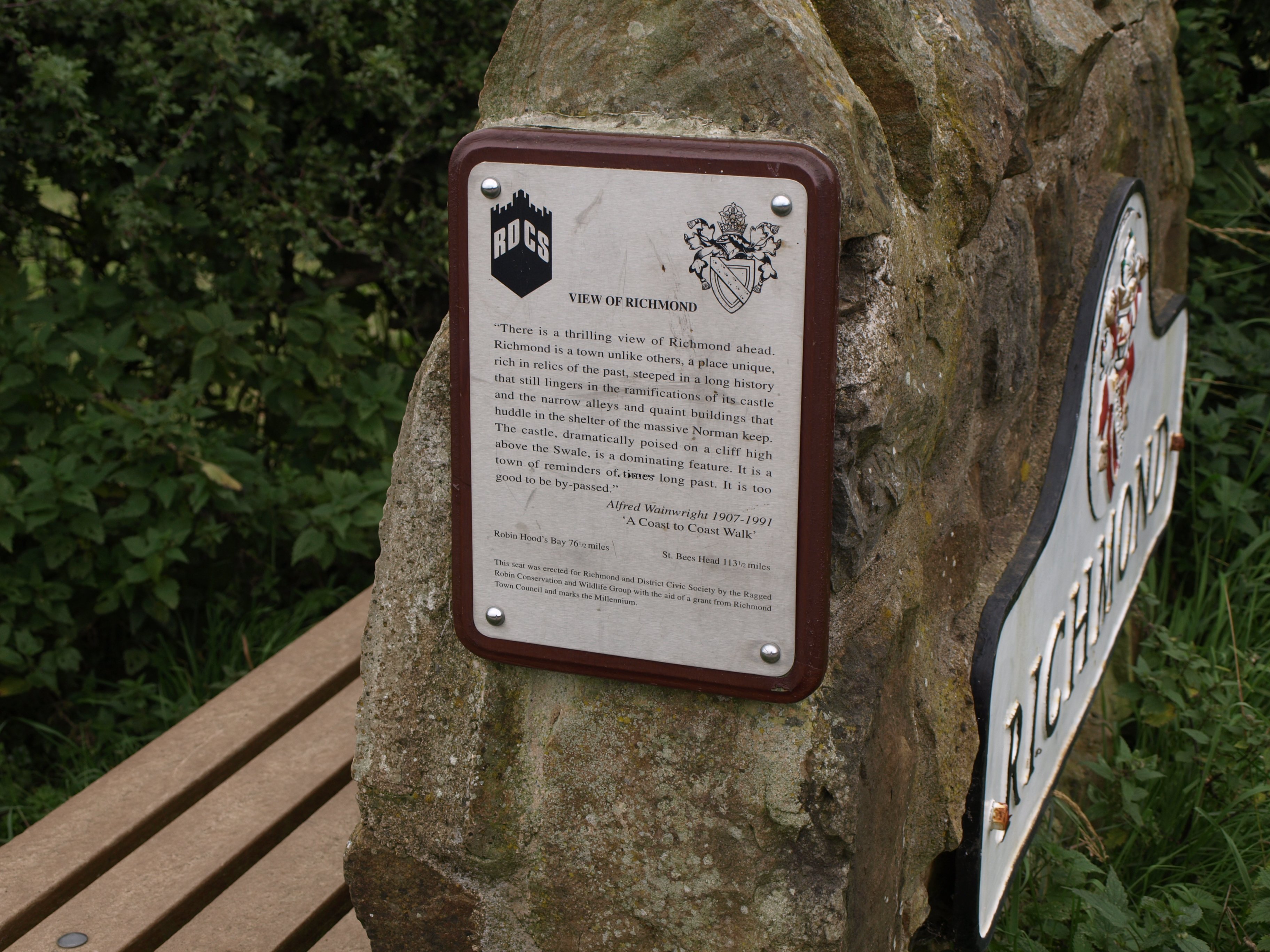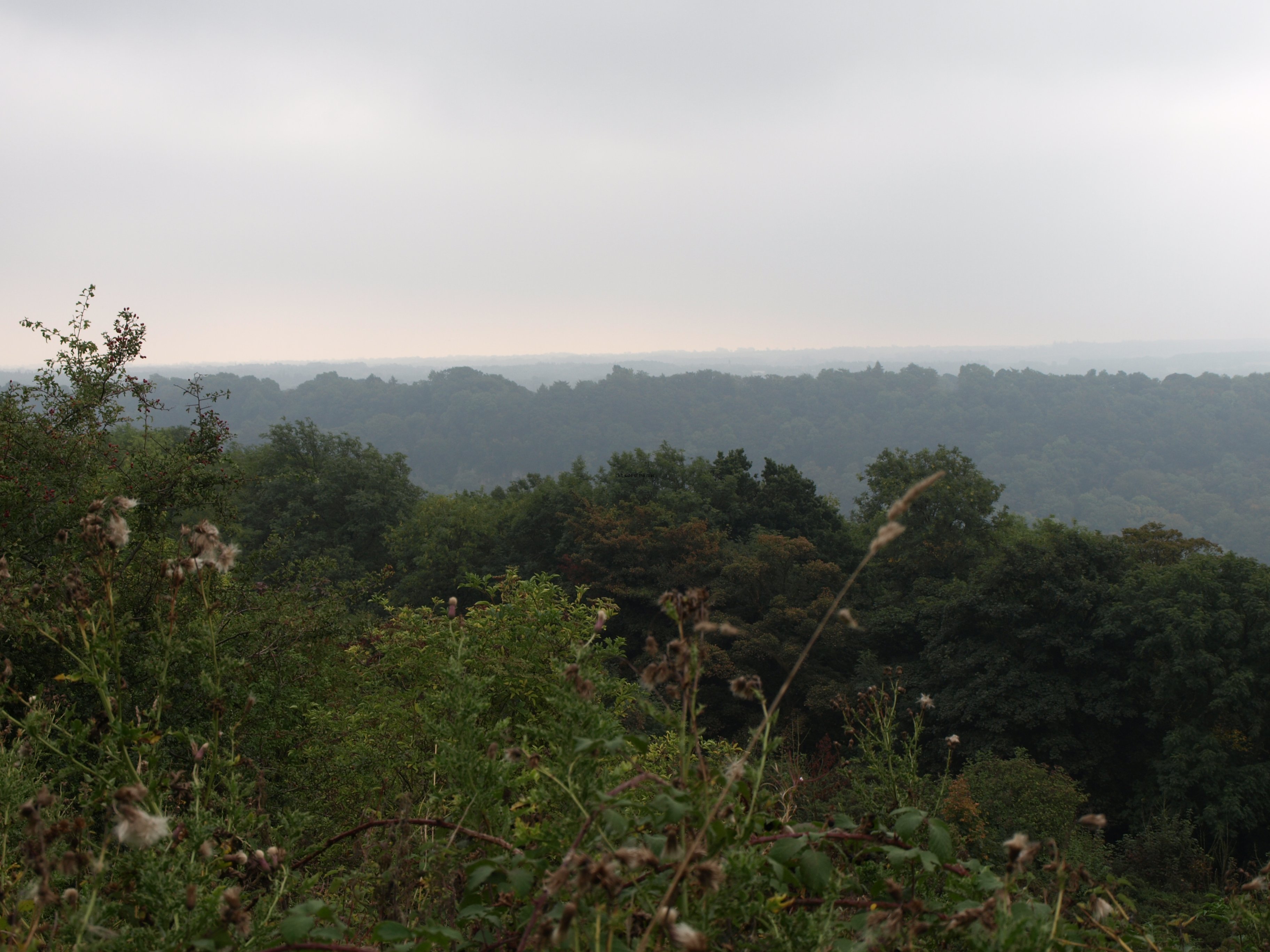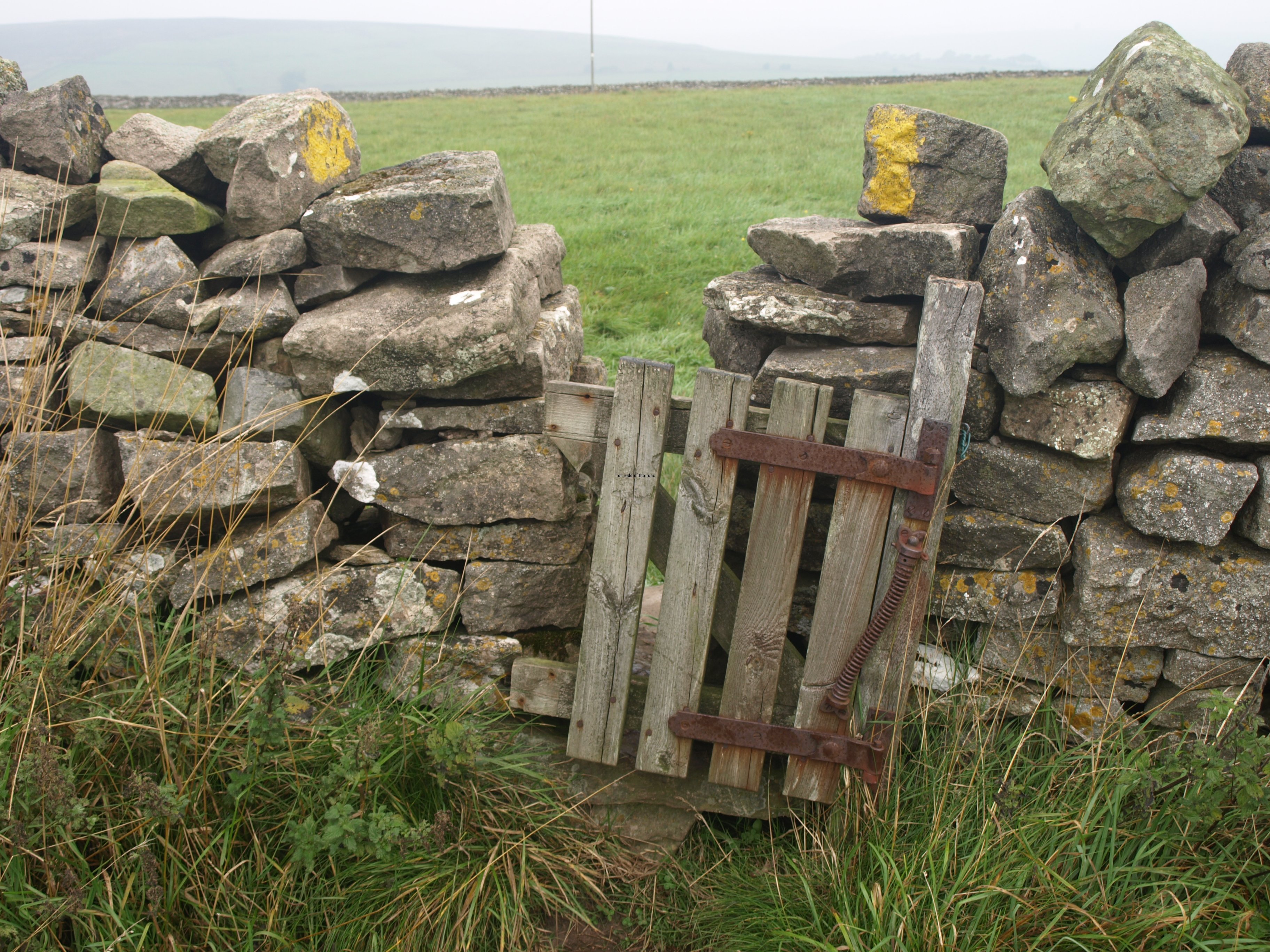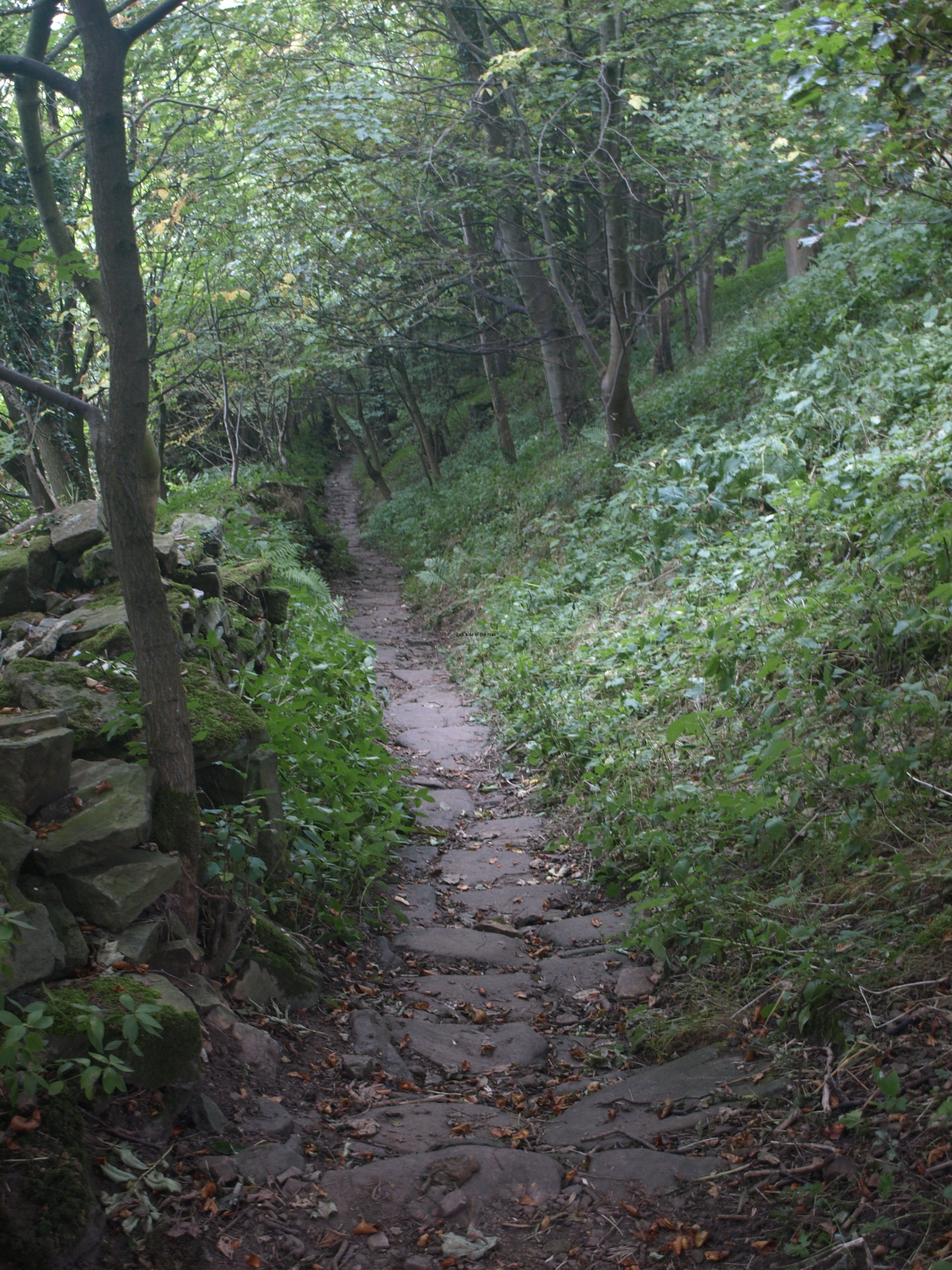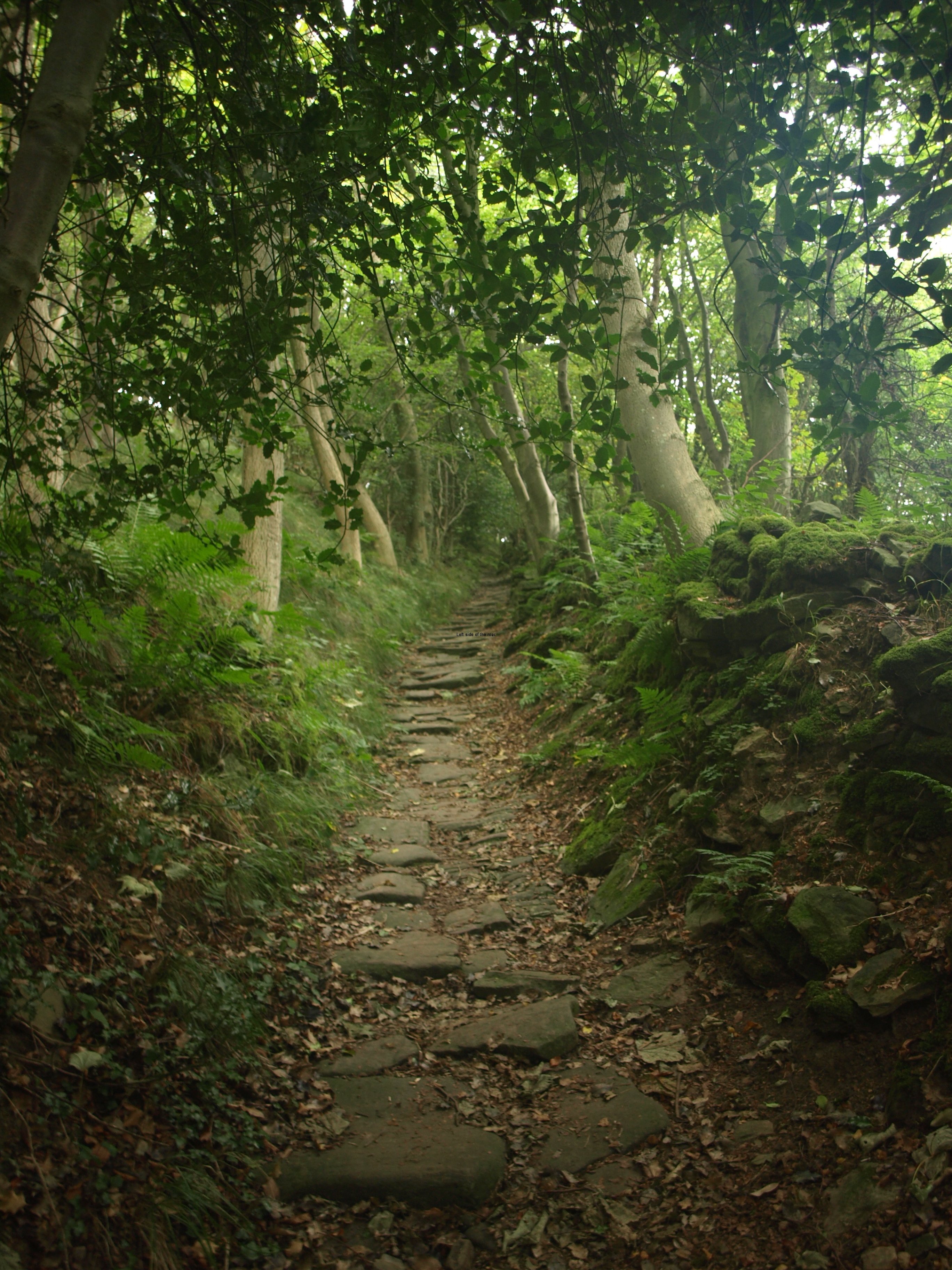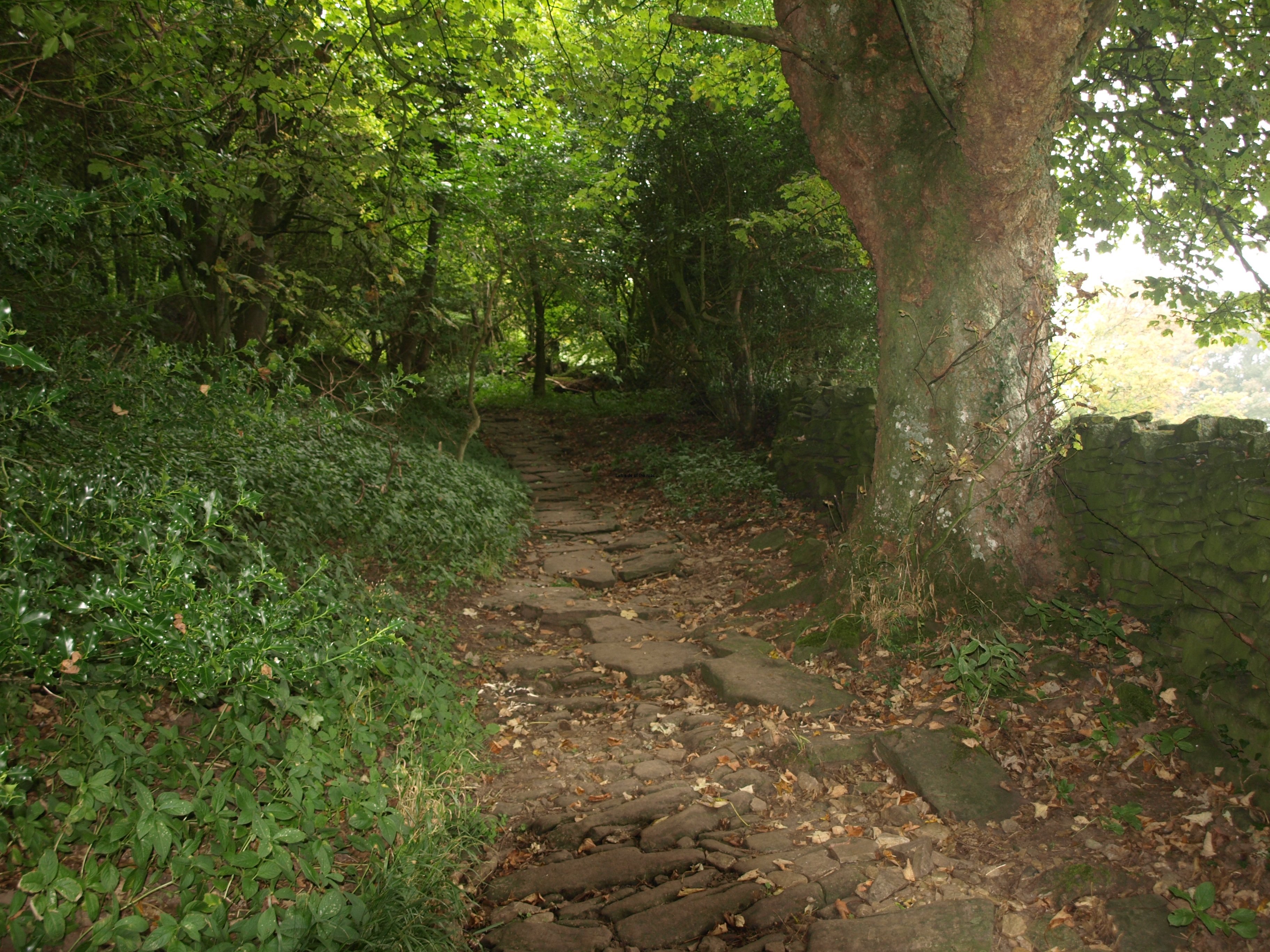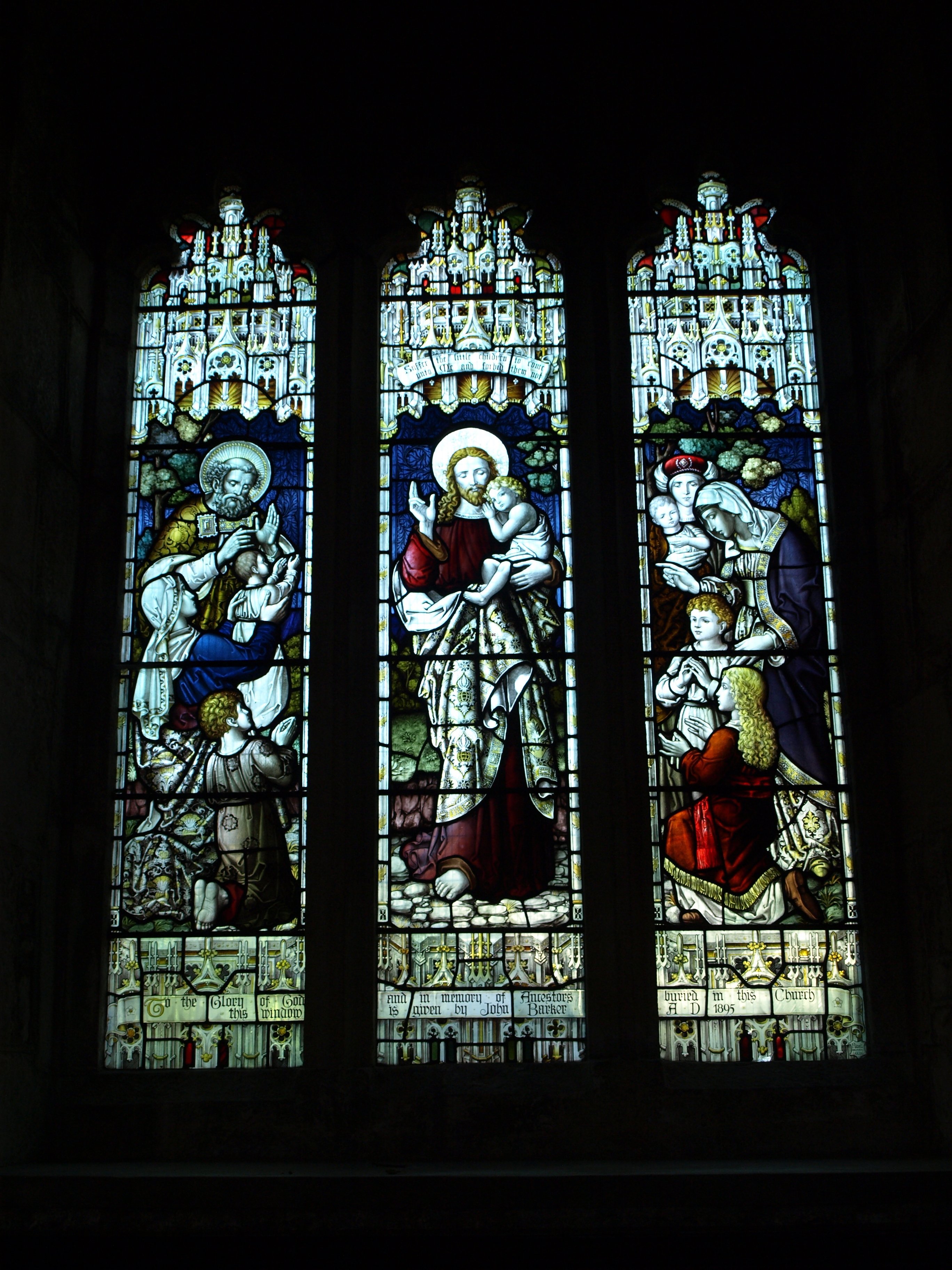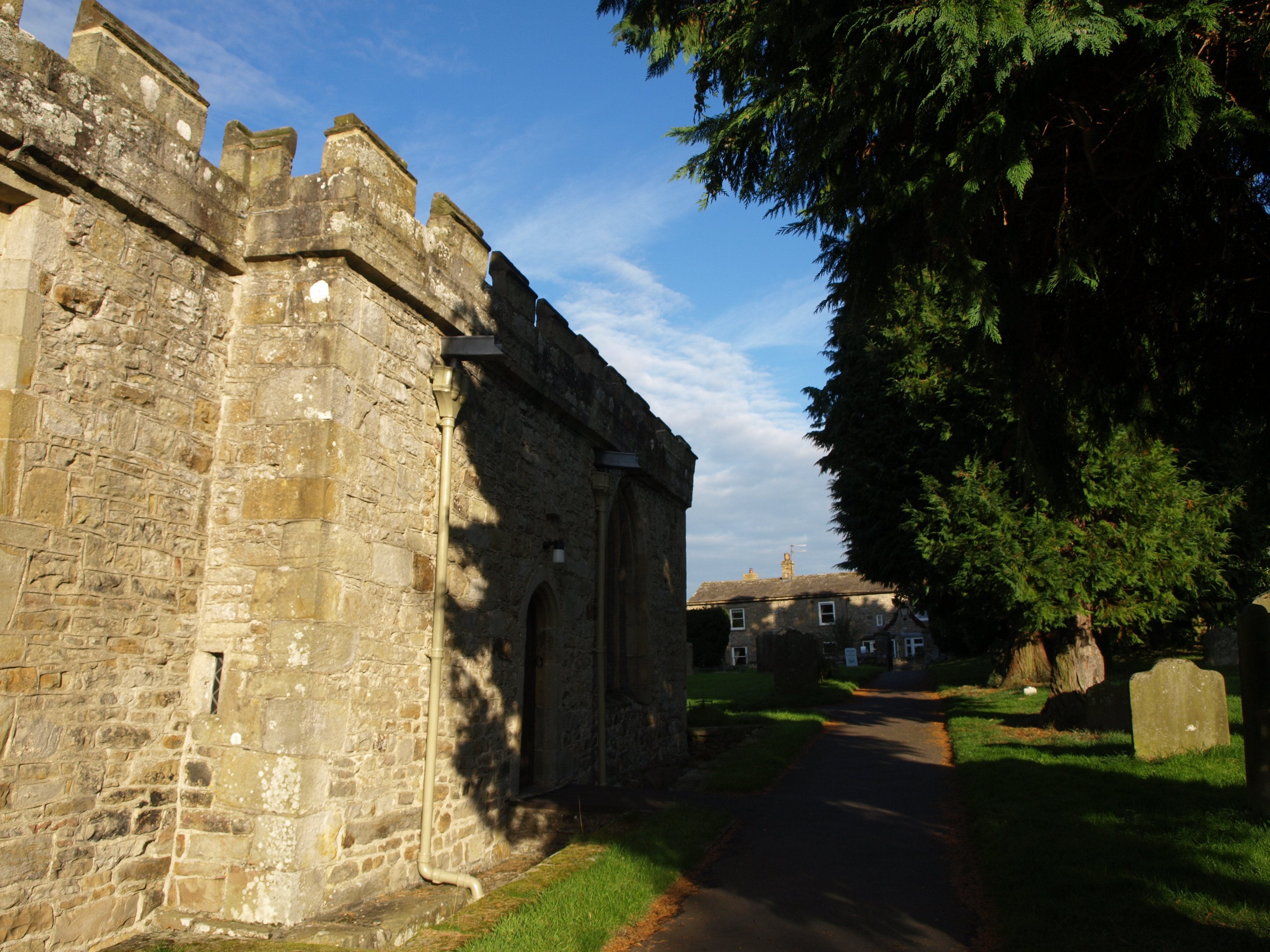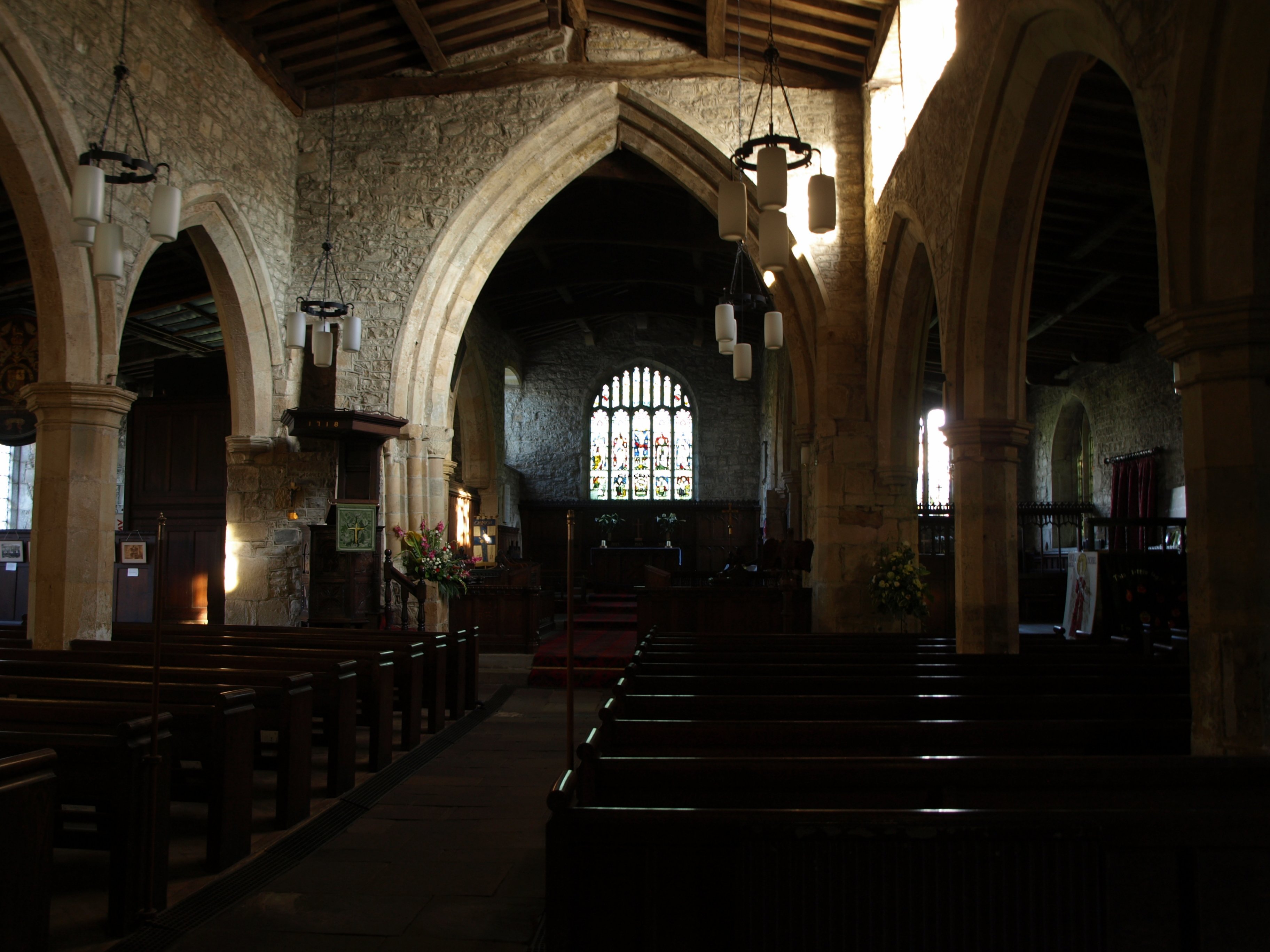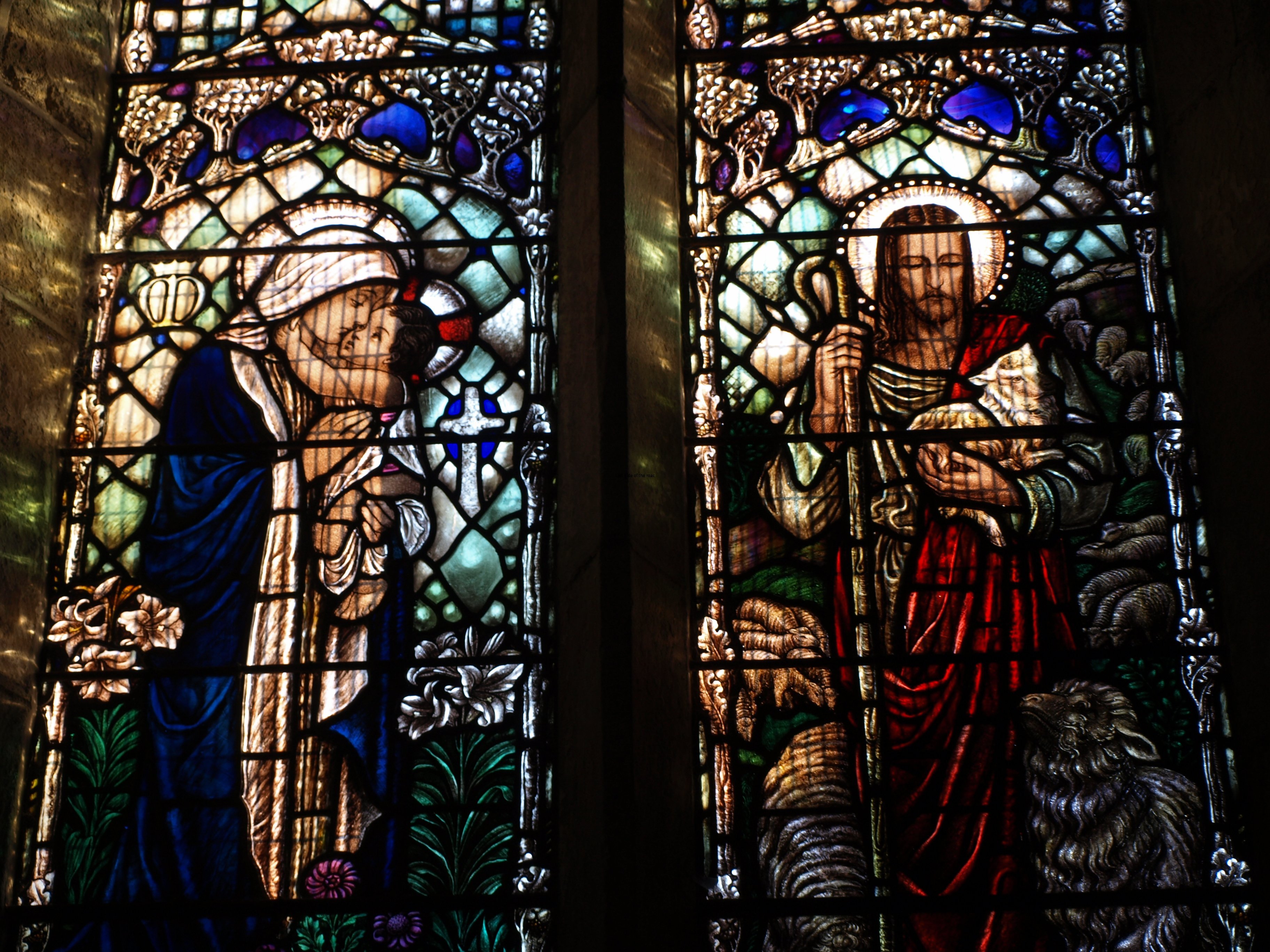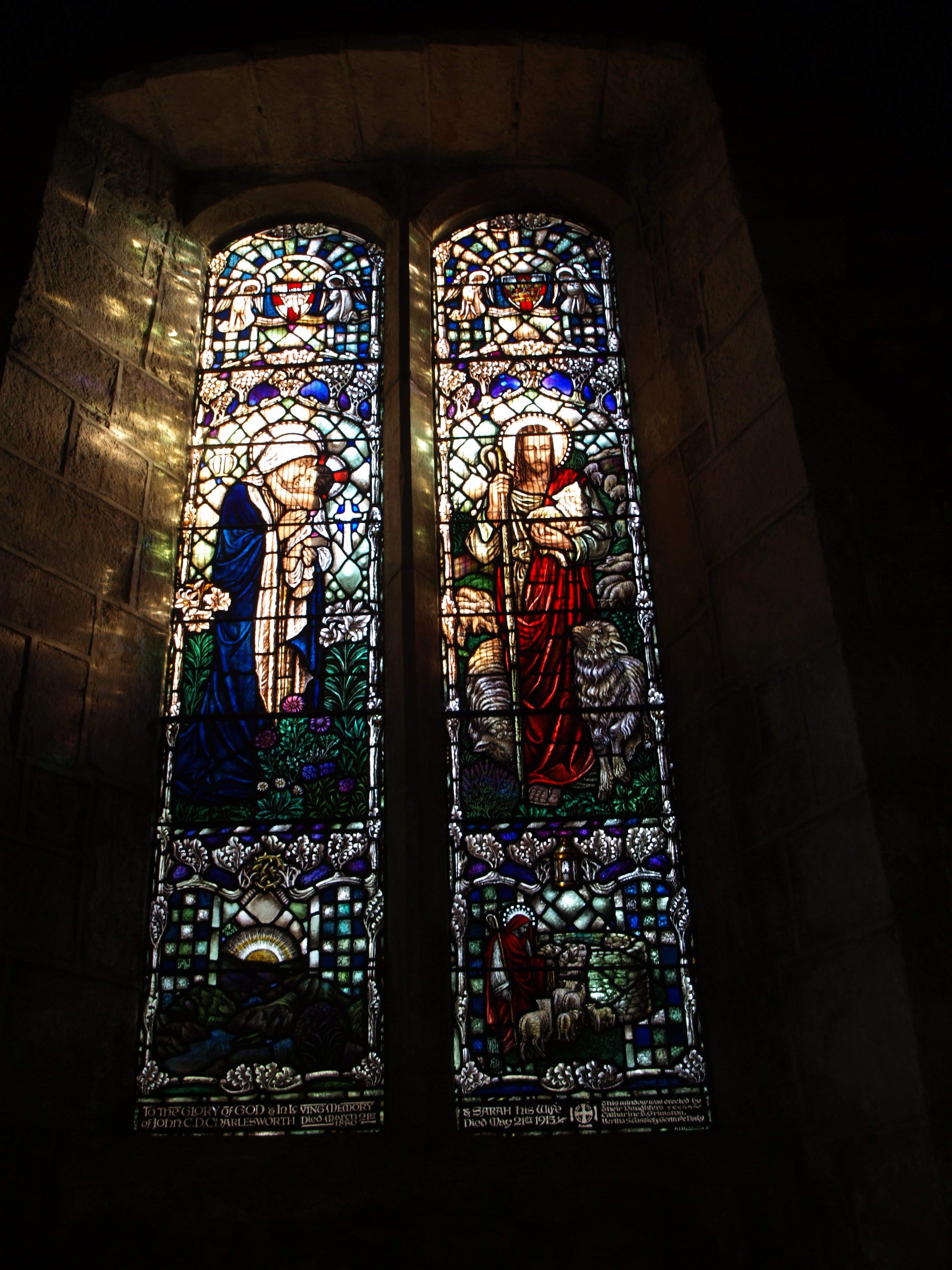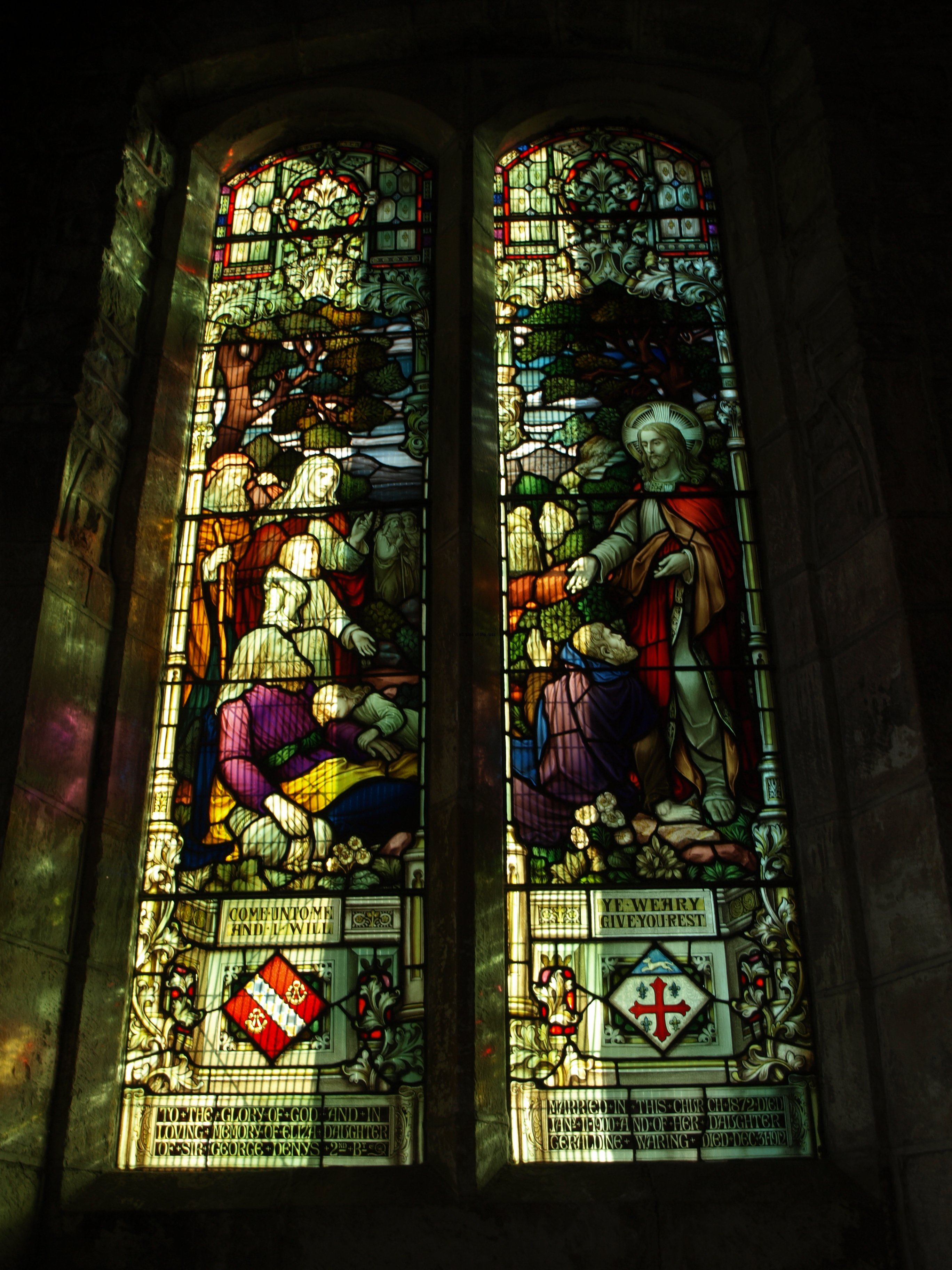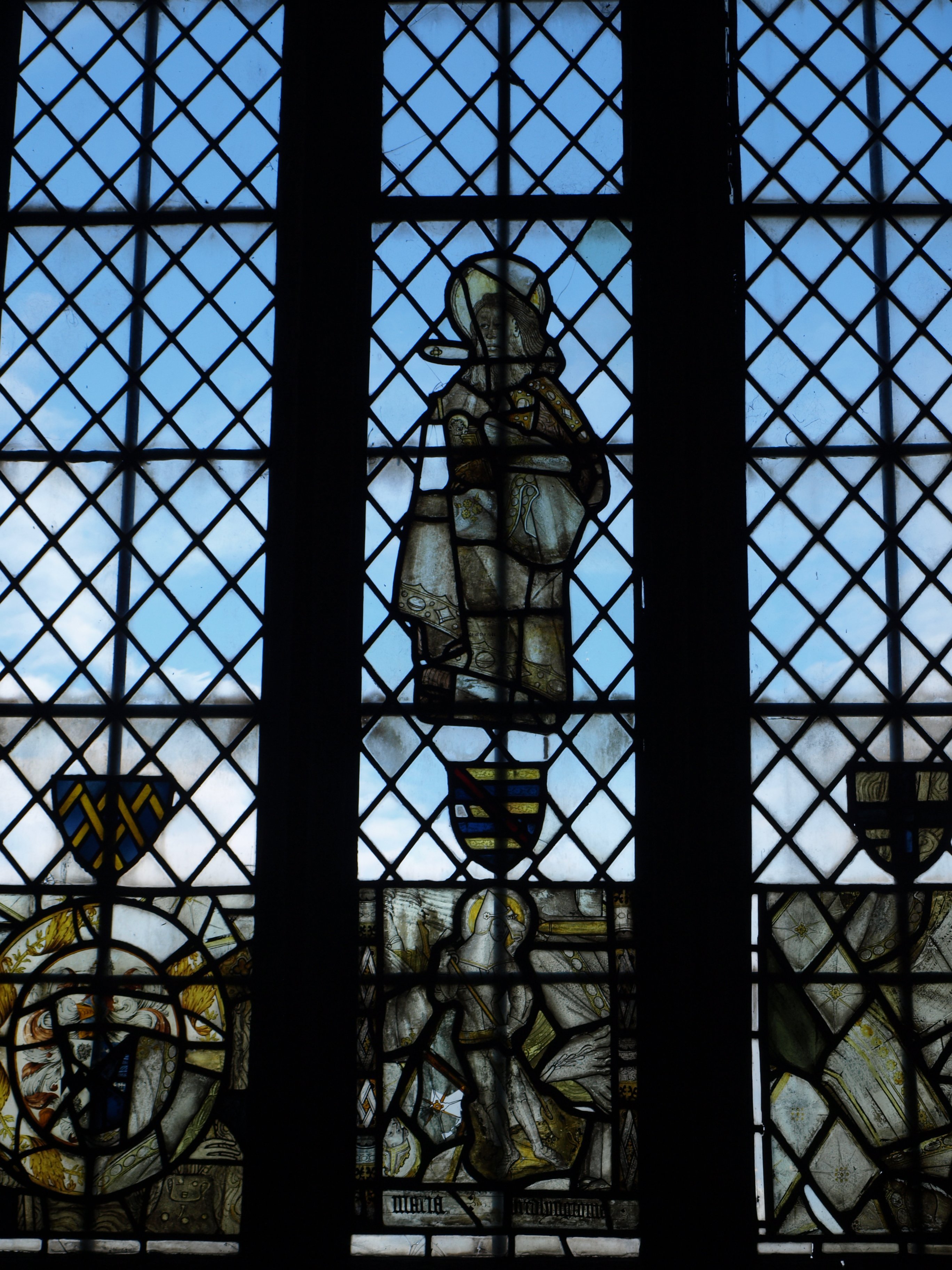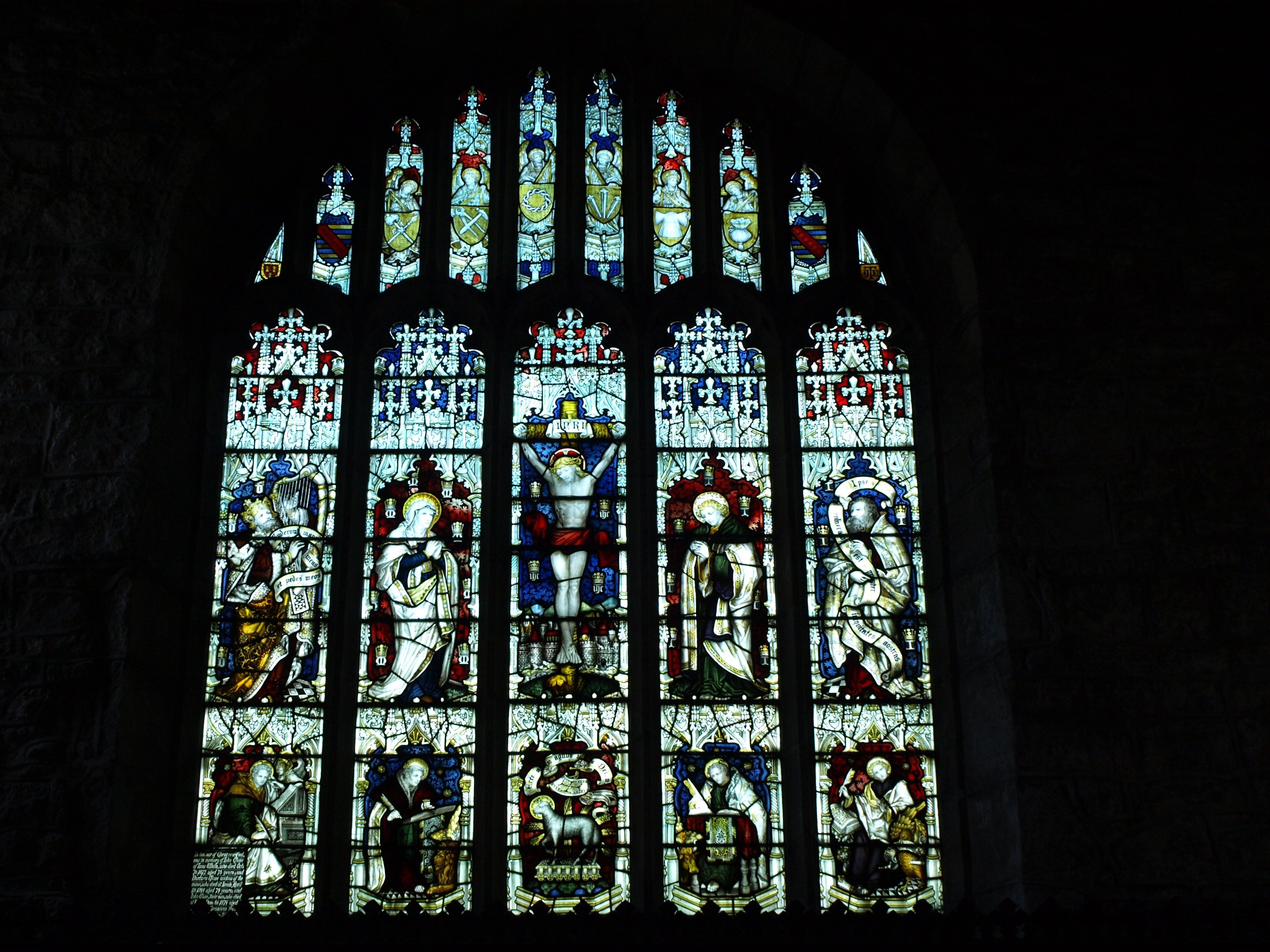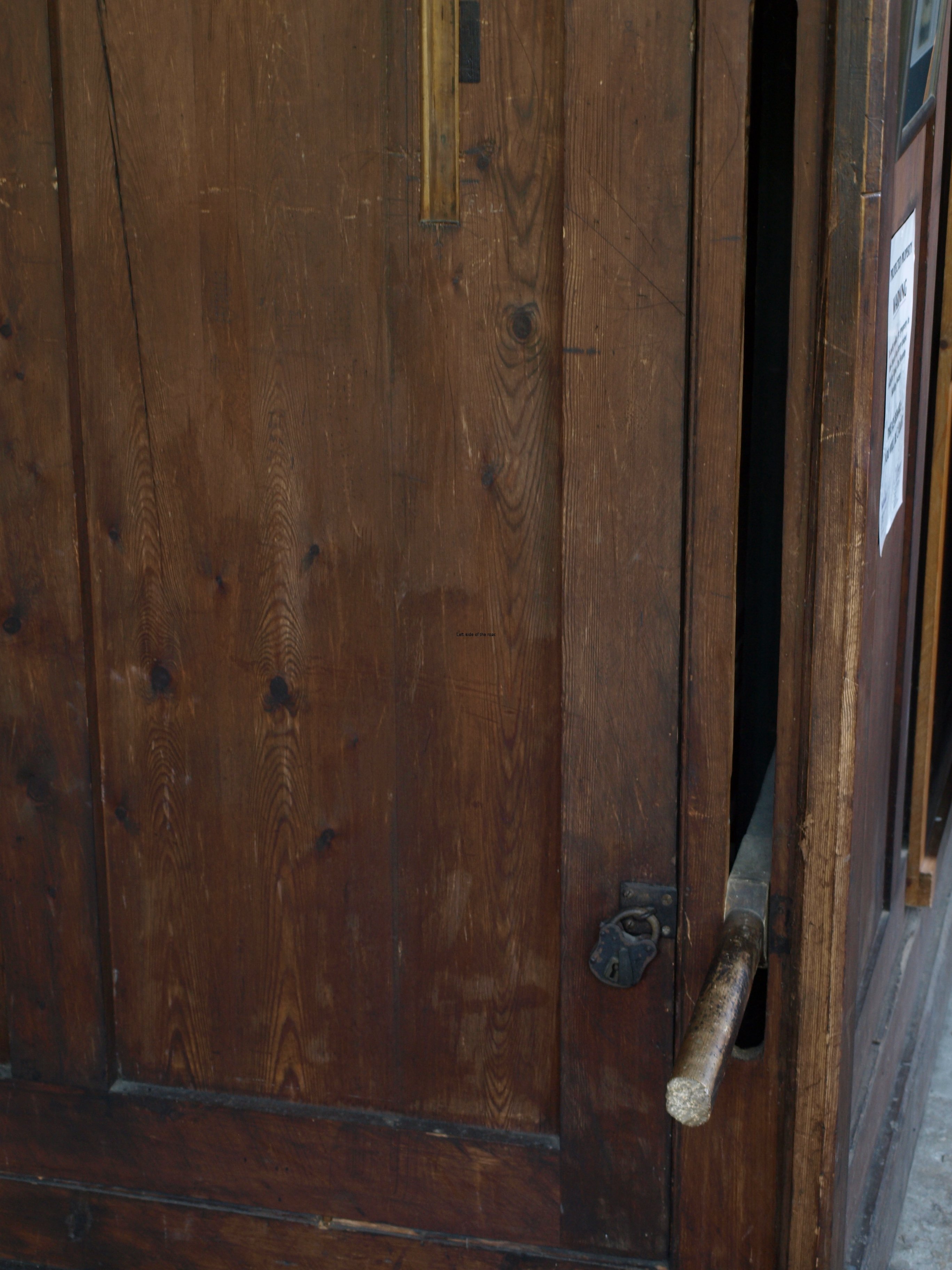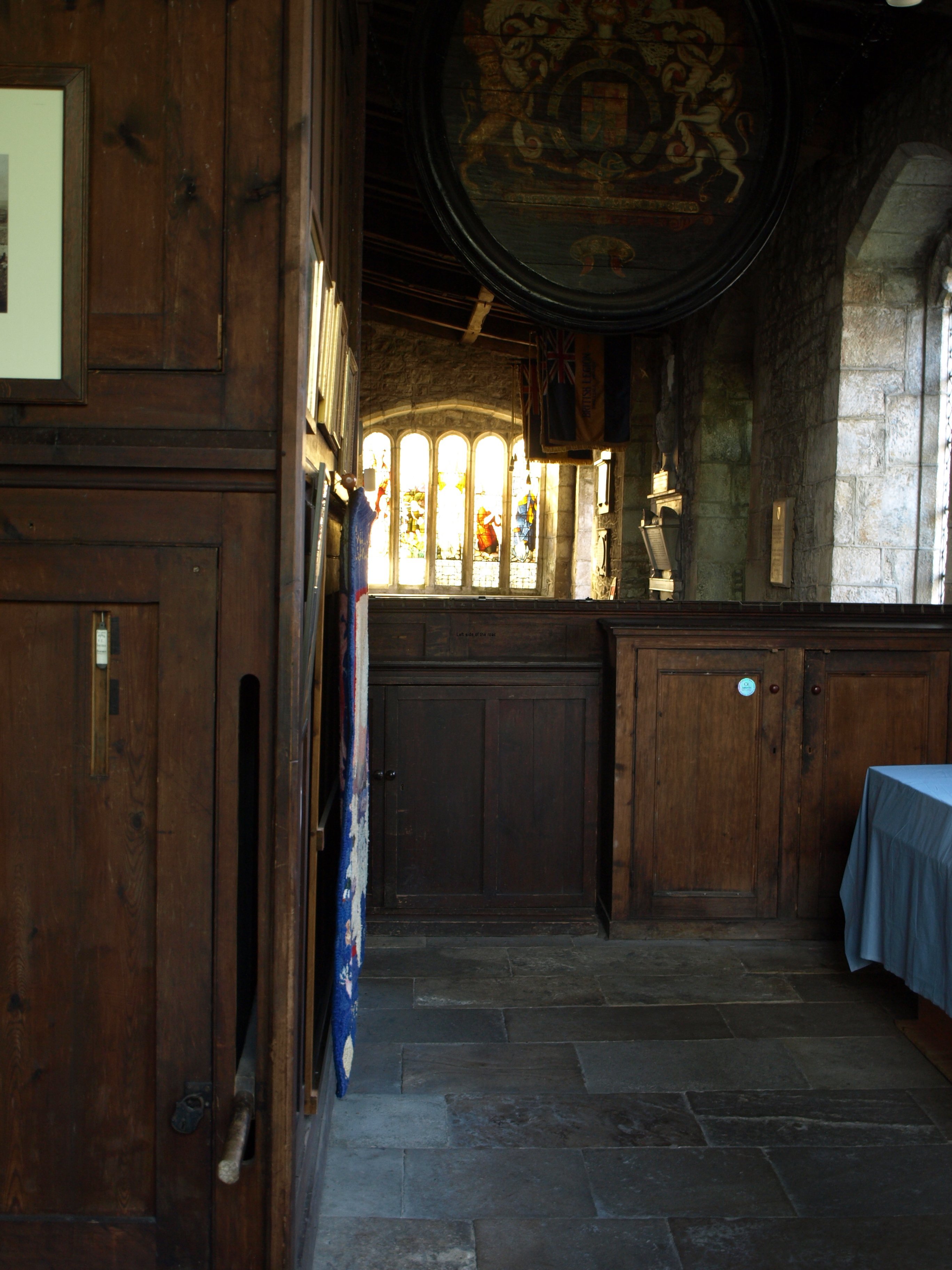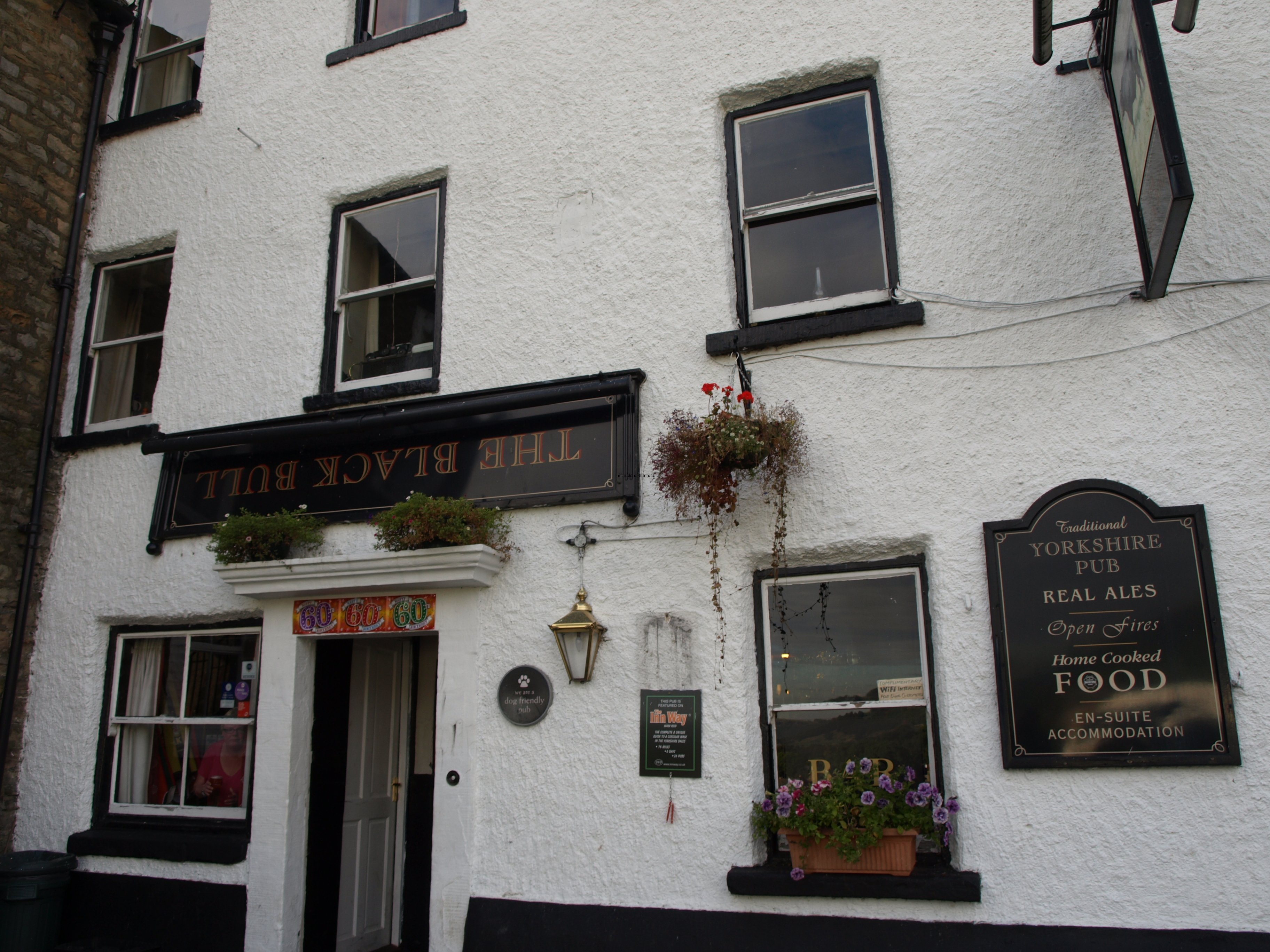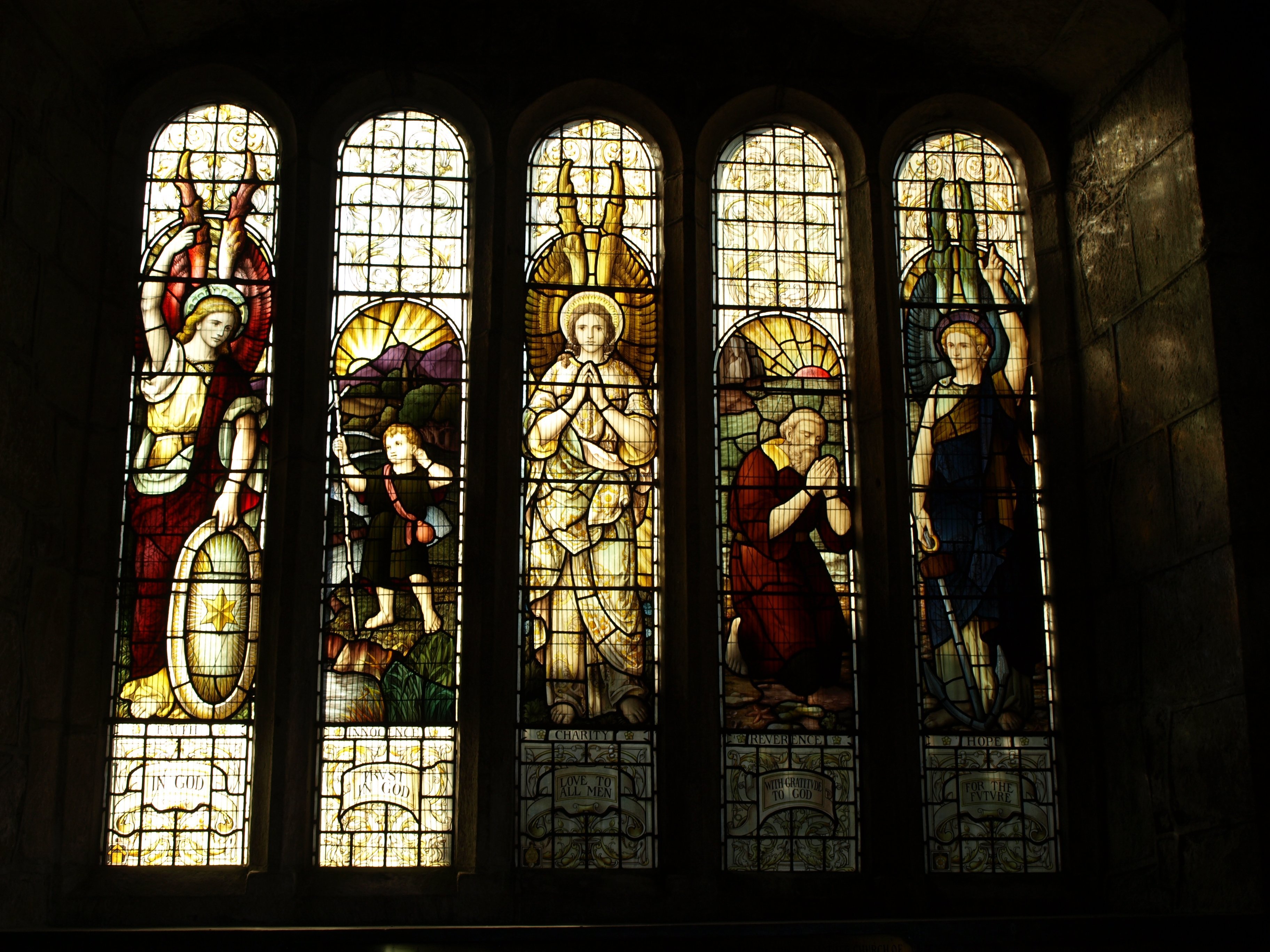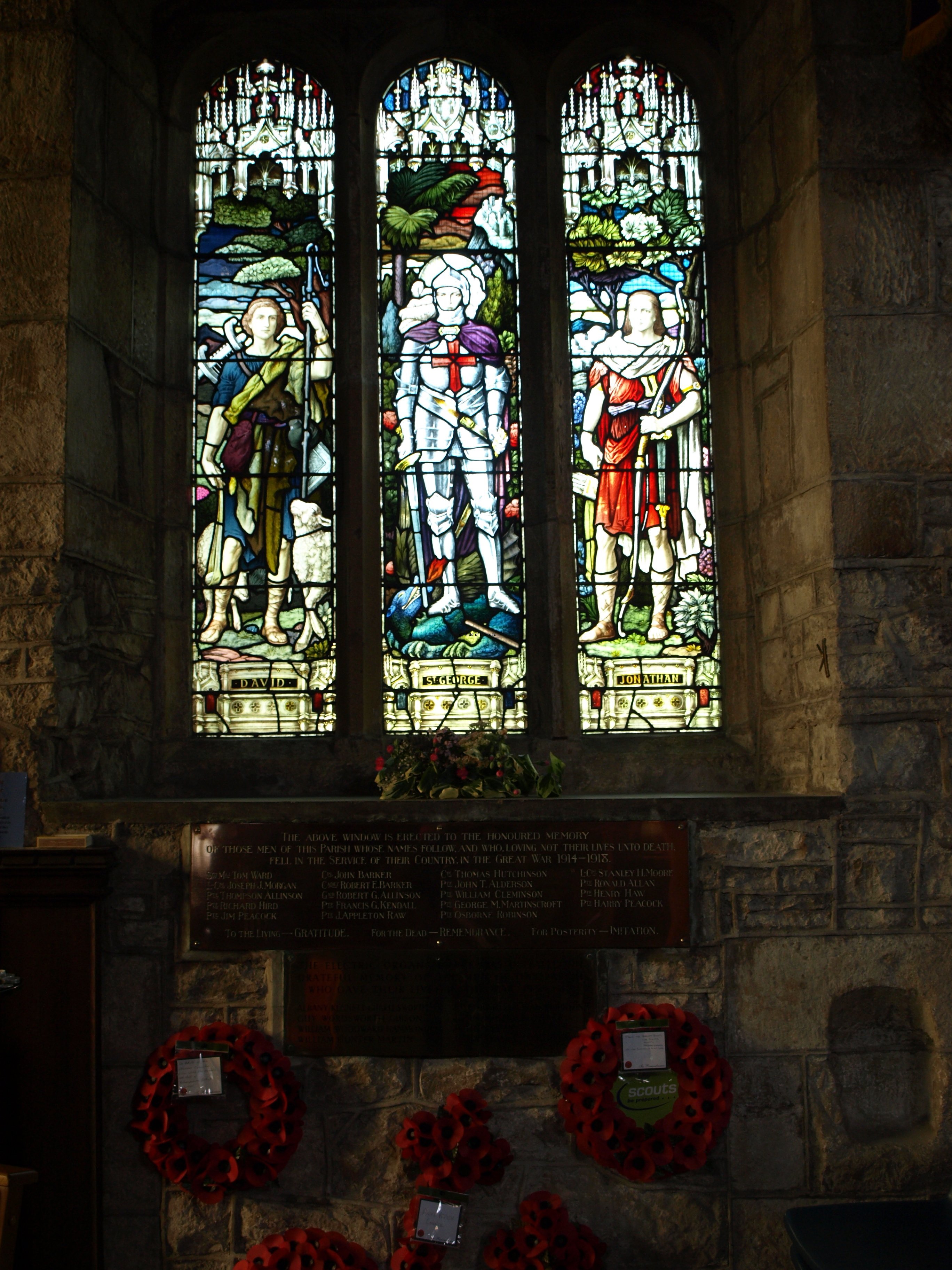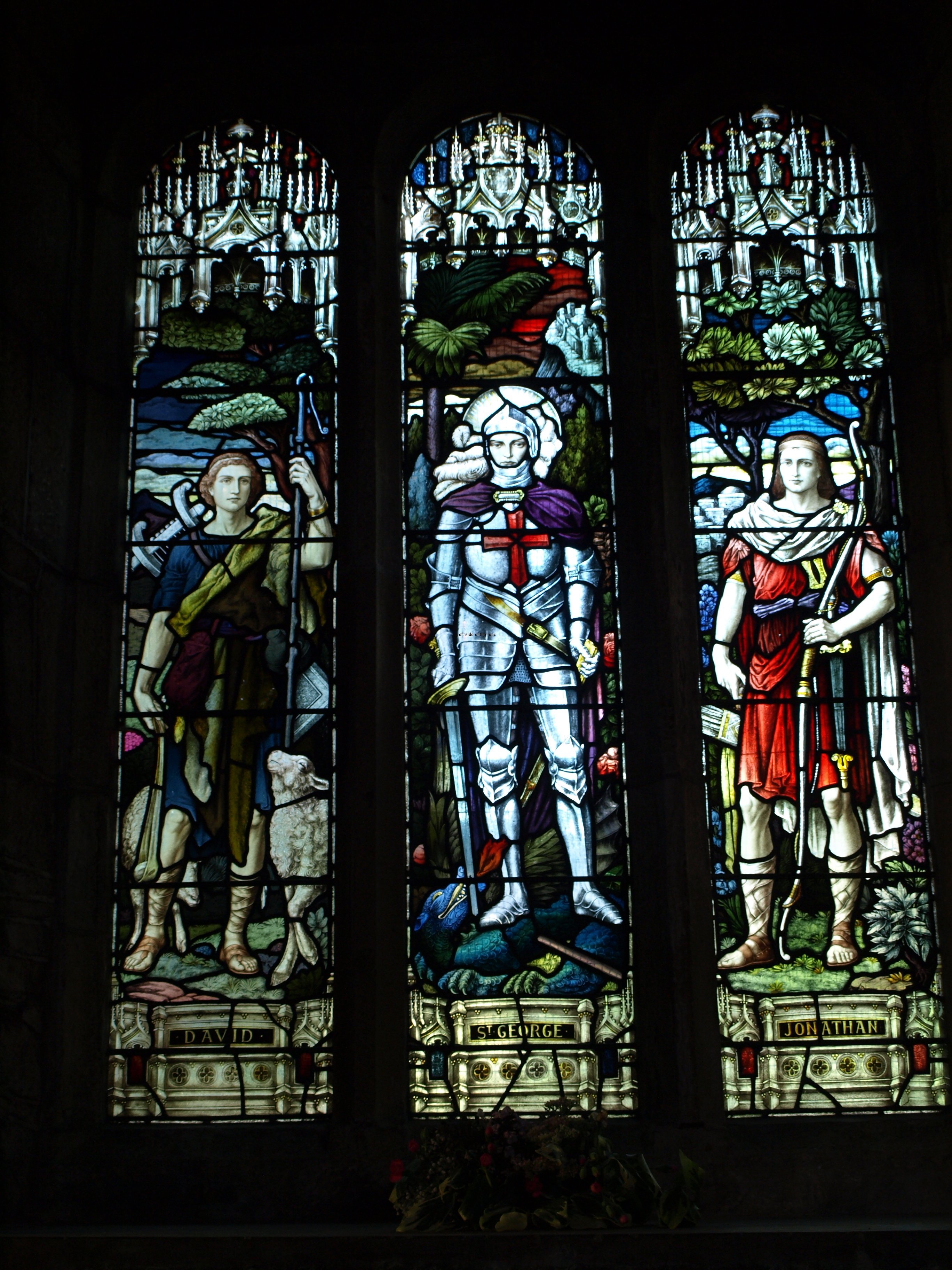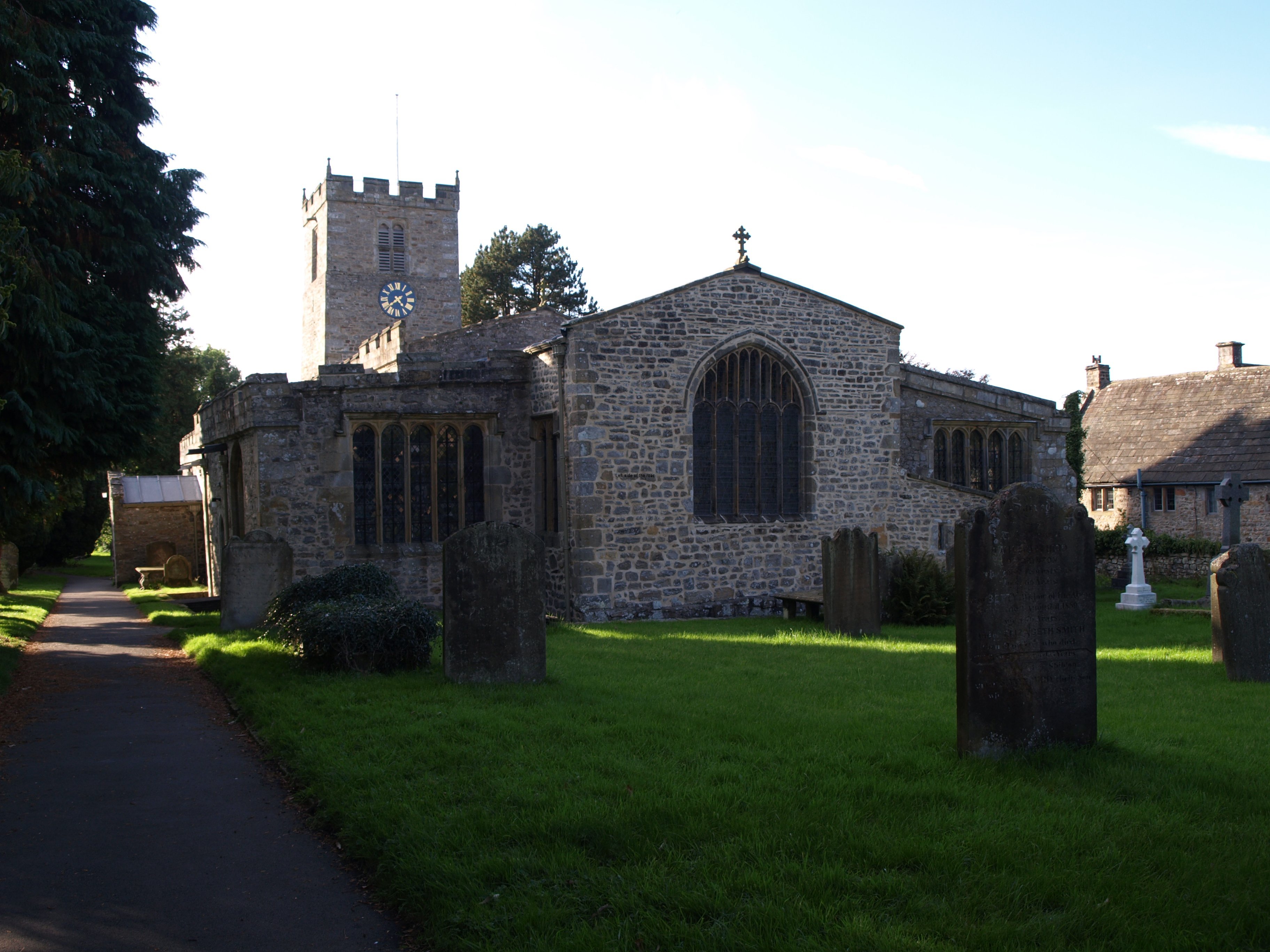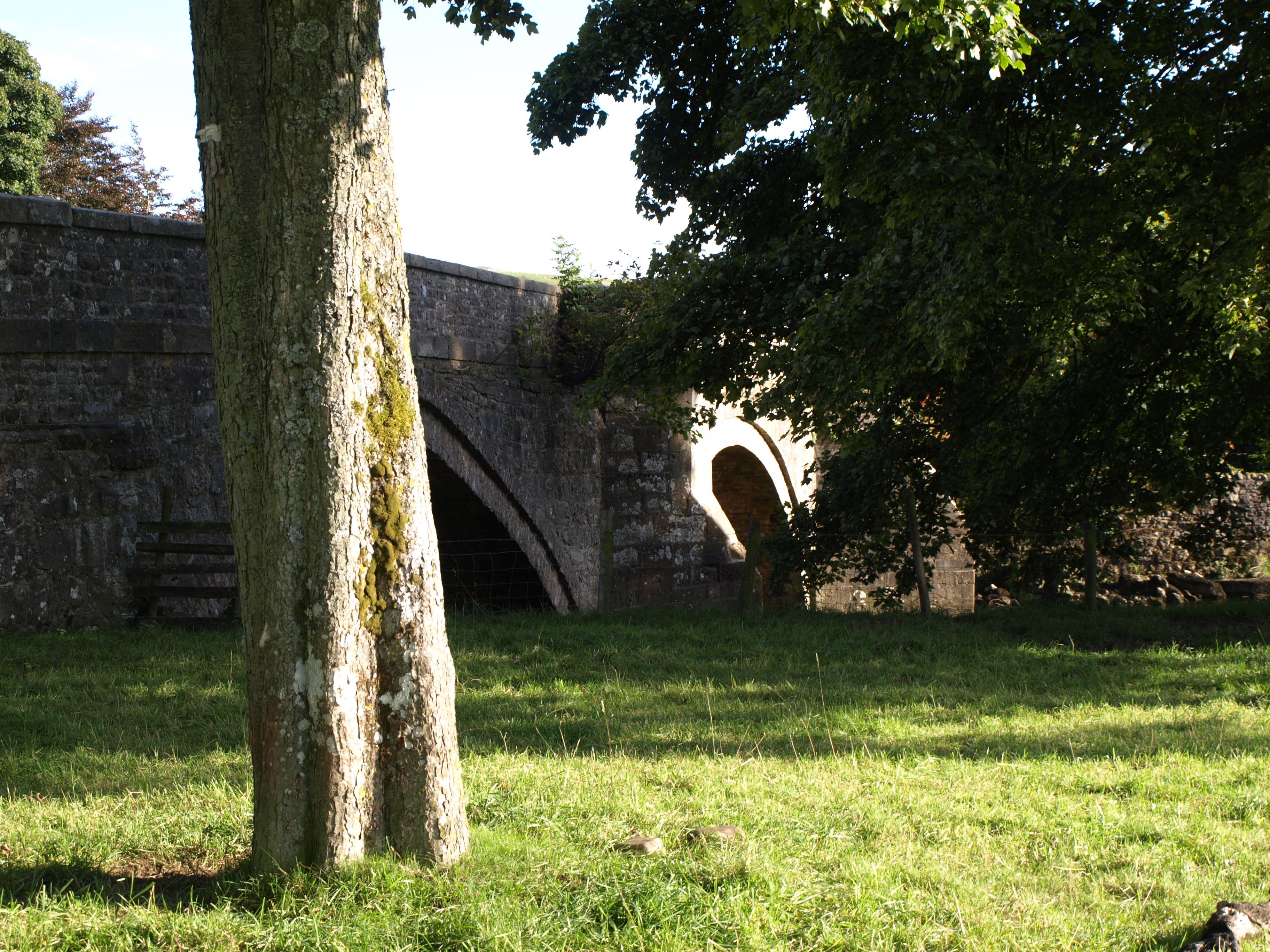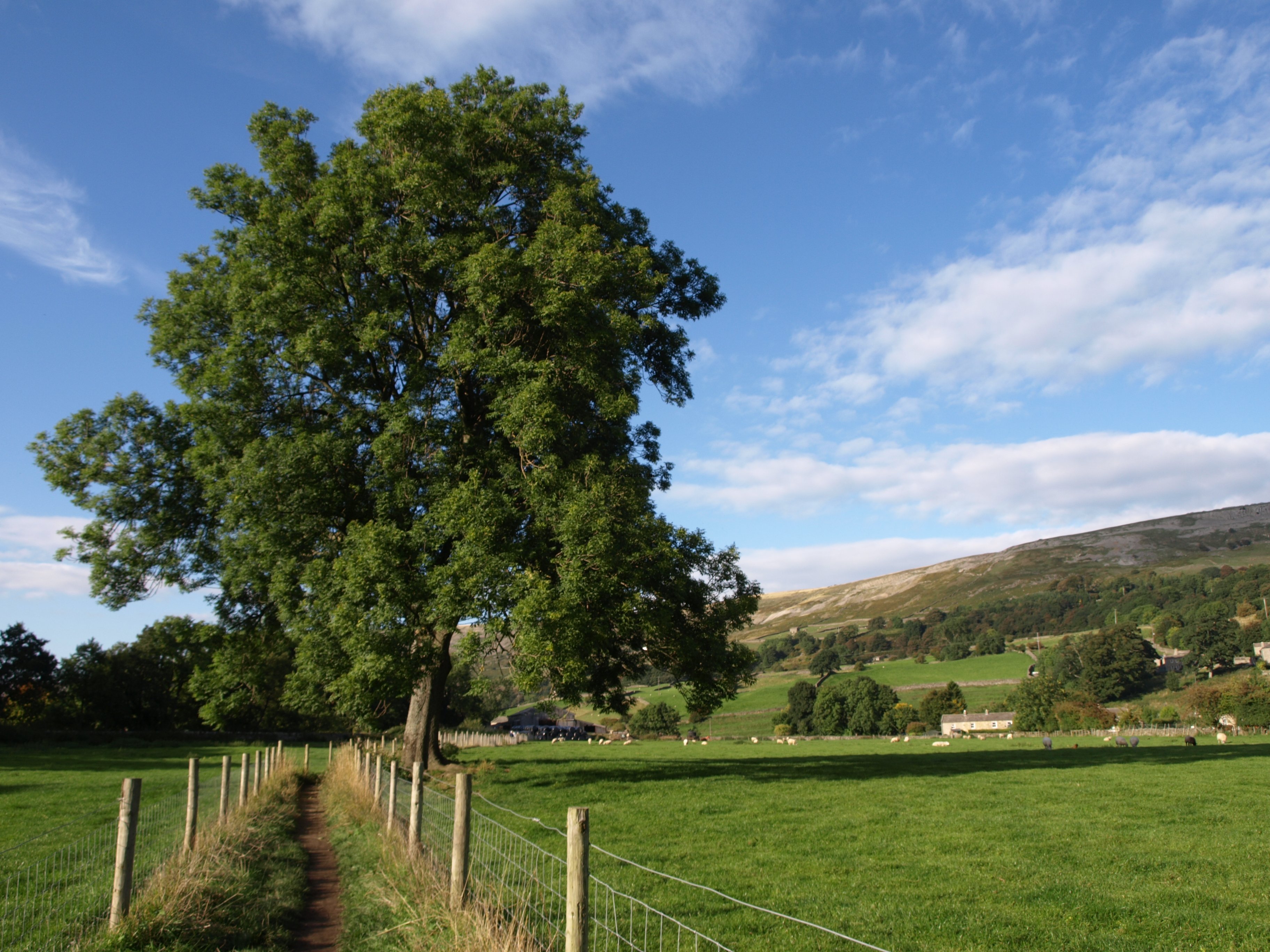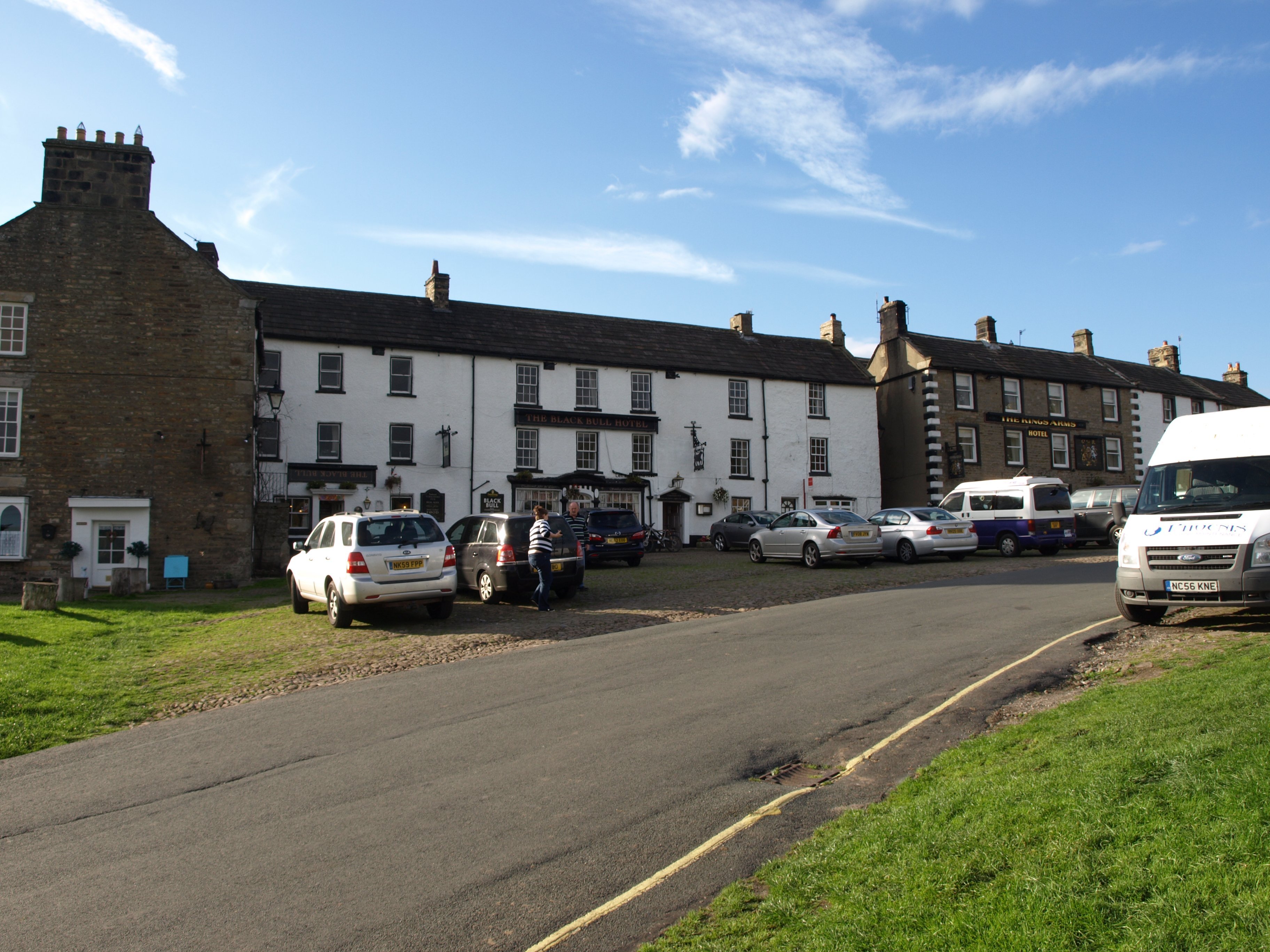Chapter 12 – Catterick Bridge to Osmotherly
The beautiful day in early autumn
Weather wise this worked out to be the finest day of trip so far. First thing there was a thin curtain of mist slightly obscuring my view of the race course, but that was to be expected at this time of year in the River Swale valley. By the time I had breakfasted and got ready to leave the sun had burnt that mist away and the prospects looked good for the long (in terms of miles) day ahead. Long but with barely any ascents, at least until the very end. Wanting to get as far as possible on what looked (on paper) an easy day I had decided to spend the night in the YHA in a place called Osmotherly but that entailed a bit of a climb along forest tracks at the very end of the day.
Although it hasn’t been particularly good for photography, in general, I would be churlish to really complain about the weather. Most days I’ve been walking all day dressed to T-shirt and shorts and that was definitely something I wasn’t expecting at this time of year. So far none of the wet/cold weather clothing I’ve brought with me have remained in the bottom of my bag.
As it was going to be a long day I got an earlier than usual start, walking out of the door of the hotel at 08.30. I’d only spent an hour or so in the bar the night before (there was some sort of function in the hotel, a wedding, I think, so that meant no dining room after 19.00), going to the bar mainly to see if I could connect to the internet. Not a busy bar but a few people in and the table I sat at was close to a small group of ex-army who were reminiscing about the good old days in Northern Ireland. Are ex-servicemen and women more prone to this reminiscing? Being separate and separated from society in general they establish relationships with others that don’t exist in the same way in civil society. I’m not sure if the military is attractive to those type of people who need to be told what to do and who live in an extended family situation or whether they just become dependent if they stay for any time, especially in volunteer as opposed to conscript armies where resentment is only slightly below the surface.
The dew was still on the grass, but rapidly disappearing as the sun got higher into the sky as the first section took me alongside the banks of the Swale. I’d spent quite a long time within sight and sound of the river over the last two or three days walking but within half an hour it took a turn to the south as I continued on my trek east and wouldn’t come across that particular river again on this trip.
A flat walk, passing through a number of small hamlets and villages, mainly through arable and livestock farmland, but with an occasional, small wood that had survived the efforts of the tractor and the plough. Also today would be the day when I would have the longest stretches on paved roads, but fortunately very quiet ones. Being a Sunday might have made things quieter but I don’t think there would have been a major problem even during the week. Some people don’t like road walking but I have no problem. You can go on sort of semi-automatic, just clocking up the miles.
Today was a near perfect early autumn day. The sun was shining but not beating down. There was a slight breeze at times and those sections that went through the trees were cool rather than cold. It was still early in the year and although some of the trees were starting to change colour there were only a few leaves falling when the wind blew. It was that stage of transition when summer was still hanging on with autumn trying to take control.
And the signs of autumn were all around. The changes in the trees I’ve already mentioned but there was also the explosion of berries on the likes of hawthorns and rose hips, supposedly a sign of a harsh winter to come. Today was the first day I was aware of acorns on the ground and when I passed some of the occasional houses there was evidence of a good crop of apples. Going through the fields of one farm I heard the sound of geese. Looking to either side of me to try to see where they were it wasn’t till the noise got louder that I realised they were flying above my head and looking up there were two small V formations heading south. The other noise of autumn were man-made and came from the tractors ploughing or raking the ground ready for sowing. In one field a large flock of seagulls were following the plough. They were a long way from home as the North Sea was still about 40-50 miles away. It’s difficult to tell just by passing through what the ownership of these farms might be but according to the guide-book many of these farms are big corporations, agribusiness rather than the romantic impression that some have of the countryside of small farmers, who are slowly disappearing as big money gets even deeper into food production.
Those are the sights and sounds of autumn but there’s also the smells. Silage and hay stacks are everywhere. The sweet smell of the silage is stronger when it’s being stored in home-made arrangements, normally a three-sided rectangle made from old wooden railway sleepers and then covered by a huge tarpaulin. This might be a cheaper option initially but probably there’s a greater element of waste and each year more of the silage is now collected and brought together into huge circular bundles and then wrapped up in green or black plastic. I don’t know if there’s any difference in use demonstrated by the colour or if it’s merely by chance.
The other smell of autumn, which wasn’t obvious to me until the end of the day as I prepared to shower and change, is the smell of decay and death. As on a couple of earlier days there were a lot of stiles and brushing pass various plants. Those plants are in their last throes, coming from nothing a few months before they have done what they came to life to do, that is propagate themselves, and now they are dying and that scent of death was passed to my skin each time I brushed against the ferns and bushes. It’s not totally unpleasant but it definitely lacks any freshness that would be the result of such contact if passing through here in the spring.
Even though there’s still quite a way to go this lunchtime I took time out for a drink – although I almost threw it down. My original idea was to just pass the White Swan in a small village called Danby Wiske but as I arrived my will dissolved away and I called in to see why it had been declared NW Yorkshire Pub of the Year for 2012. I don’t know if it had always been a pub as it had more of the decoration and atmosphere of a tea shop. Only a handful of people there, the beer was one I’d never come across before (I noted it down as Ullswater Brewery but can’t find any information about it on the net – strange drinking a beer with a Lake District connection when in Yorkshire but have never come across it there) but it was decent enough and away from tourist prices of the west.
It was as I was sitting down, close to finishing my very quick pint in this pub, that I realised (or more accurately learnt) how slow I must be walking. A youngish woman came in with her son, about 12 (I’m bad at ageing children) and she said that they had come from Richmond and was heading for Ingleby Cross (where I would pass through myself, but not the end of my day). Now I had started from Catterick Bridge about 5 miles to the east of Richmond and they were only a few minutes after me. One of the tricks I had to learn very early on was that with a load I had to slow down, to adopt a much more plodding way of walking as this was the only way to make each days goal without arriving totally exhausted. But I hadn’t quite realised how that new pace had reduced my speed so much. I was about to go anyway but drank up and left, trying to move a bit faster and wondering how far I could get before they overtook me.
The answer was between 6 and 7 kilometres as they reached me just as we were about to cross the railway before Harlsley.
Now they were only walking over the weekend, doing the whole of the walk over a period of weeks. Now I don’t think I’m just being jealous at the speed they were able to go BUT it seems to me that it’s impossible to say you’ve done a long distance walk unless you do it in one go. As I’ve tried to explain in earlier posts it’s not just the physical challenge it’s the psychological, knowing that you have to move on whatever. And anyway, things start to hurt, wear out, break down after 3 or 4 days walking. Little injuries can become worse and slow you down. If you are relatively fit then these weaknesses don’t show themselves over the course of a weekend. When they passed me a couple of hours later (more or less) I still had about 6 kilometres to get to get to my next goal, the pub in Ingleby Cross, and they just very quickly disappeared into the distance.
But before the pub I had to face and overcome the most dangerous part of the walk – the A19.
Thousands of people a year are now attempting to do the whole of the Coast to Coast, not counting those who might just do a few sections, and yet there’s been no effort whatsoever to make the crossing of that busy main road safer and less of a gamble on your life. The road is a dual carriageway but the traffic moves at same speed, and with the same approach to driving, as on a motorway, with the consequent total lack of regard of anyone trying to cross by foot.
You have to calculate when best to make your dash but it’s not as if you can anticipate accurately how the traffic will react. Crossing roads in Vietnam and China is an art which can be quickly learnt. There you step out into the road, let one lane of traffic pass, then cross that lane, the traffic will pass either side of you and then you just wait for the next gap. Really, when you get used to it it’s very easy.
In this country the drivers are not only becoming worse at basic driving skills and becoming bad at reading the road they are also becoming more selfish. The only world for them exists in their tin box and anything outside is a mere inconvenience.
I got to the centre reservation with no problem. Then the stream of traffic heading south seemed to be constant. Then coming up I could see a lorry on the inside lane and a car just behind it, then ‘a get across the road without being run over’ gap. So I thought that I could start across the road on the empty carriageway, let the lorry and car pass and then get to the other side before anything was too close. EXACTLY at the point I was standing the woman in the car decided that she needed to overtake the lorry. It wasn’t going slow, there was no reason for her to overtake at that point, but she did.
She passed within inches of me but I really doubt if she had seen me. She almost certainly didn’t hear what I suggested she should do as she carried out the manoeuvre that could have waited another second or two without any impact on the time of her journey. If she was racing to create a masterpiece of art, music or literature there might be a reason for what she did, but I think that highly unlikely. She was almost certainly racing back to, or a way from, her debt ridden life with a family that didn’t appreciate her and all that she had to look forward to was a bleak future of the same. Or so I wished on her as I left, without a shadow of a doubt, the most hazardous part of the journey, so far, and headed east towards Ingleby Arncliffe/Cross, why two names for what is nothing more than a village I don’t know – there are things I only think of when I’m typing at the computer and not when actually there so I could ask.
It was about 4 o’clock when I arrived at The Blue Bell Inn. The pub is at a junction of minor roads and there’s a bit of a green in front of it, with the First World War memorial, and an early 20th century water tower (an interesting building in its own right) close by. There were no other customers when I arrived but a few people came whilst I was there, 4 o’clock seemingly the quiet period after the Sunday lunch, and before the evening meal, trade. I only planned for an hour stop as I still had at least another hour before arriving at the overnight accommodation. I ended up staying longer as a couple of people I’d first met a few days before on the way to Keld recognised me and I ended talking to them for a while.
When I did leave it was still a very pleasant evening but the sun was starting to get low in the sky. I was then further delayed as the forest track I had to follow as it went over a hill was full of pheasants. I just came around a corner and they were everywhere. Male, female, chicks of various sides. On the track, in the shrubbery at the sides, in clearings, just everywhere. I’d never seen so many at one time, in fact, in those few minutes I probably saw more pheasants on the track up to Osmotherly than I’ve seen in my life.
At first I couldn’t work out why. OK, it was dusk and I could understand that might be the time they prefer to eat but it wasn’t until I had spent some time stalking them, just quietly moving along the track, with the majority walking ahead of me but some allowing me to pass as they moved into the bushes to the sides, when I noticed blue containers at intervals. As I got closer to one of these and saw a female seeming to peck at a tube coming out the bottom of these containers that I realised that this was their feed. The wild birds were more or less domesticated, coming to the same places, presumably at the same times, to get what the gamekeeper had put out for them.
As I walked further along the track I noticed areas with numbers and can only speculate that these would be locations for the ‘hunters’. If that’s incorrect then I have no other explanation for the numbering. If it was for the killing then it must be (to use an American term, not being able to think of an English equivalent) ‘like shooting fish in a barrel’. If I didn’t have my pack and intent on taking photos (and without a couple of pints inside of me) I think I could have caught some of them with my hands, without having to blast them apart by bird shot.
The light was beginning to fade and although I got quite close it wasn’t the most ideal of conditions for taking pictures but I hope you get an idea of the numbers around at that time.
I wasn’t looking at the time but I must have spent at least half an hour just trying to see what they were up to and when I started walking at a normal speed it was starting to get dark. The delay in leaving the pub and on the track I hadn’t taken into account and it took me some time to find the path off towards Osmotherly, which I reached as it was getting dark.
Going into, instead of out of the village/town, it was much bigger than I expected, didn’t help and was quite pleased when I finally booked myself into the YHA after 7 o’clock, the latest arrival time so far.
A long day but a pleasant one, all things being considered.
So at 19.15 on the evening of Sunday 29th September it was 144 miles down and 56 to go.
Practical Information:
Accommodation
Osmotherly YHA. It seems this was under threat of closure but has been taken over by a private company. I think the same company that runs the Caravan Park next to the old mill – which had been converted into the YHA. Building needs a bit of investment to bring it up to standard. £25.40, includes full breakfast, learnt that I’ll never, ever make scrambled eggs in a micro-wave – it wastes good eggs and comes out the consistency of putty.




